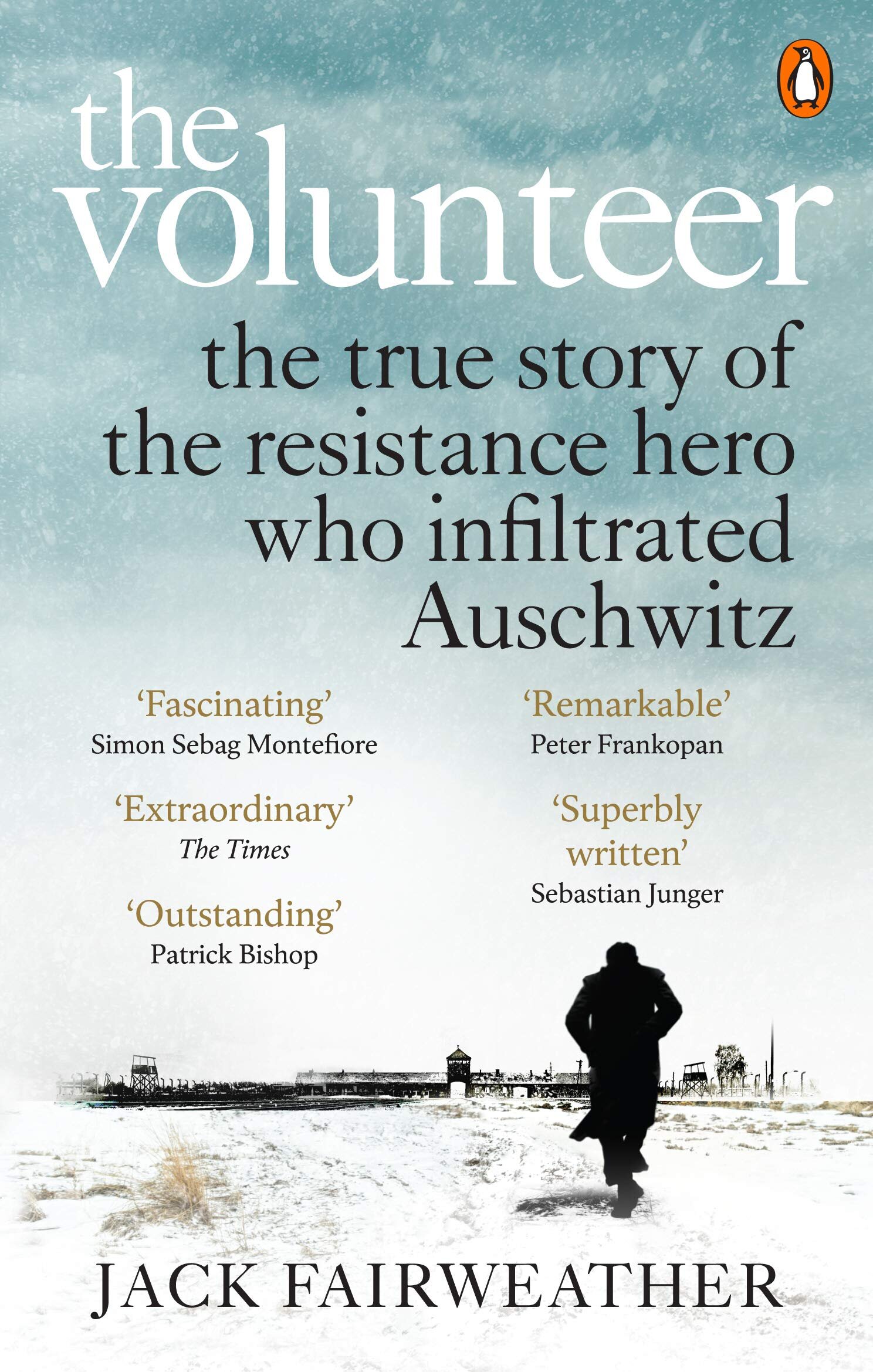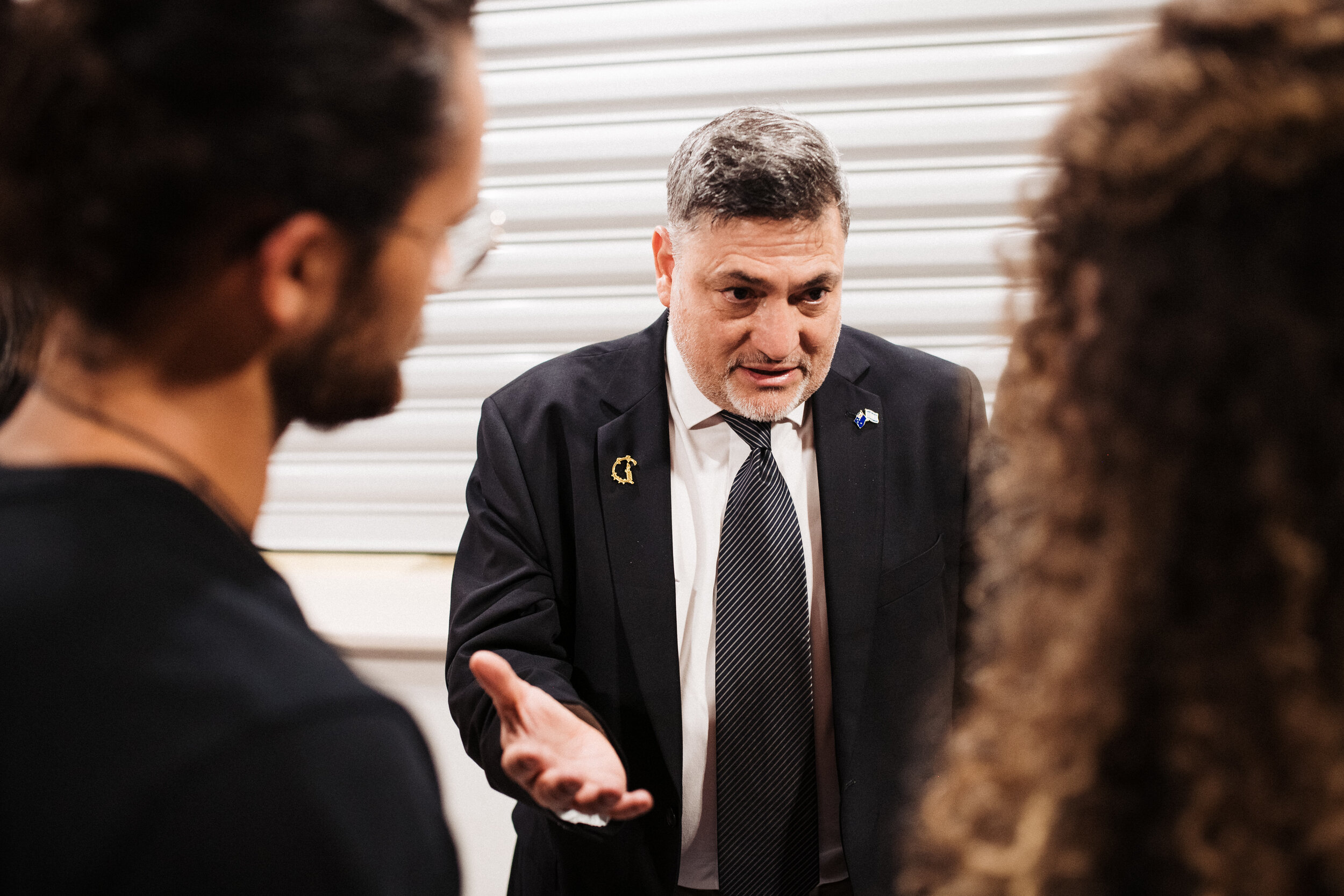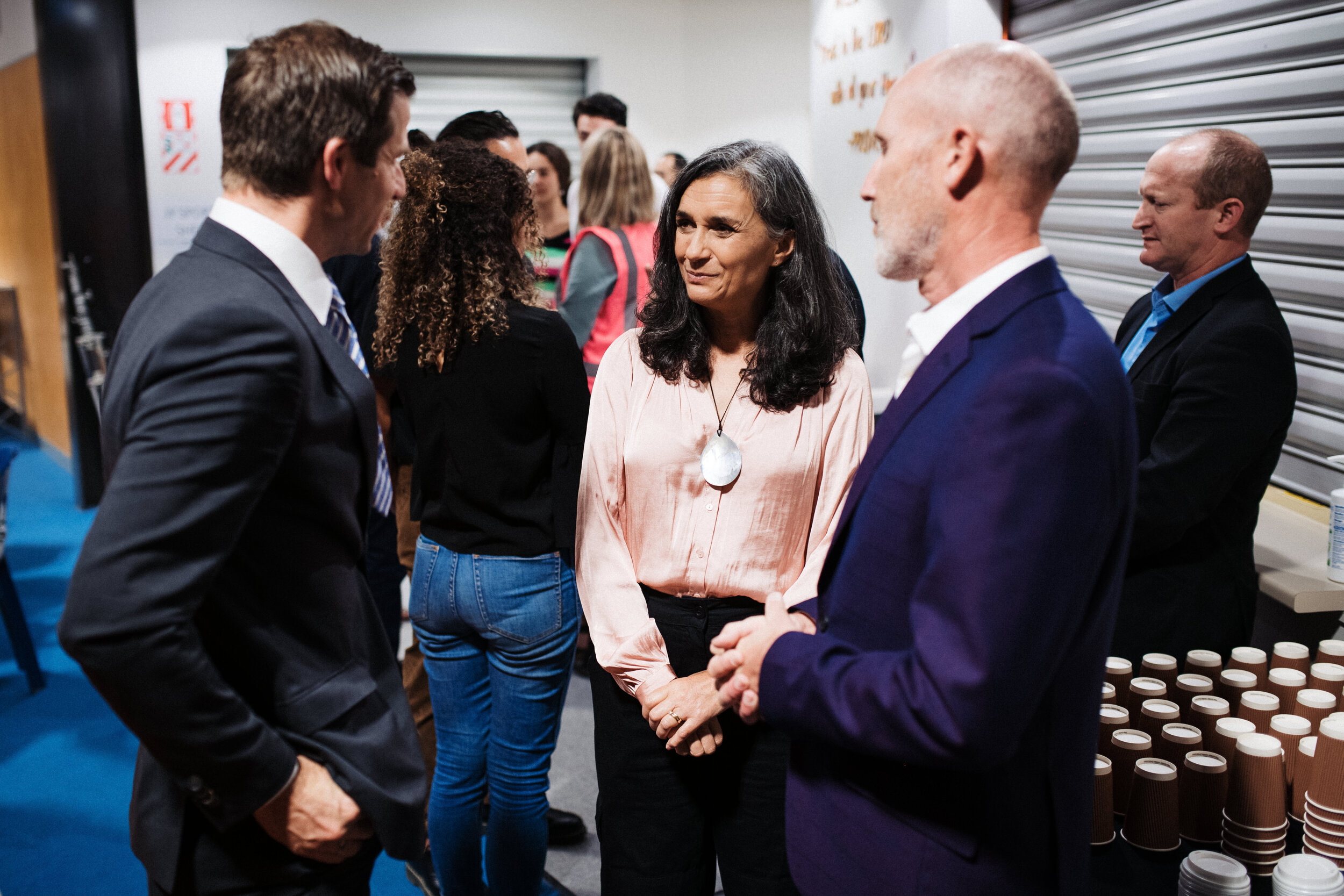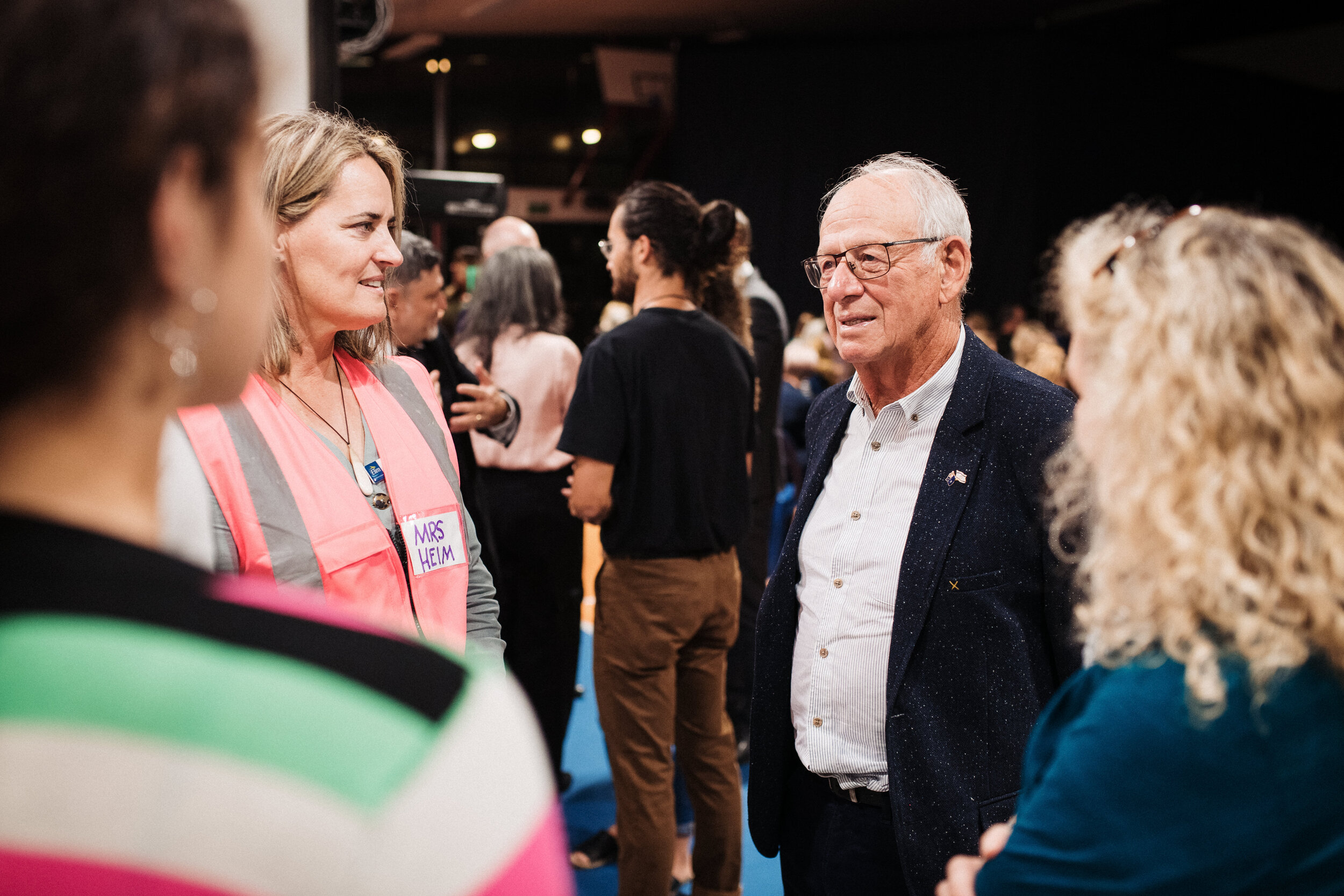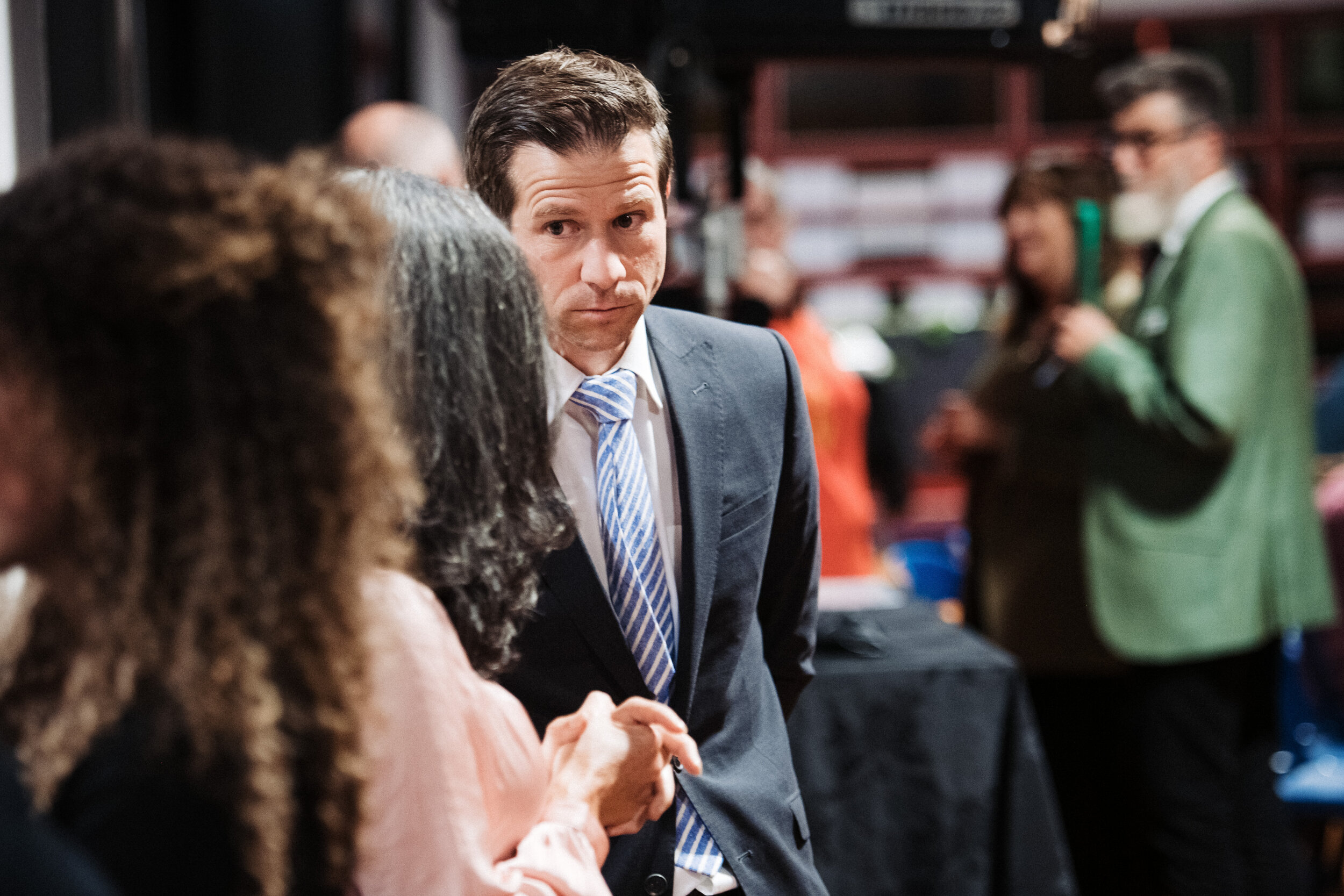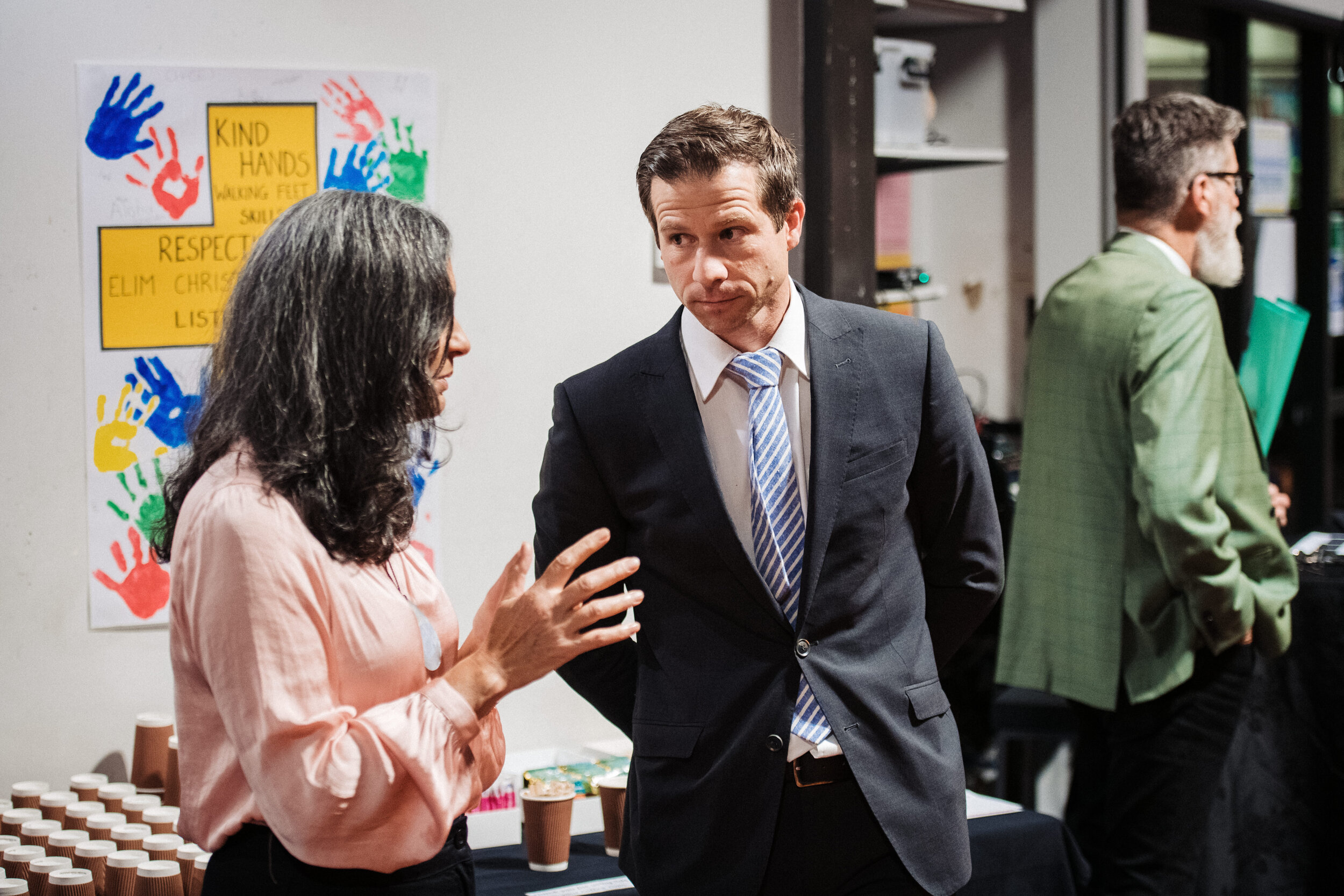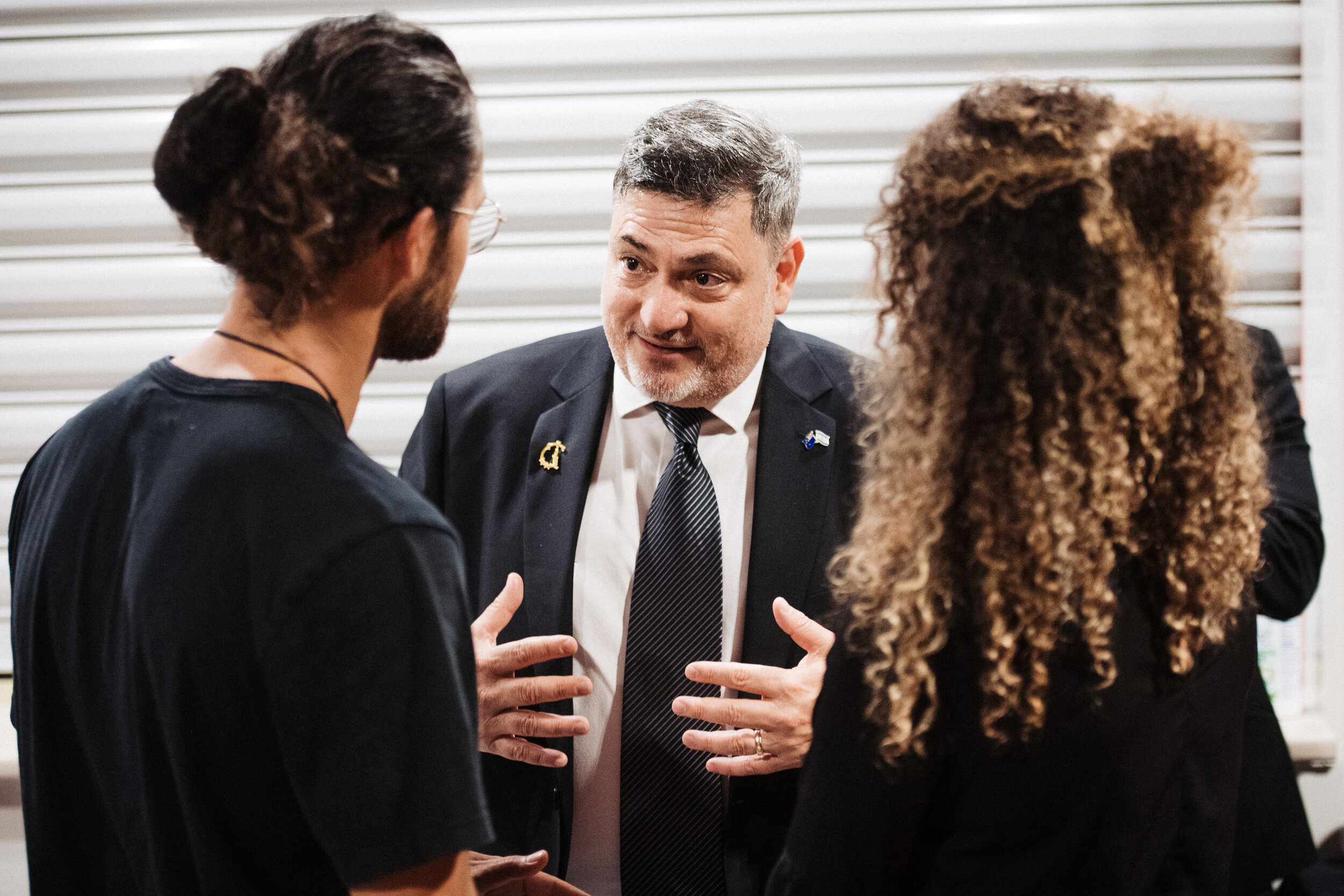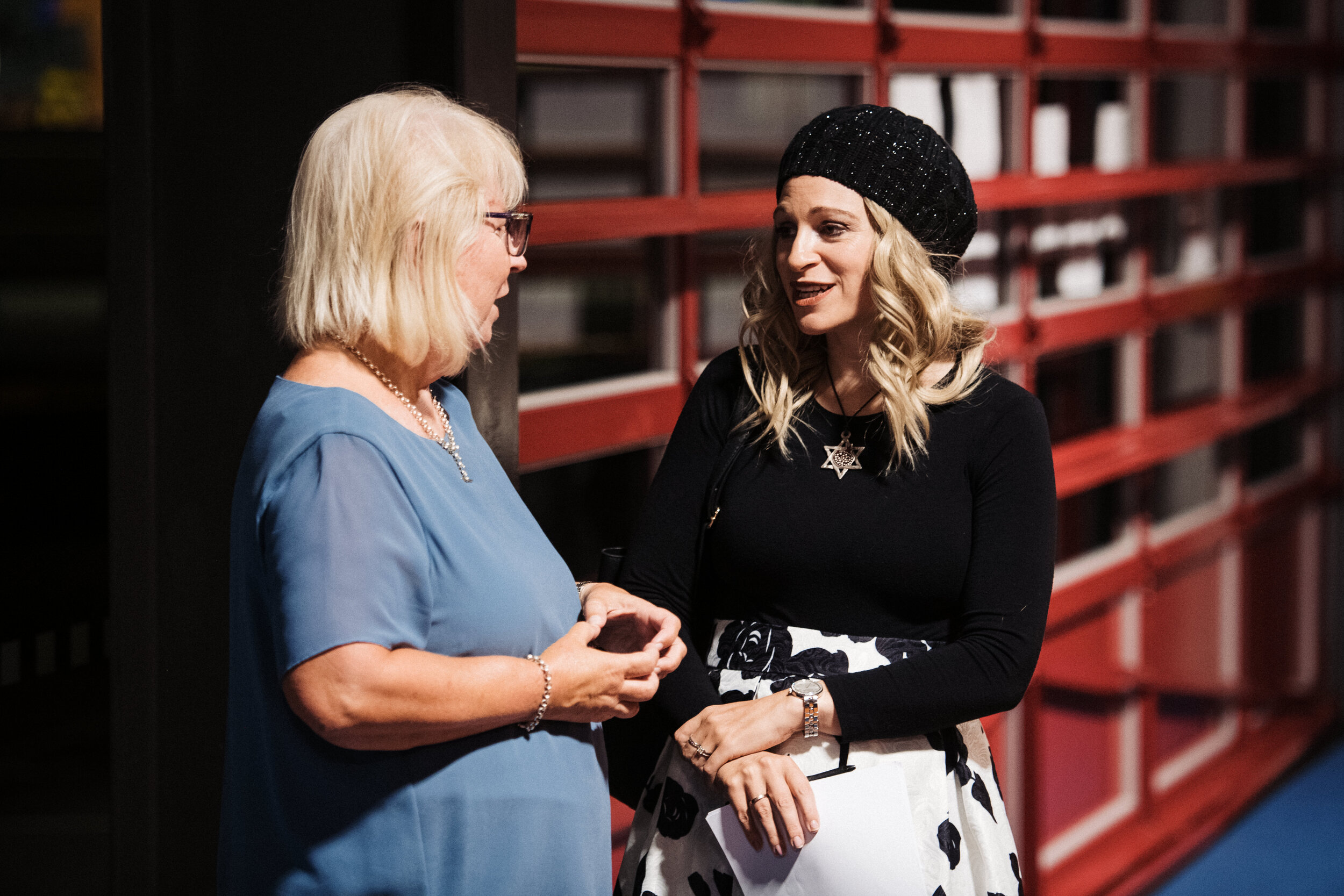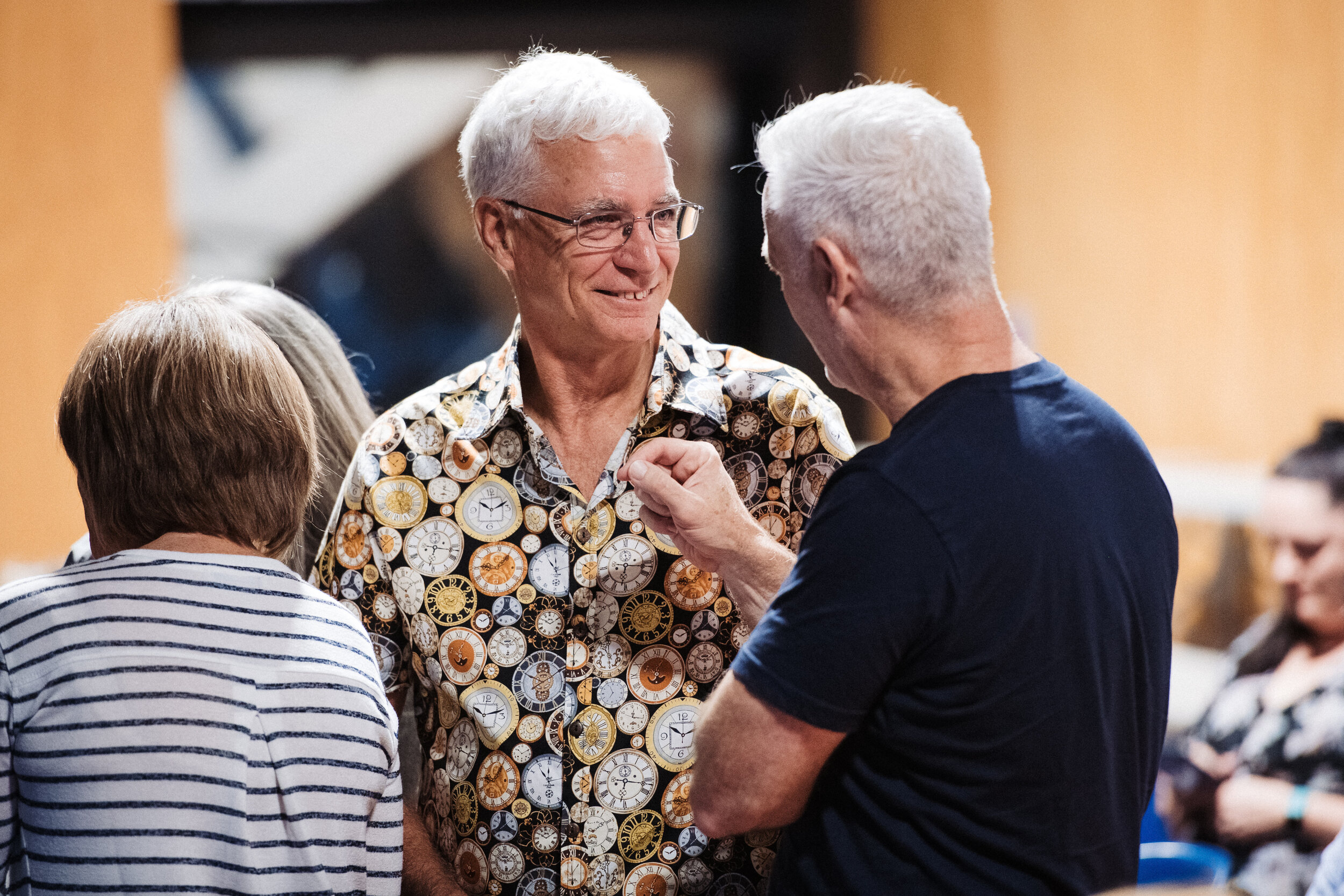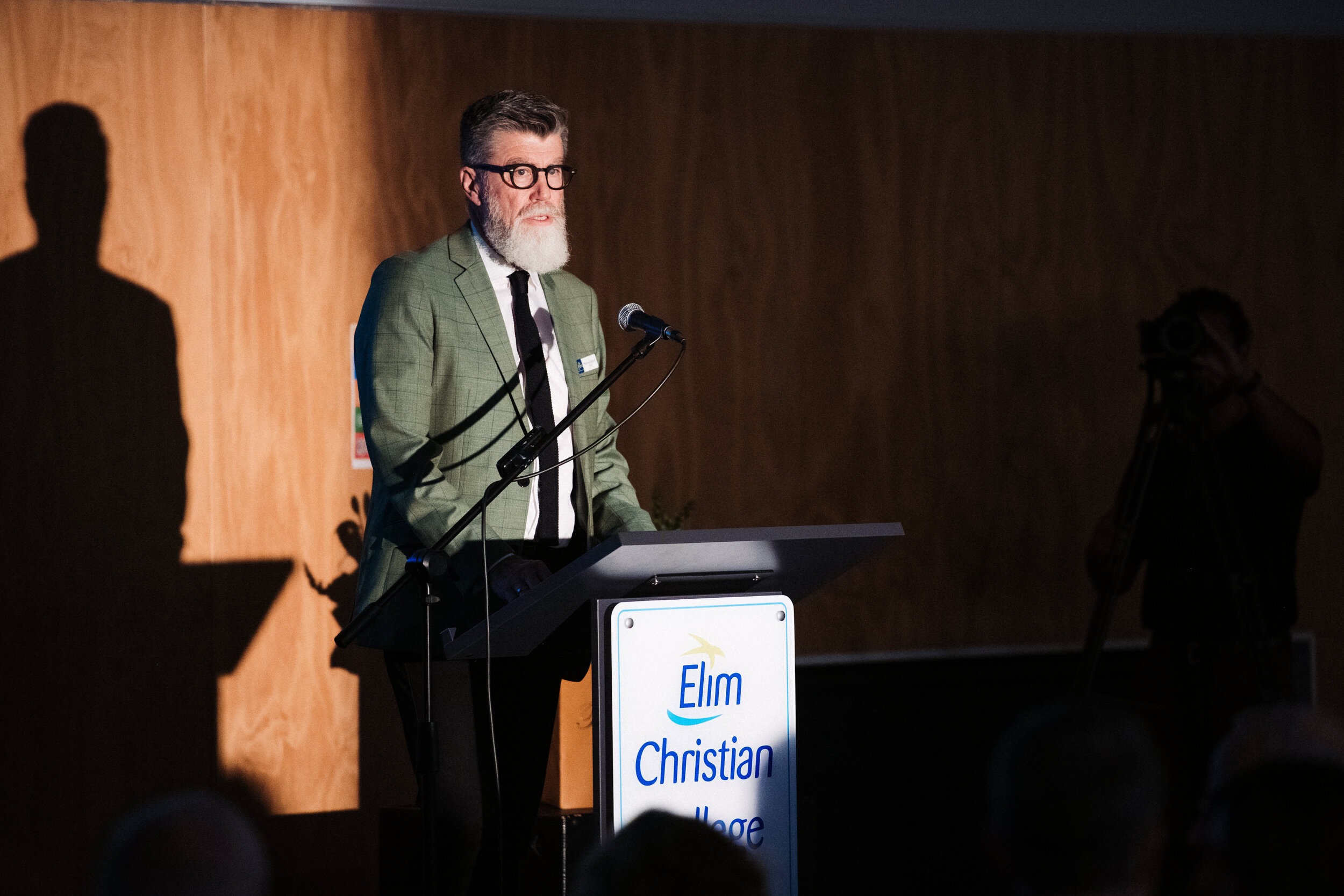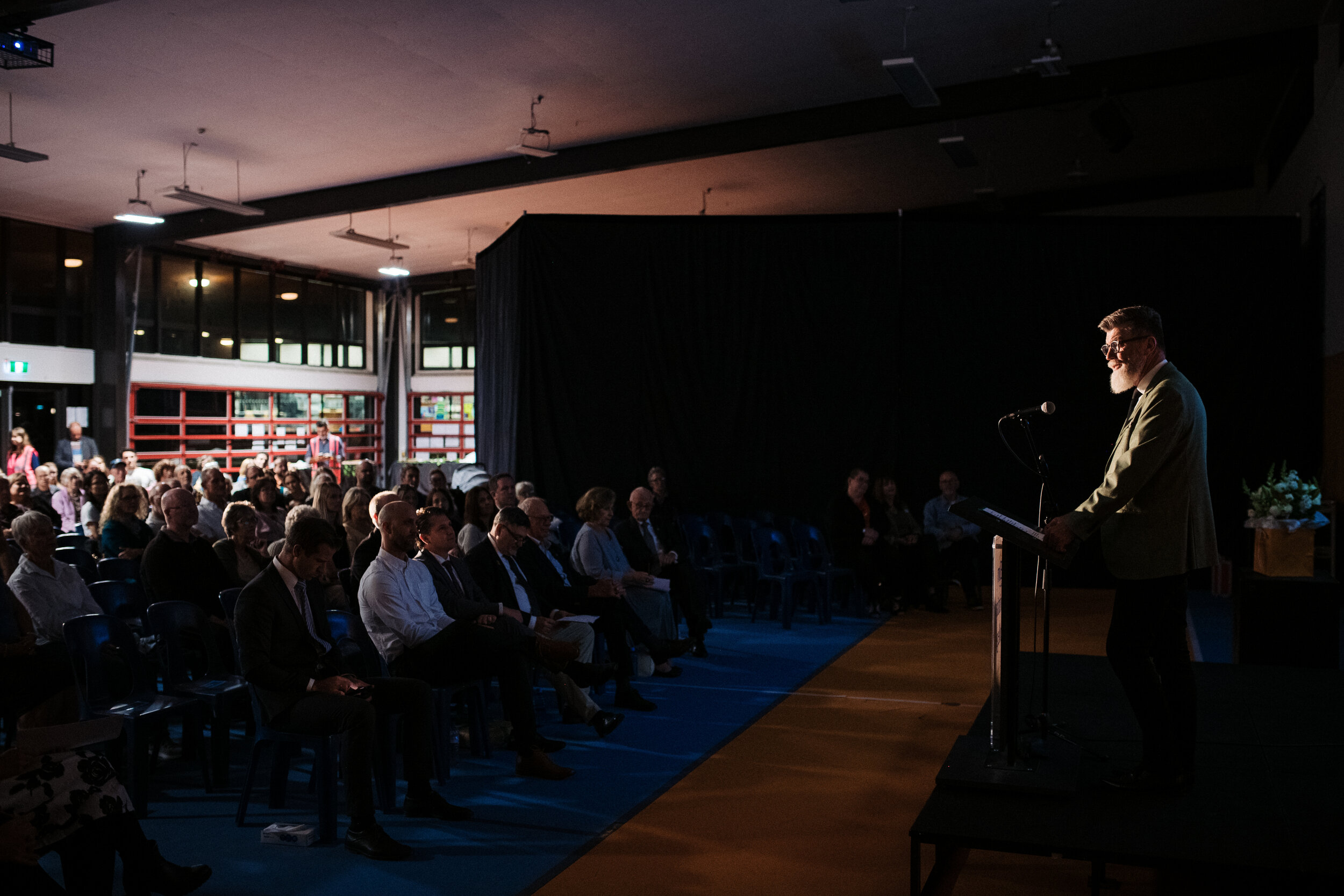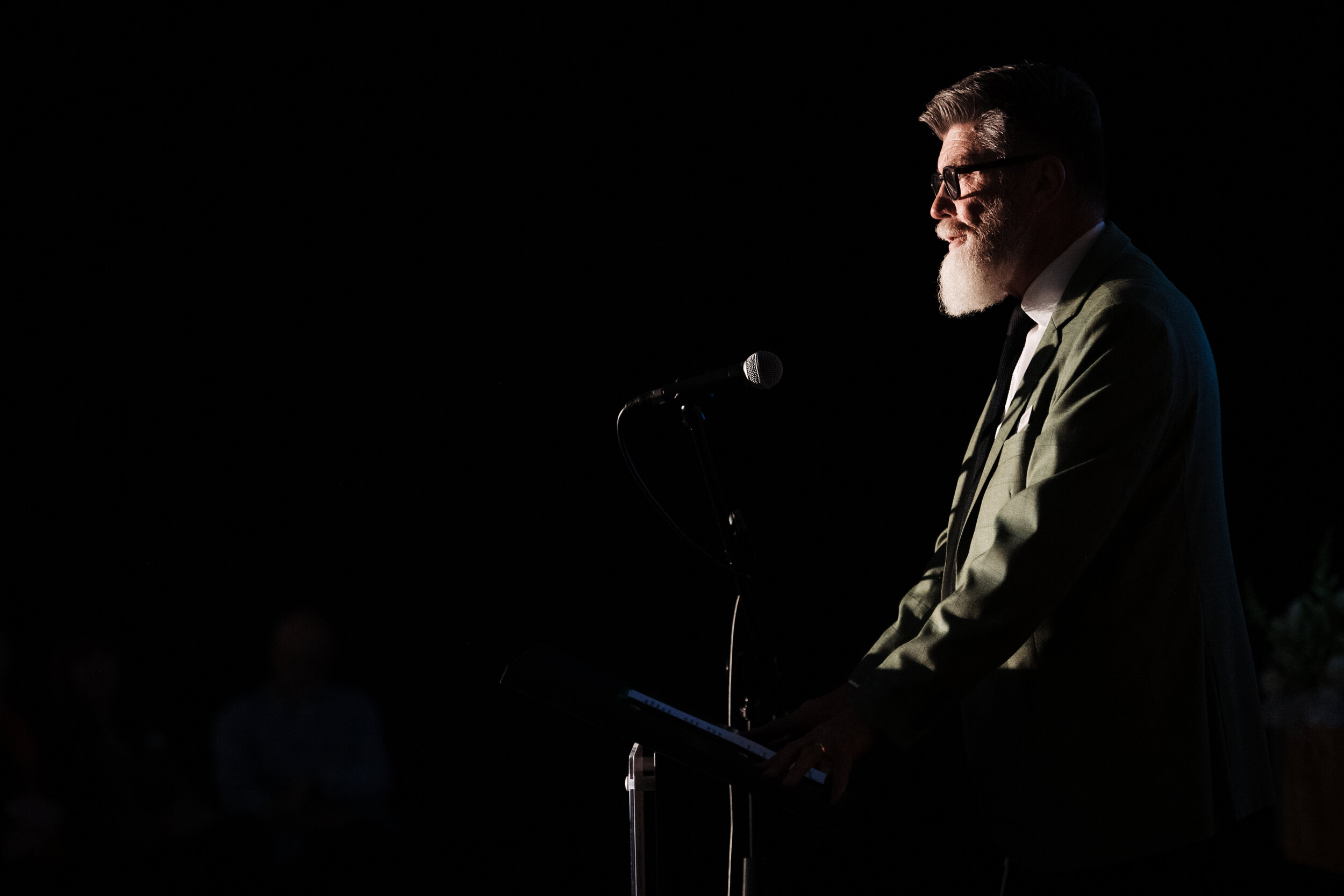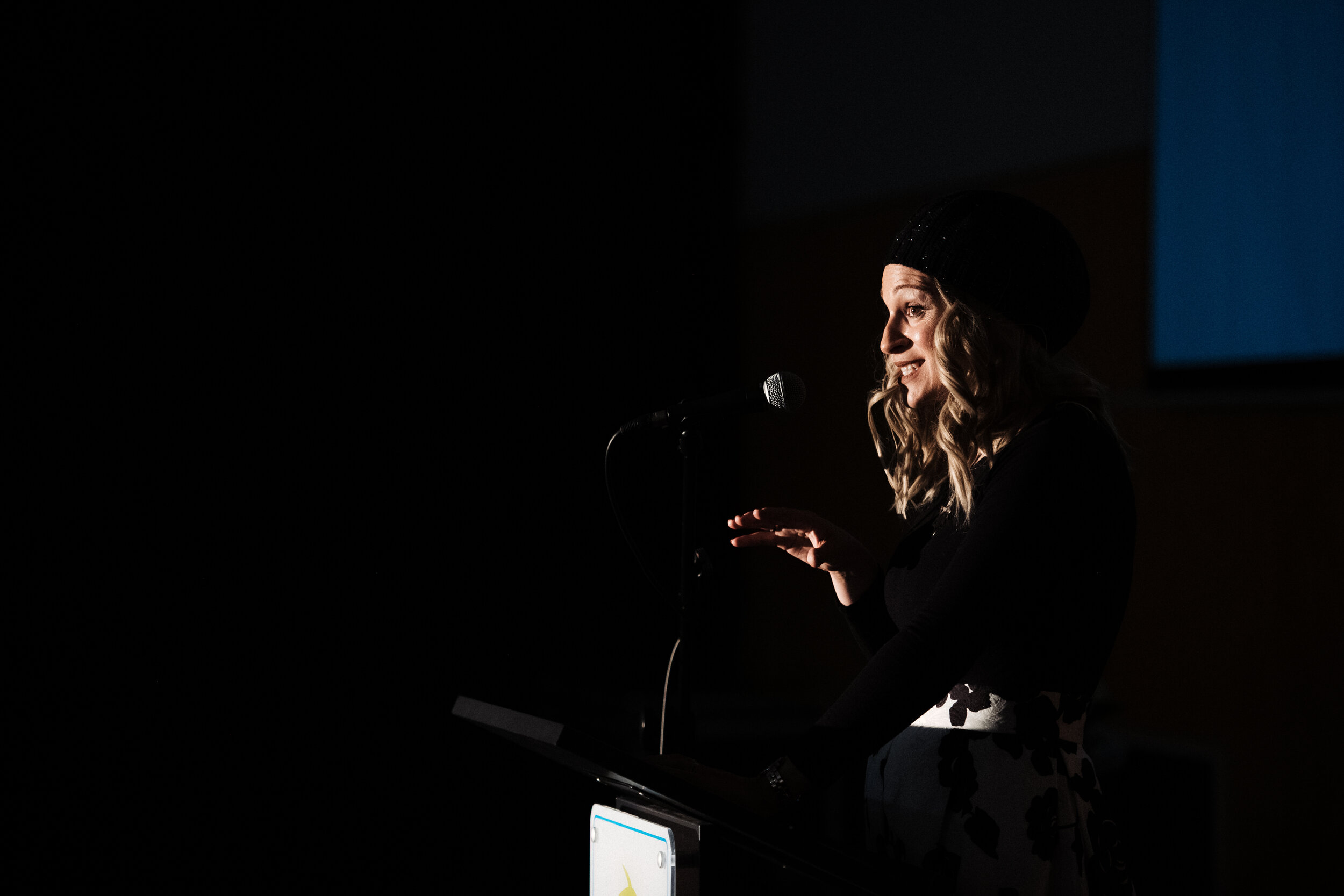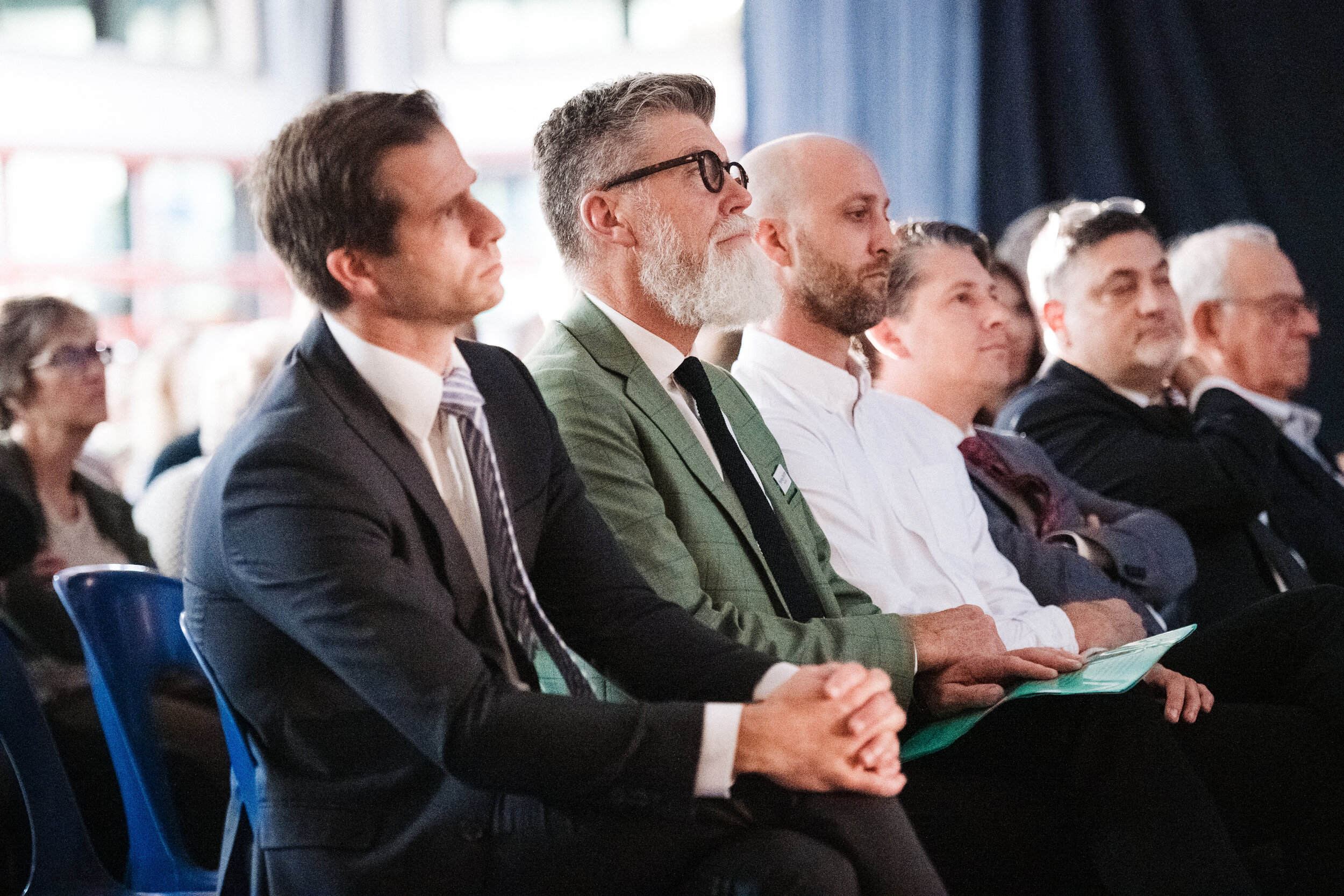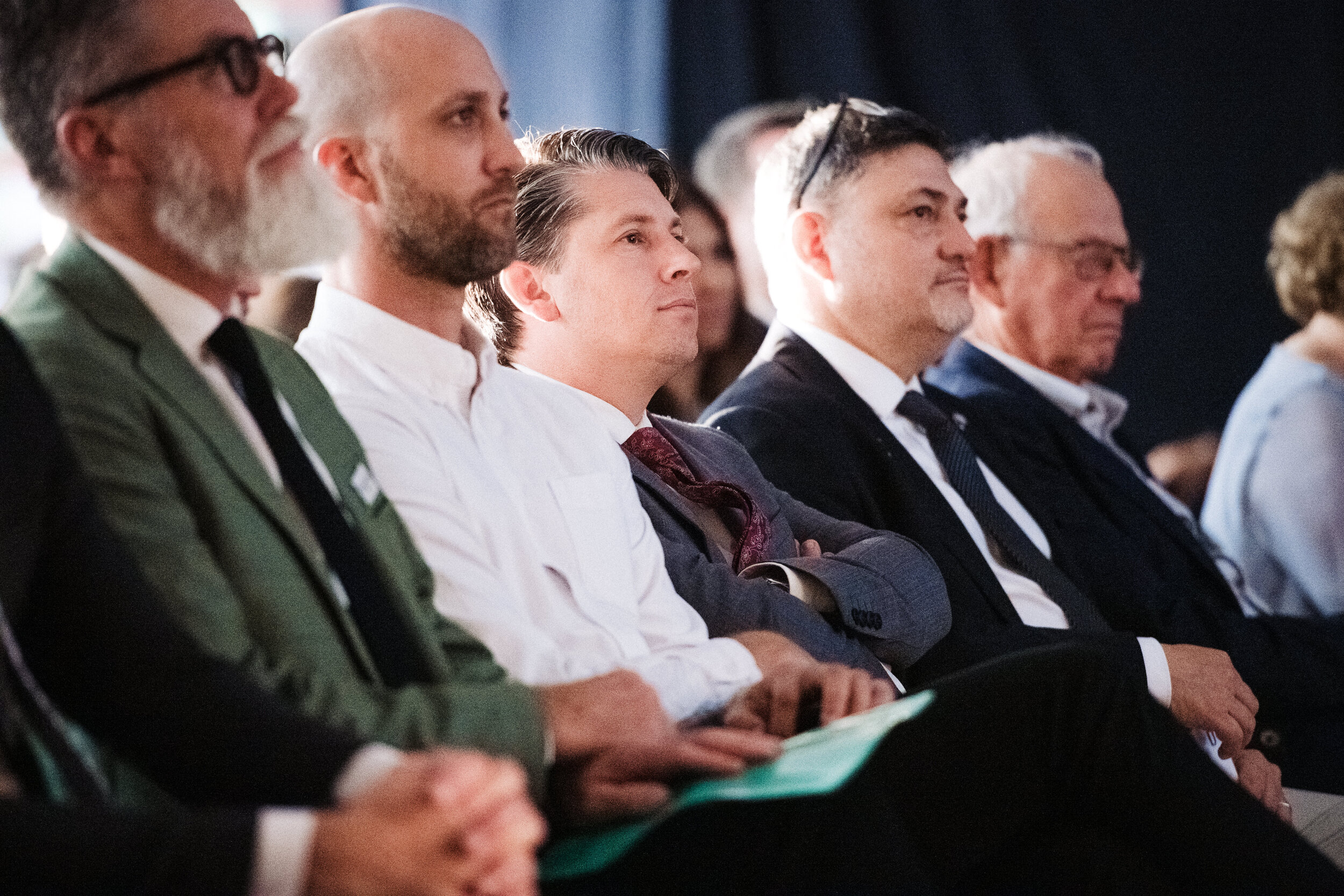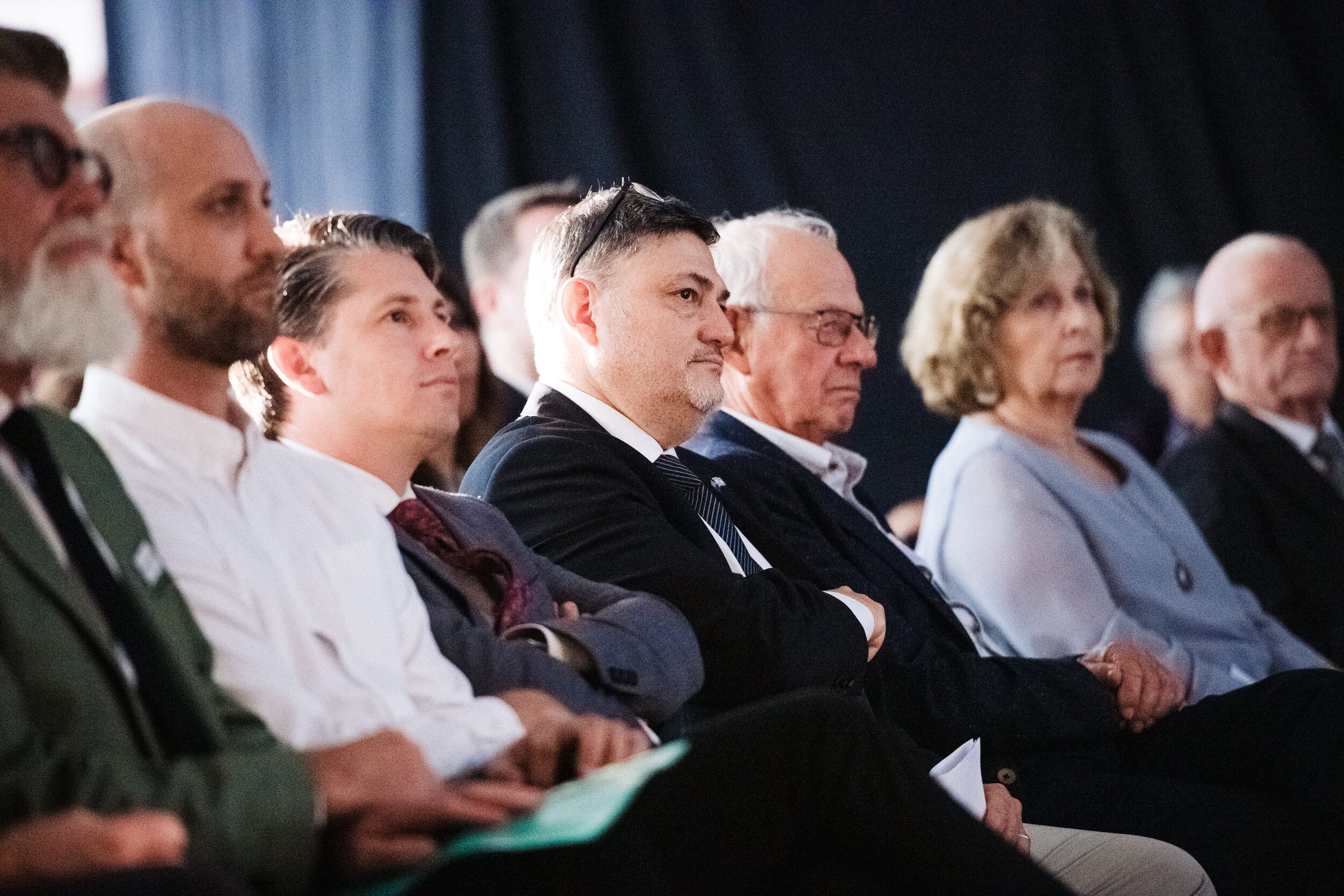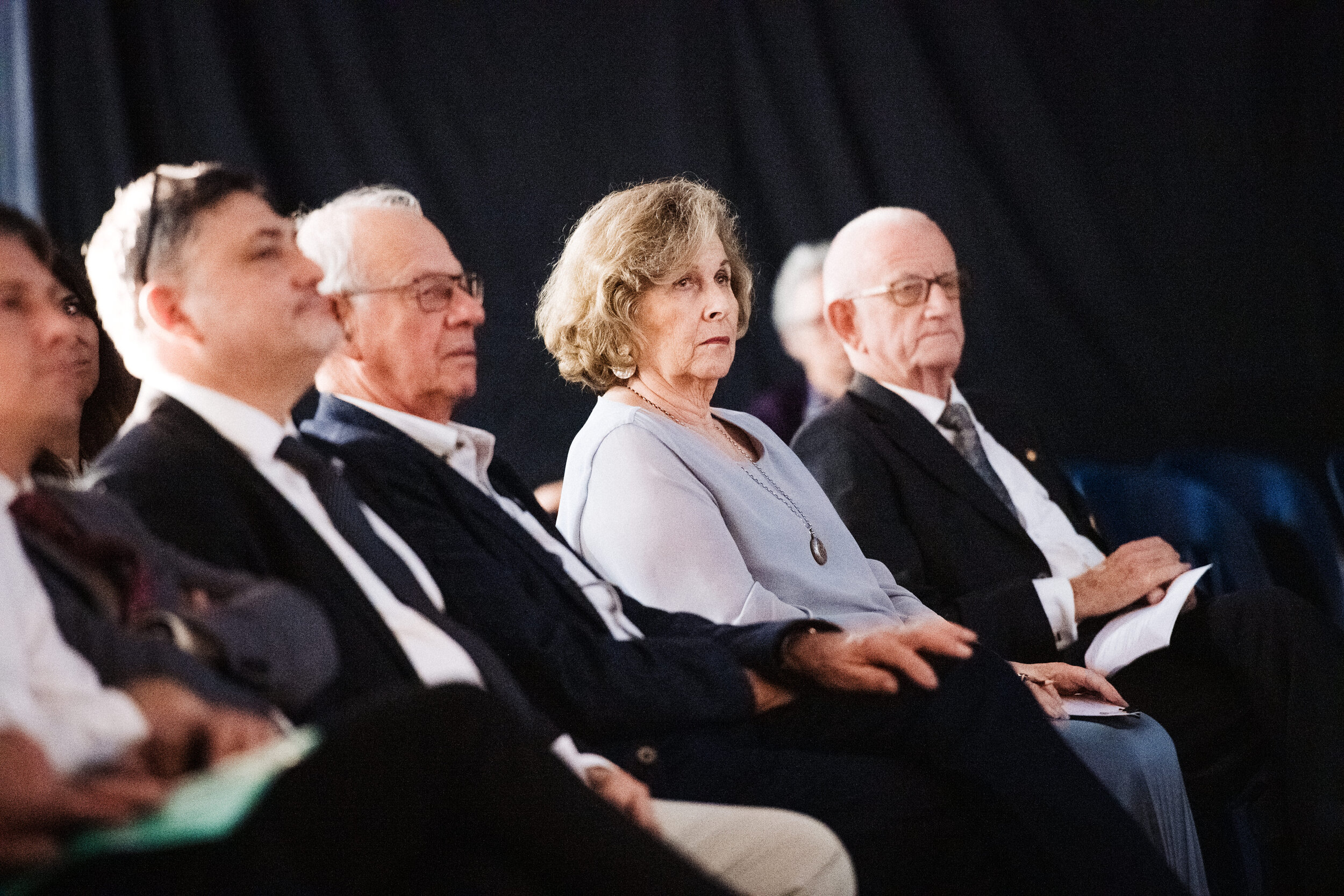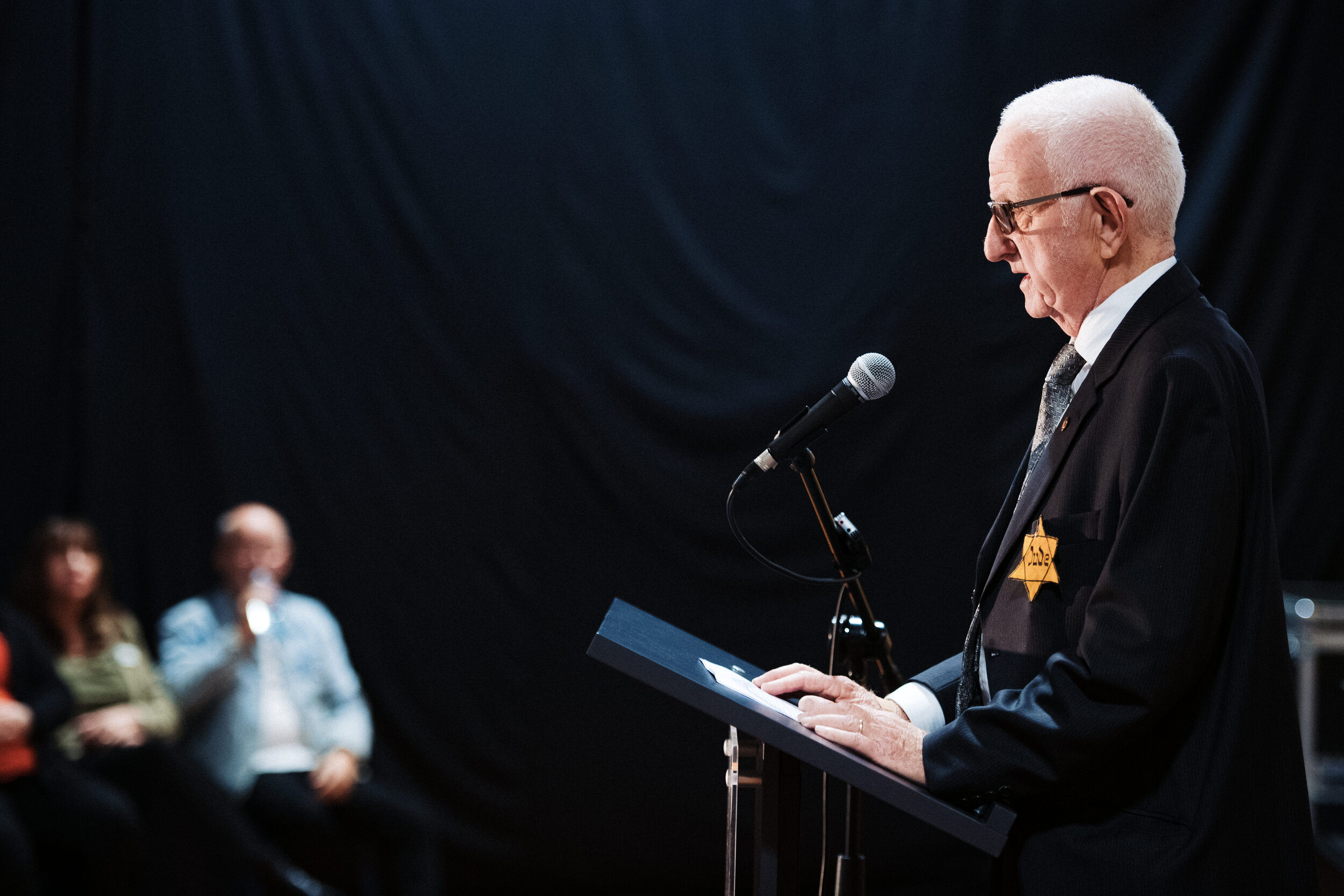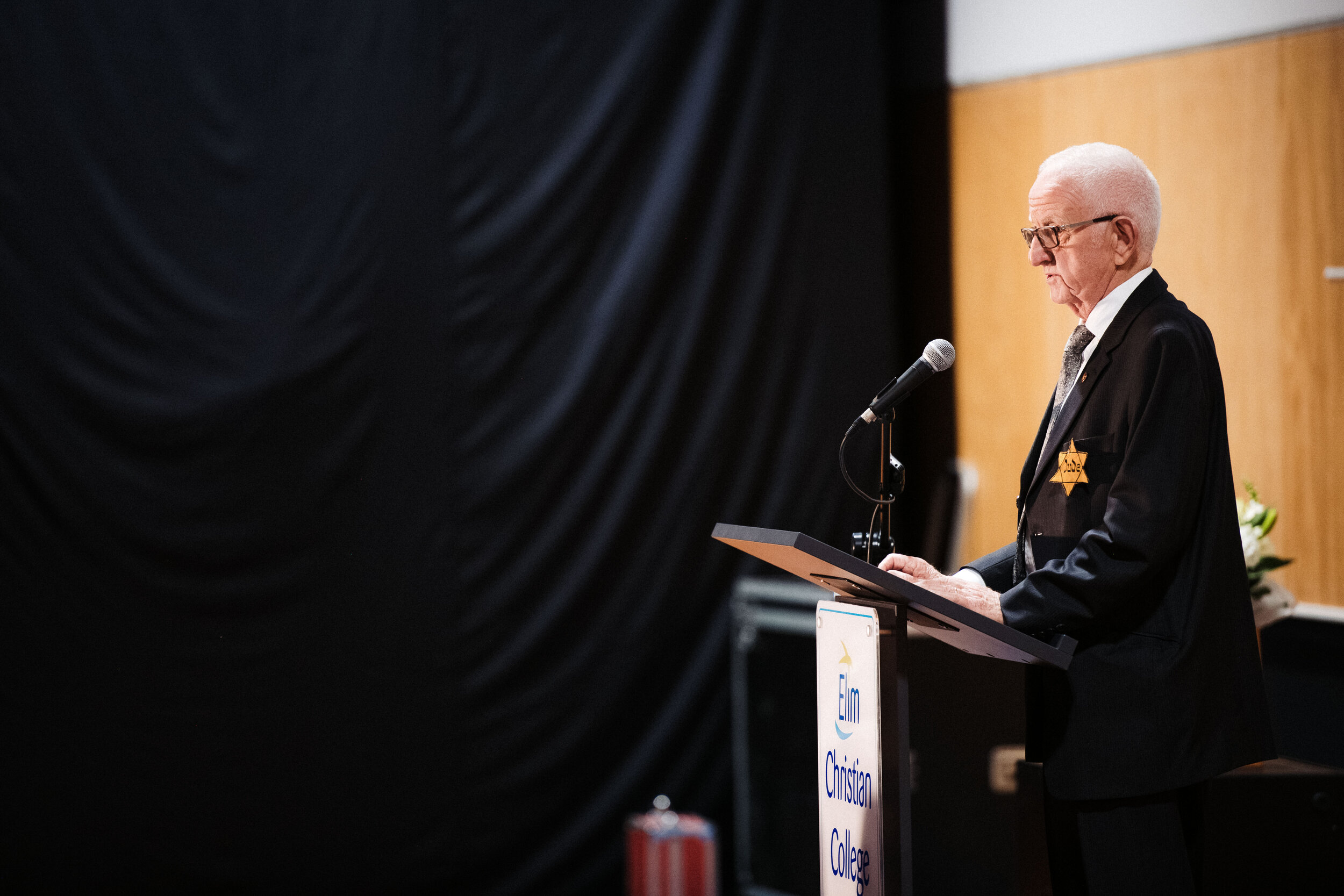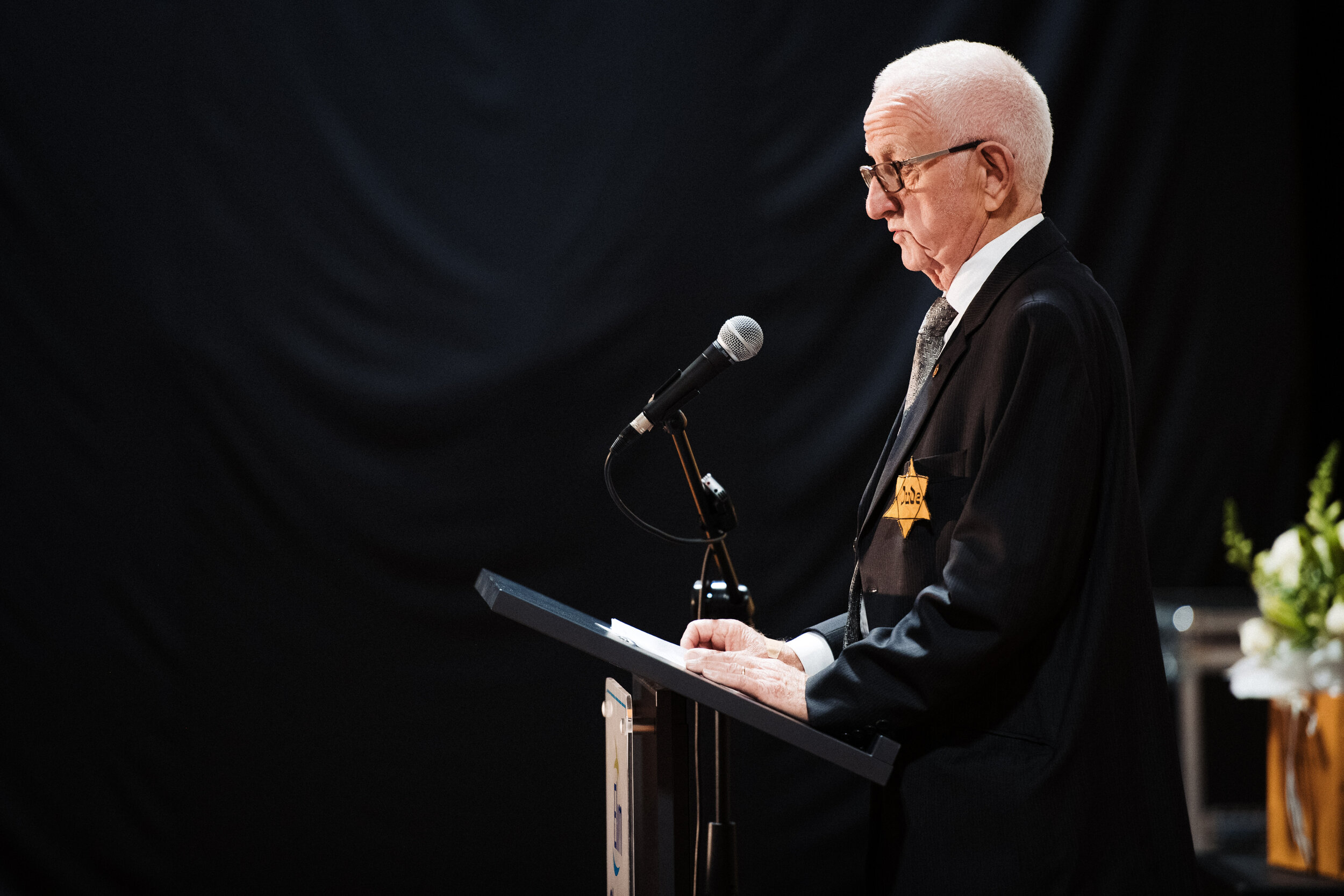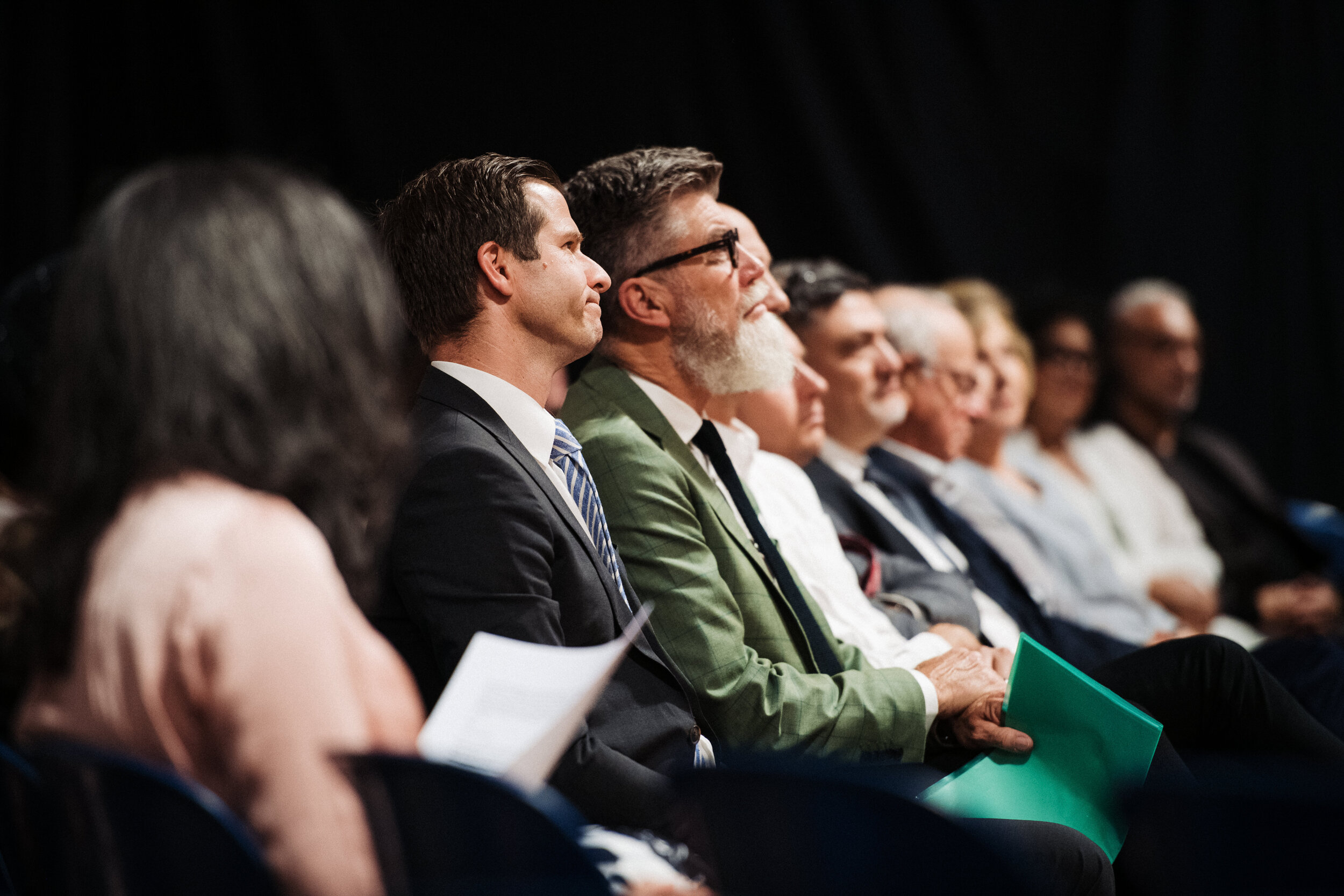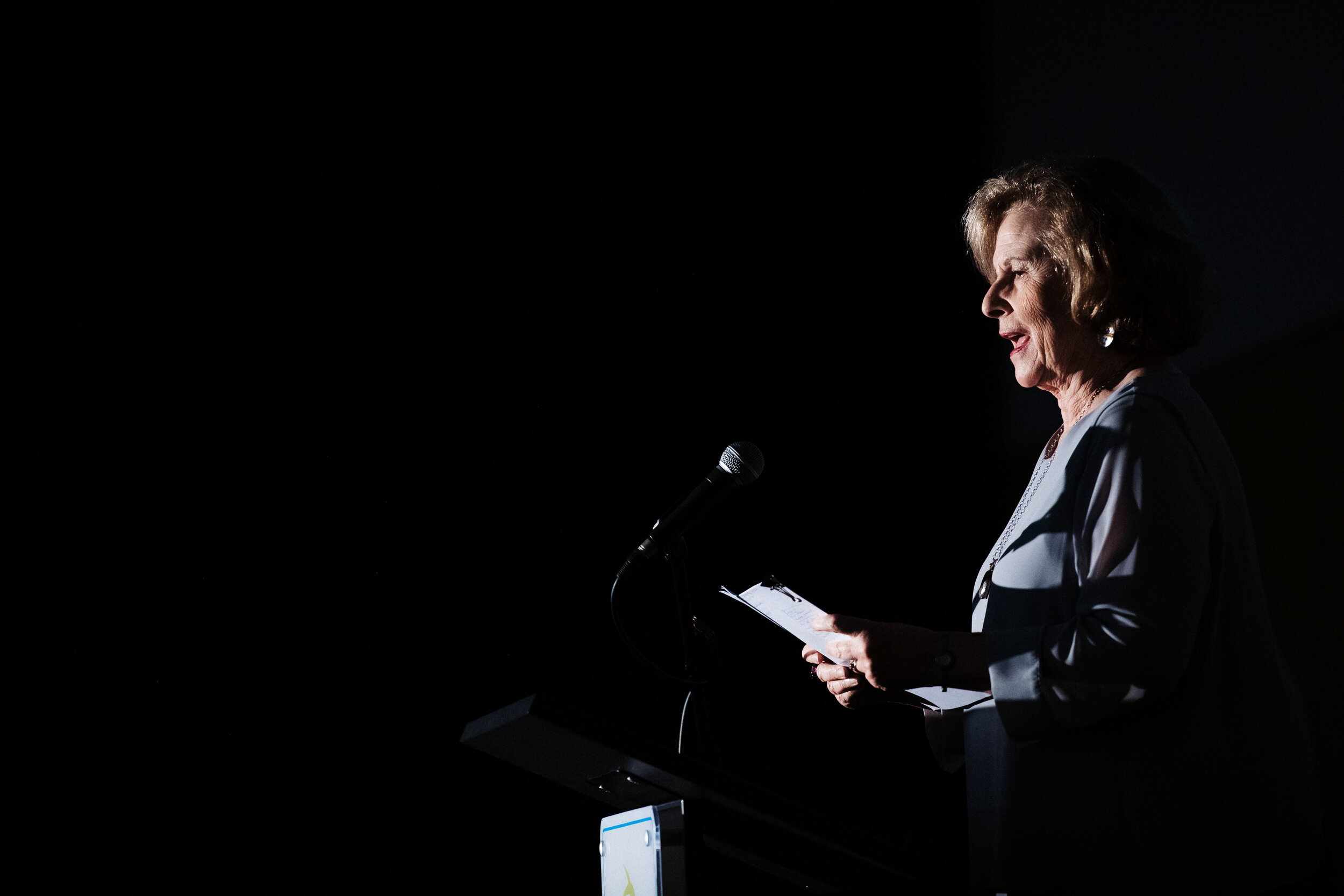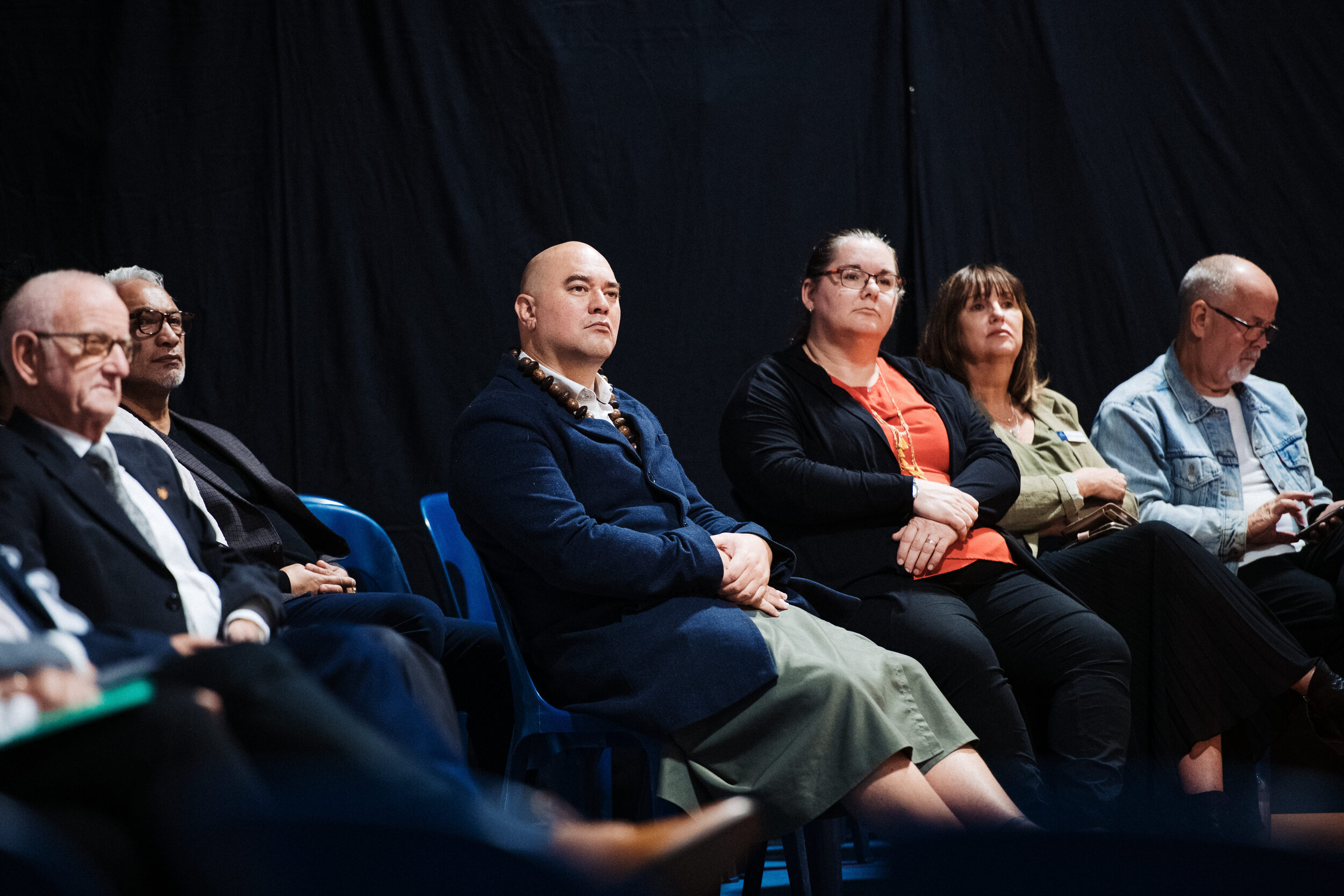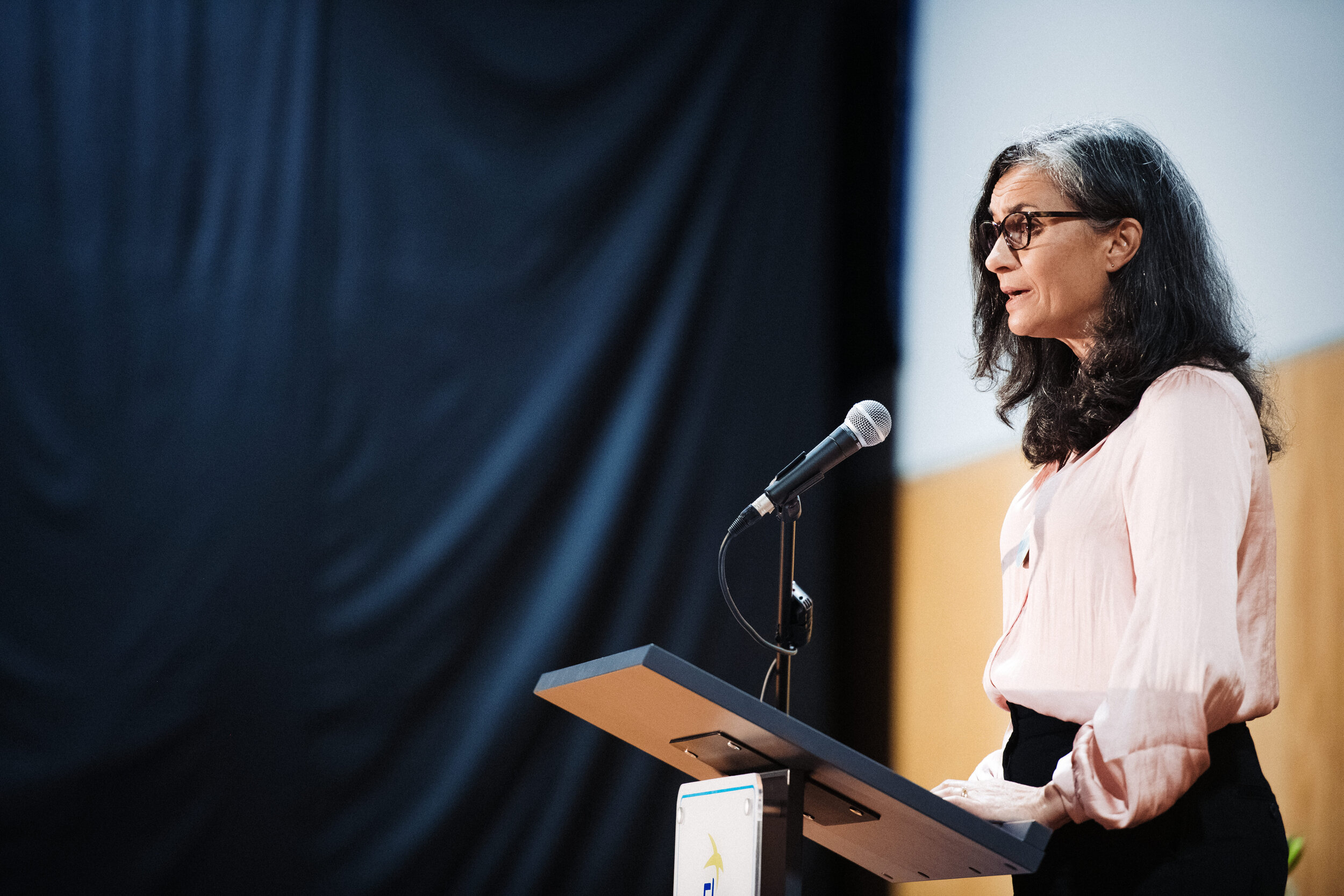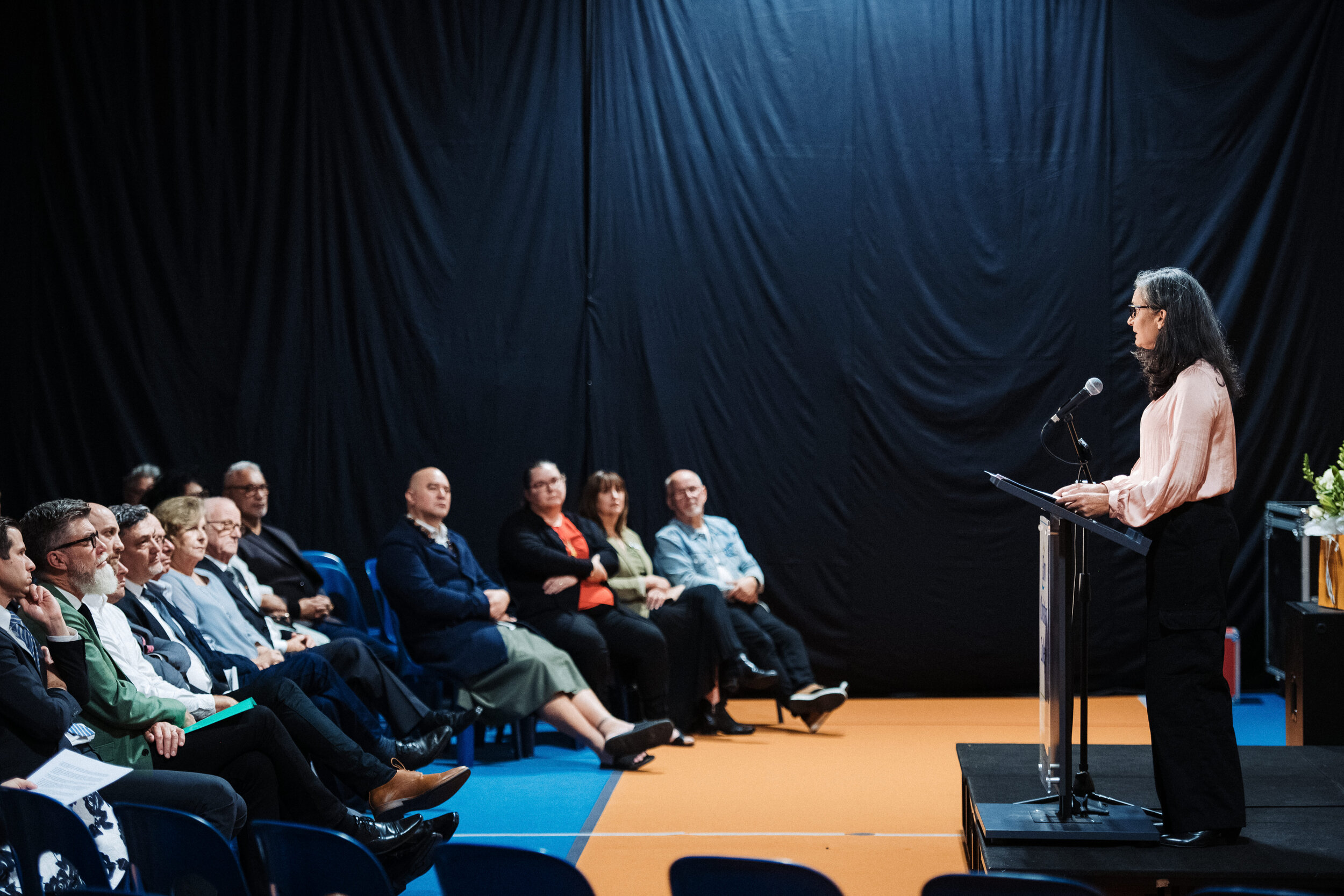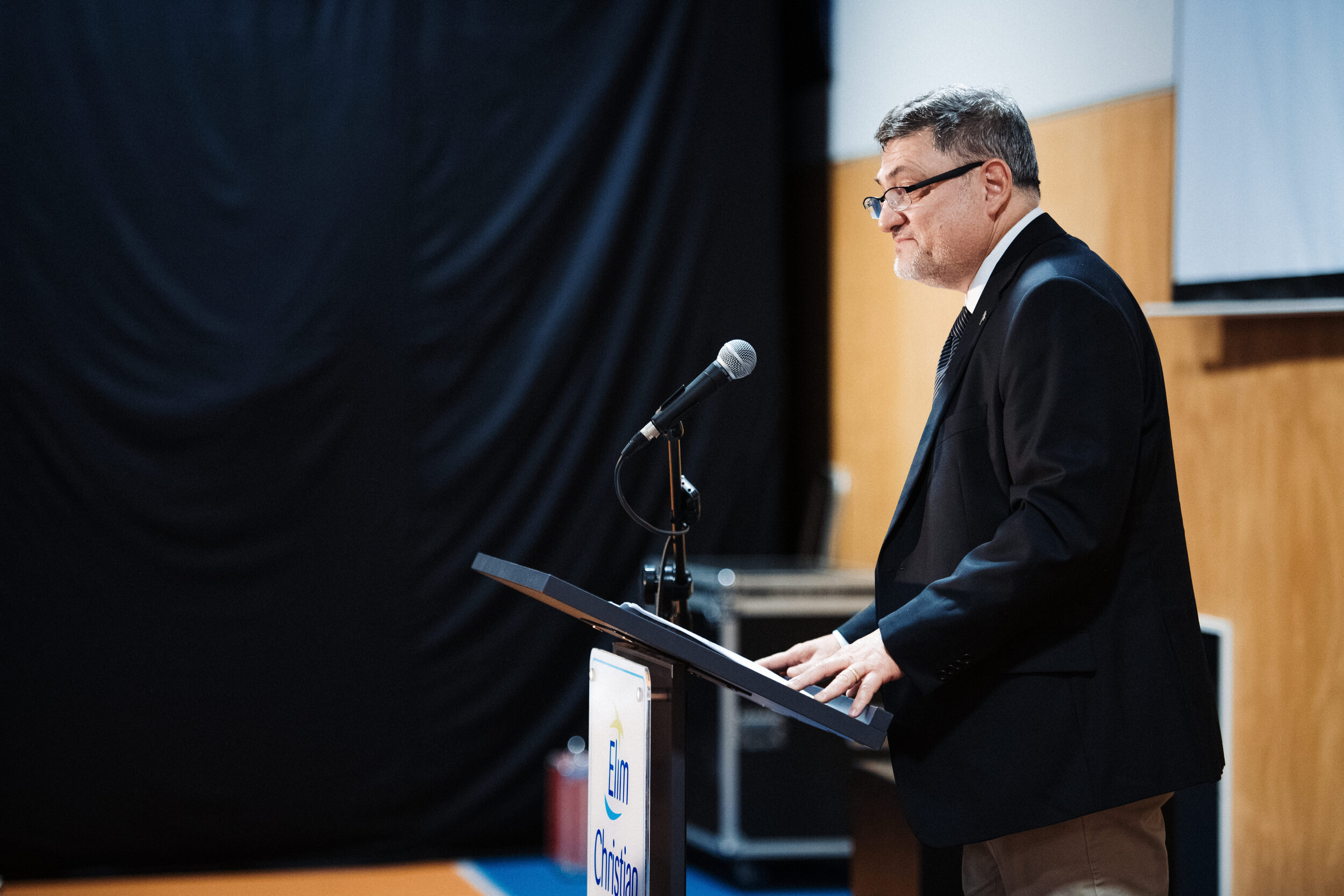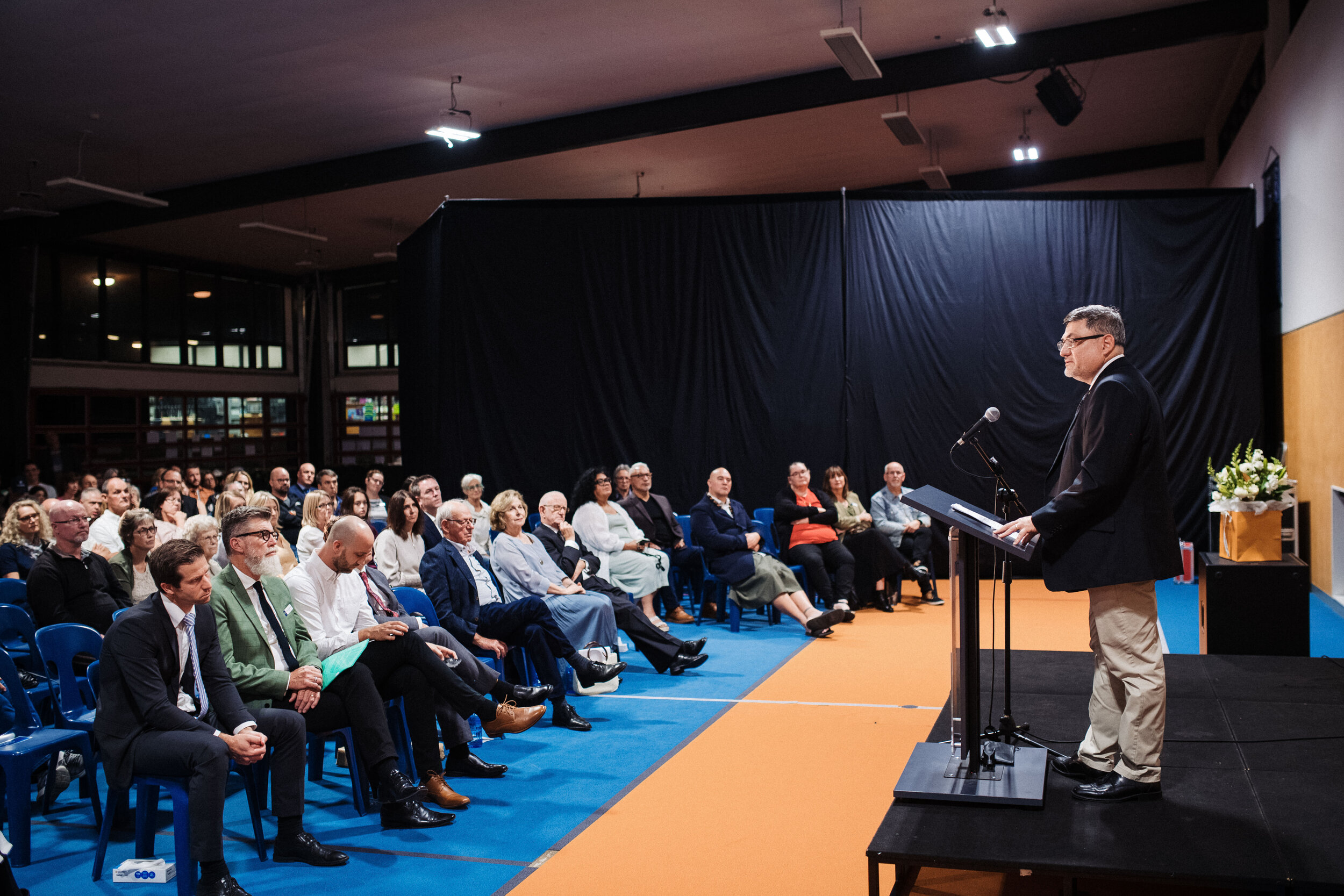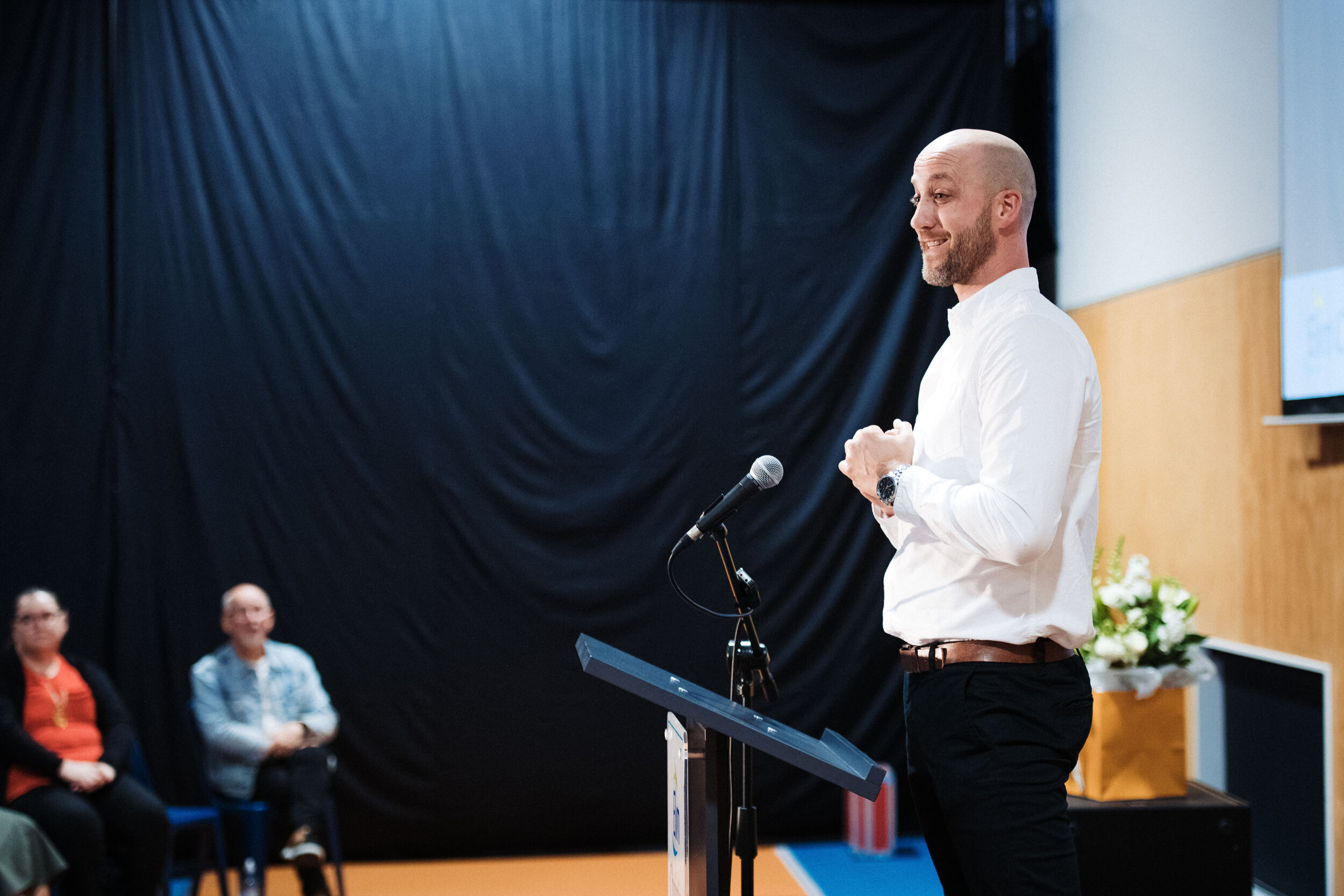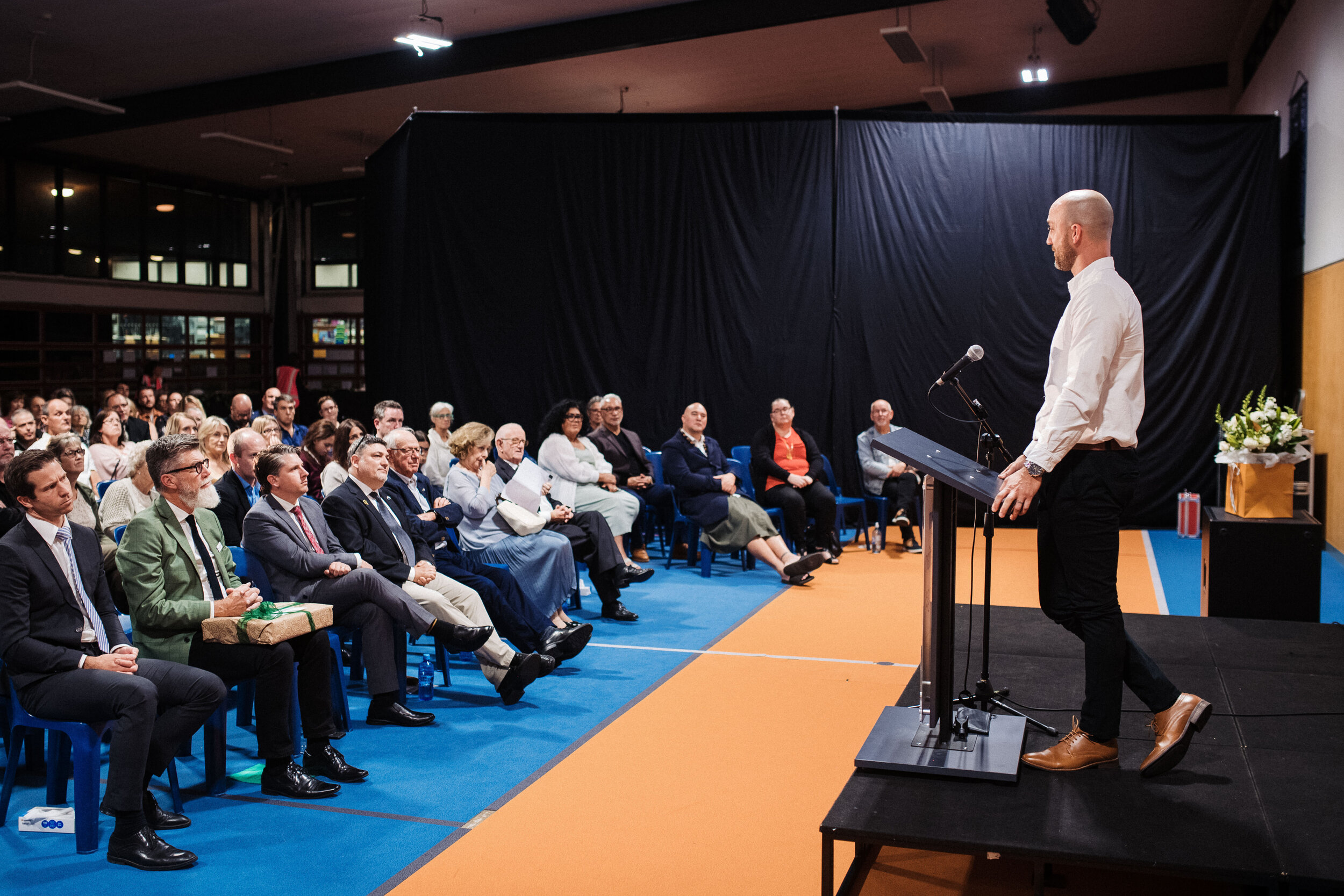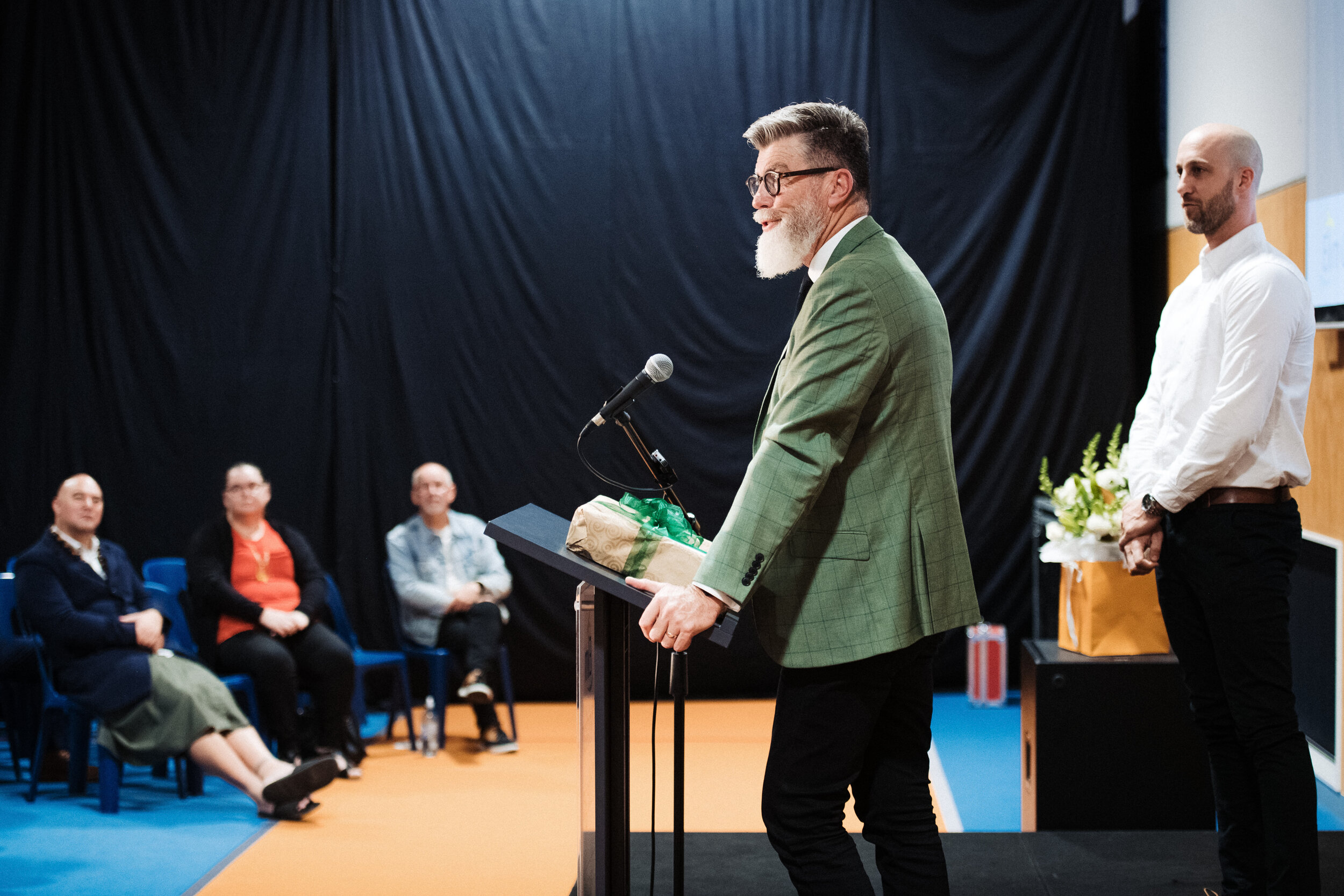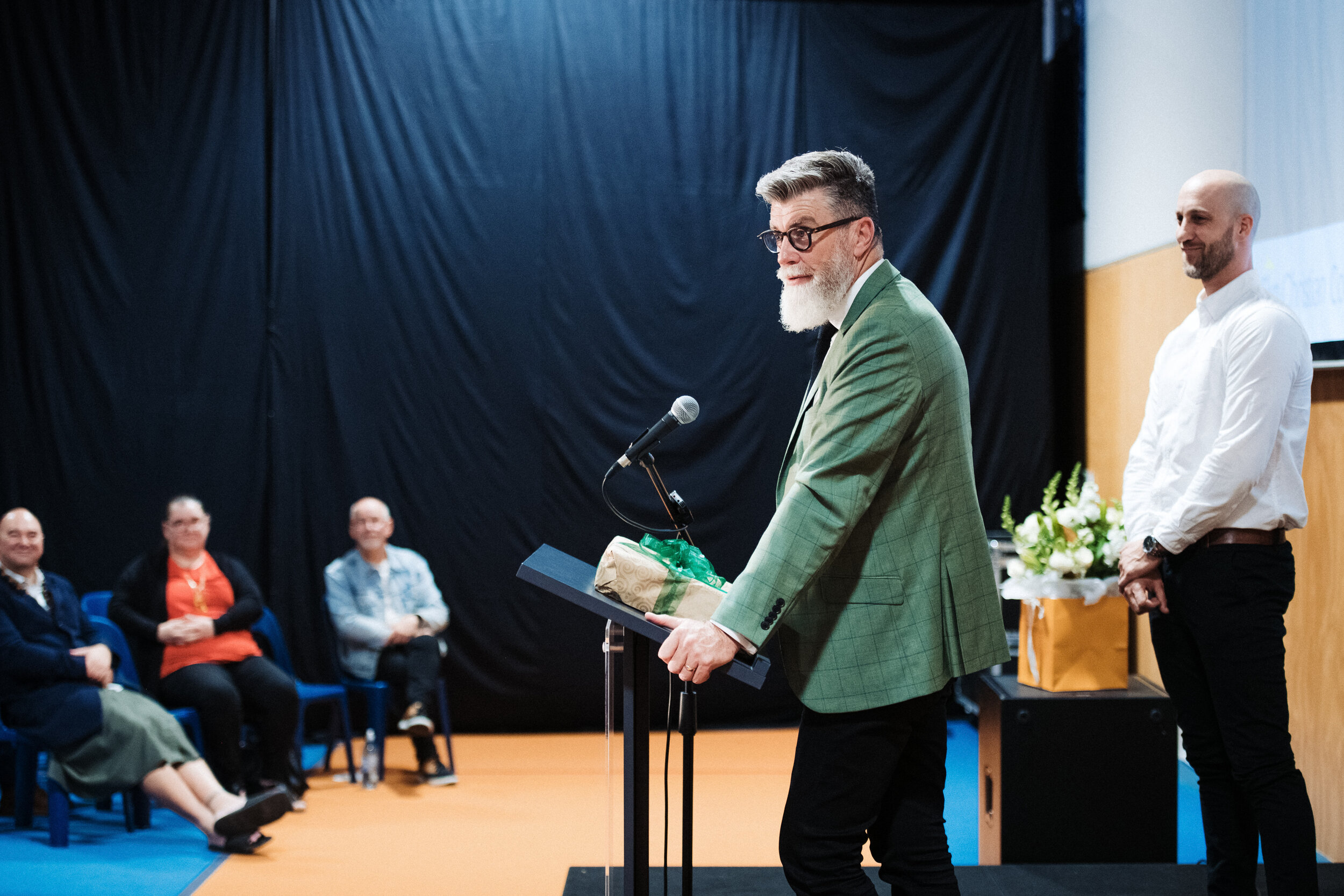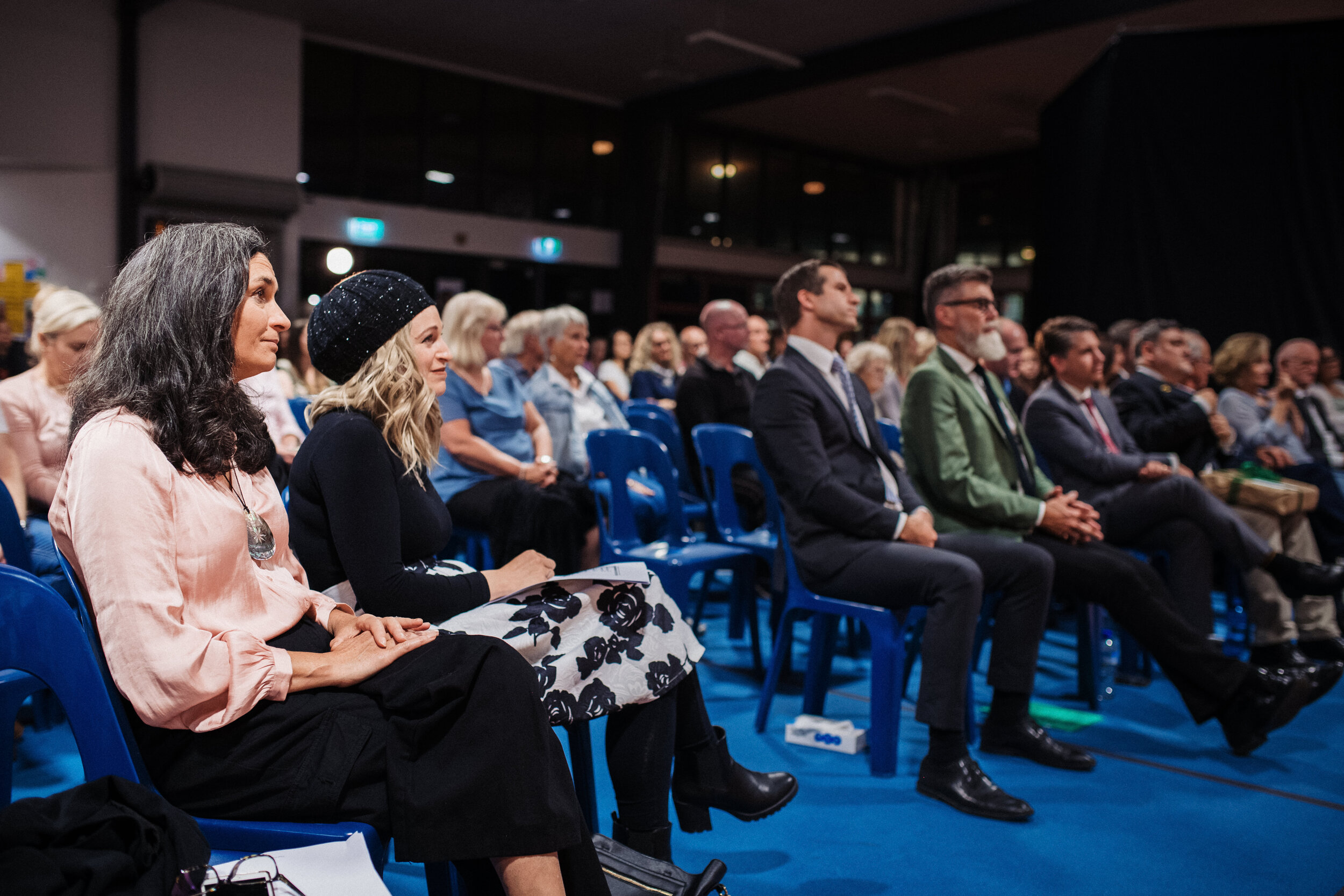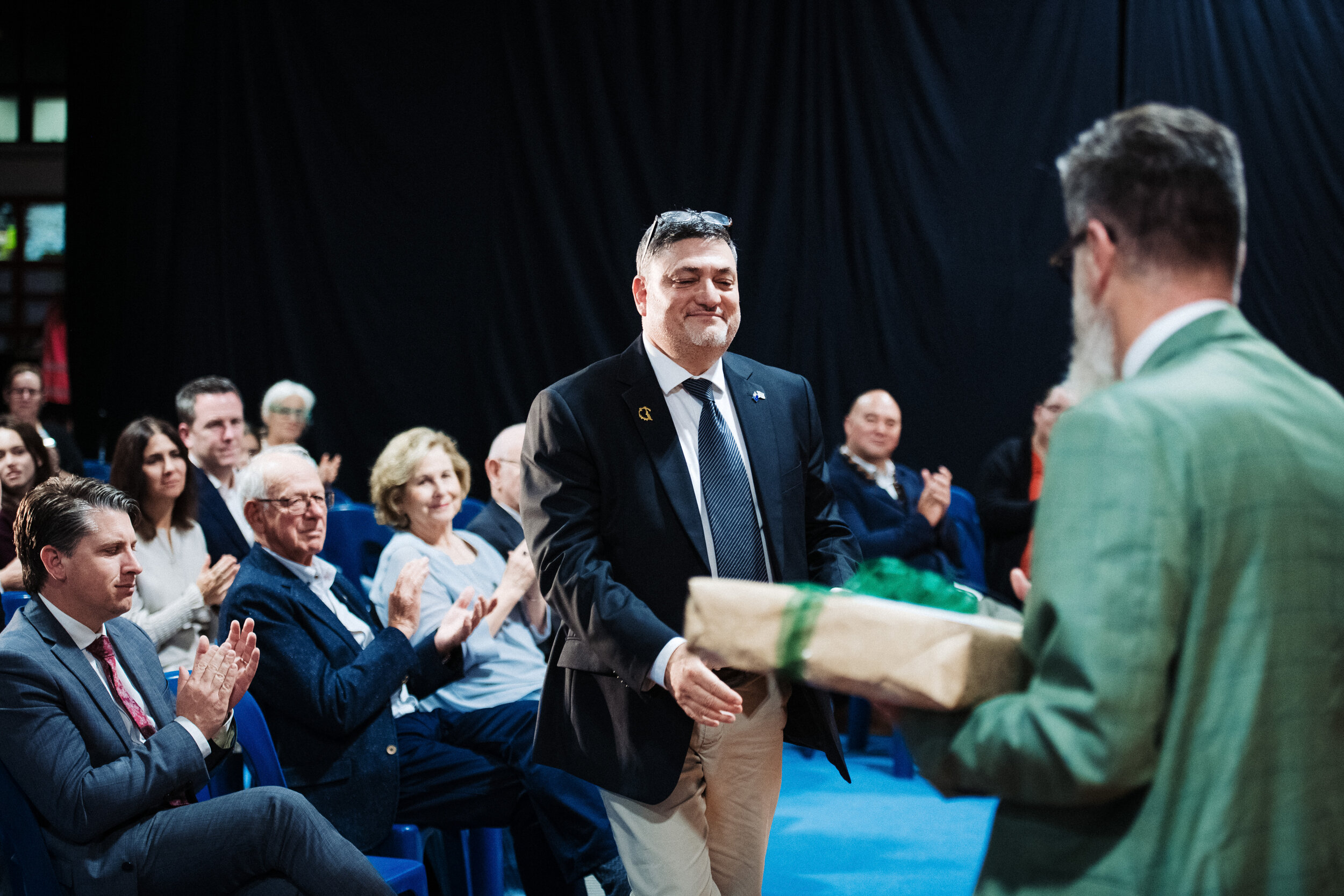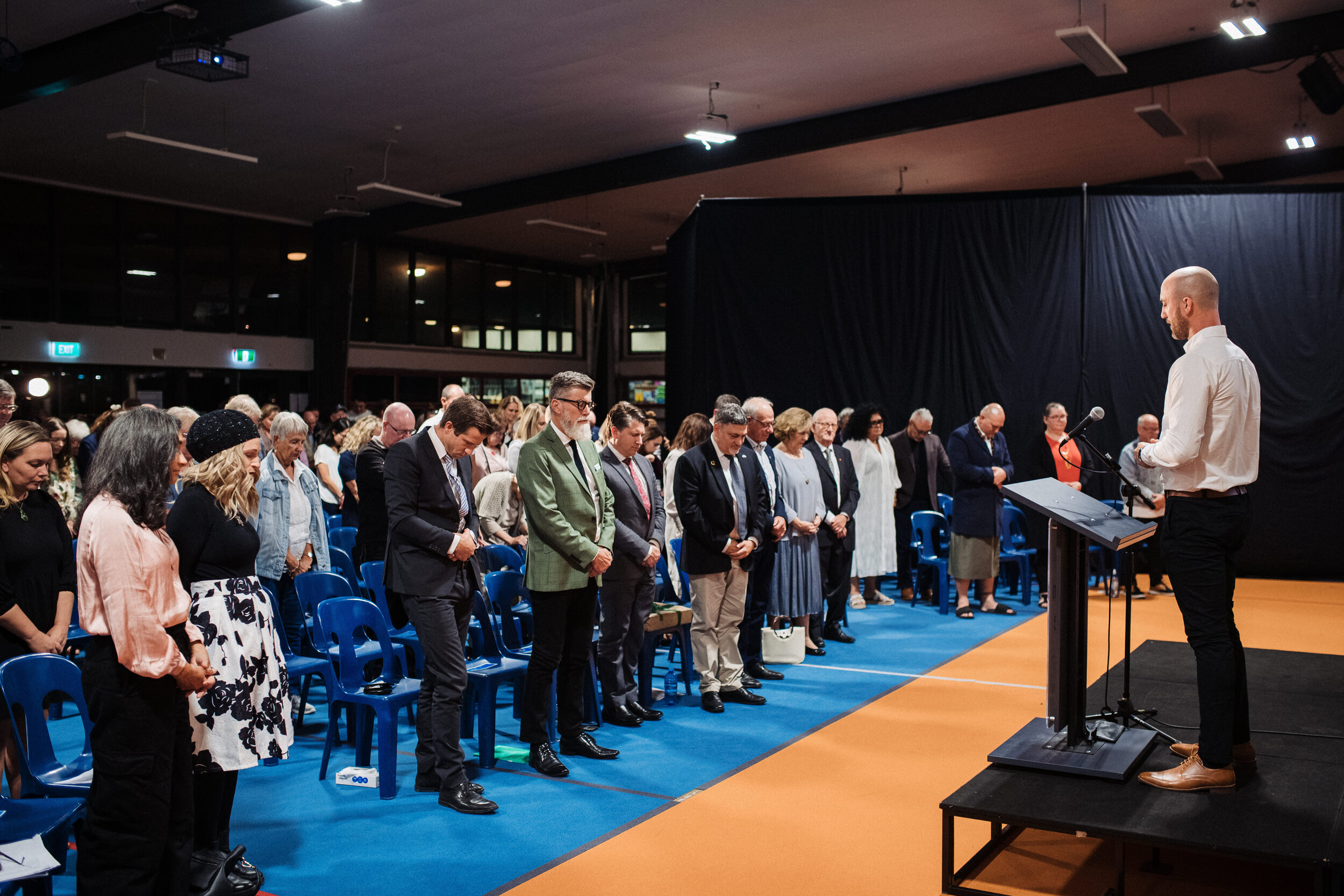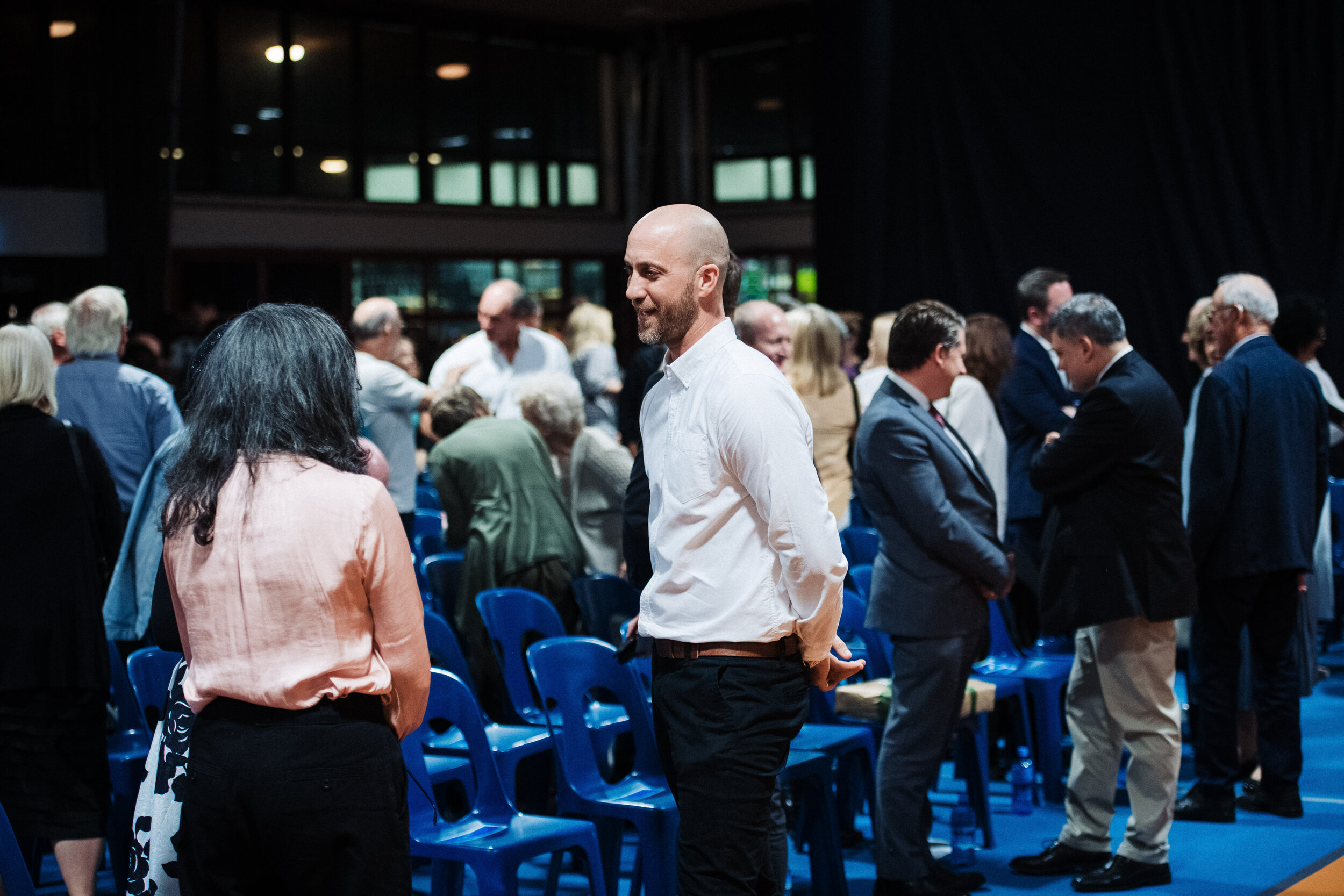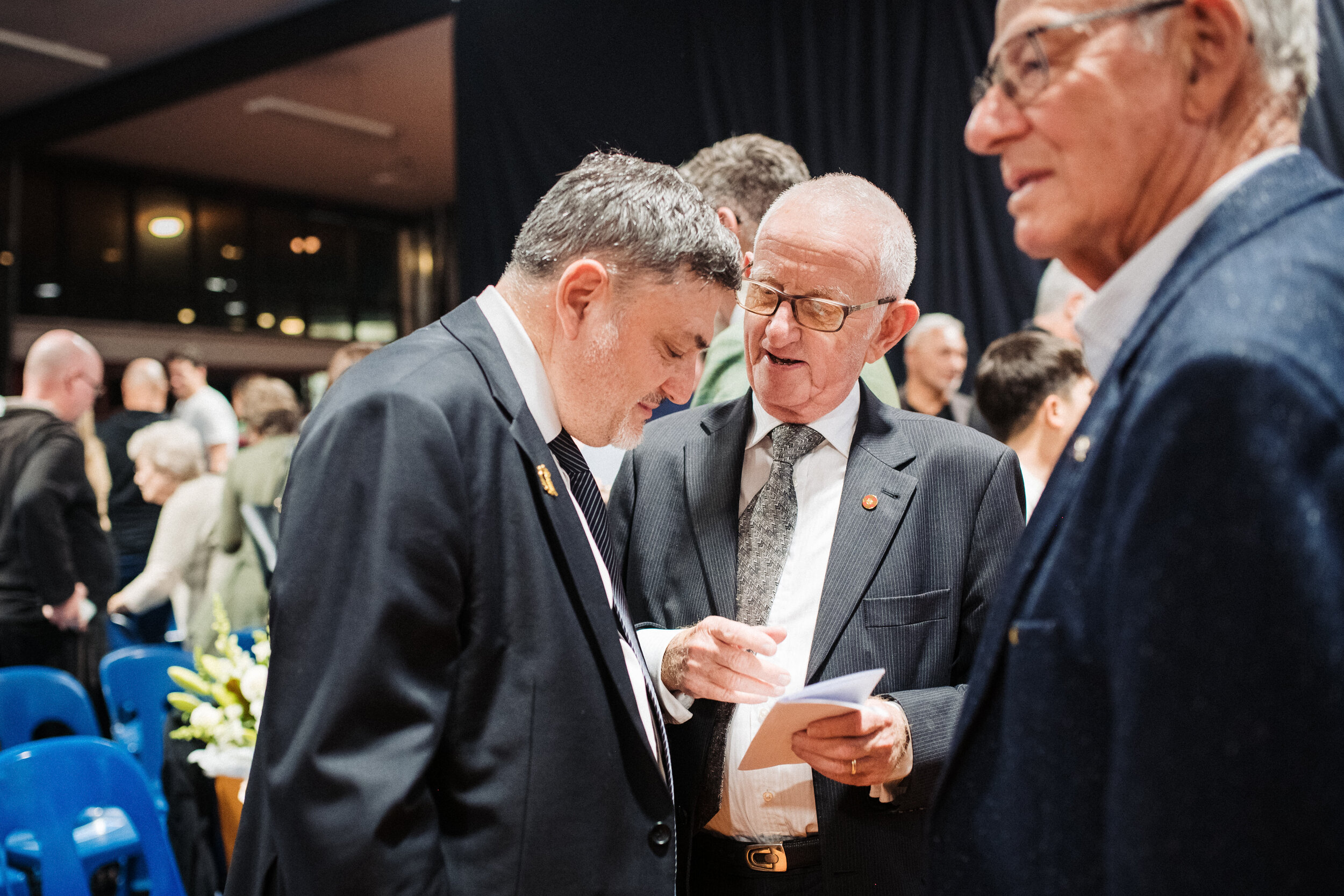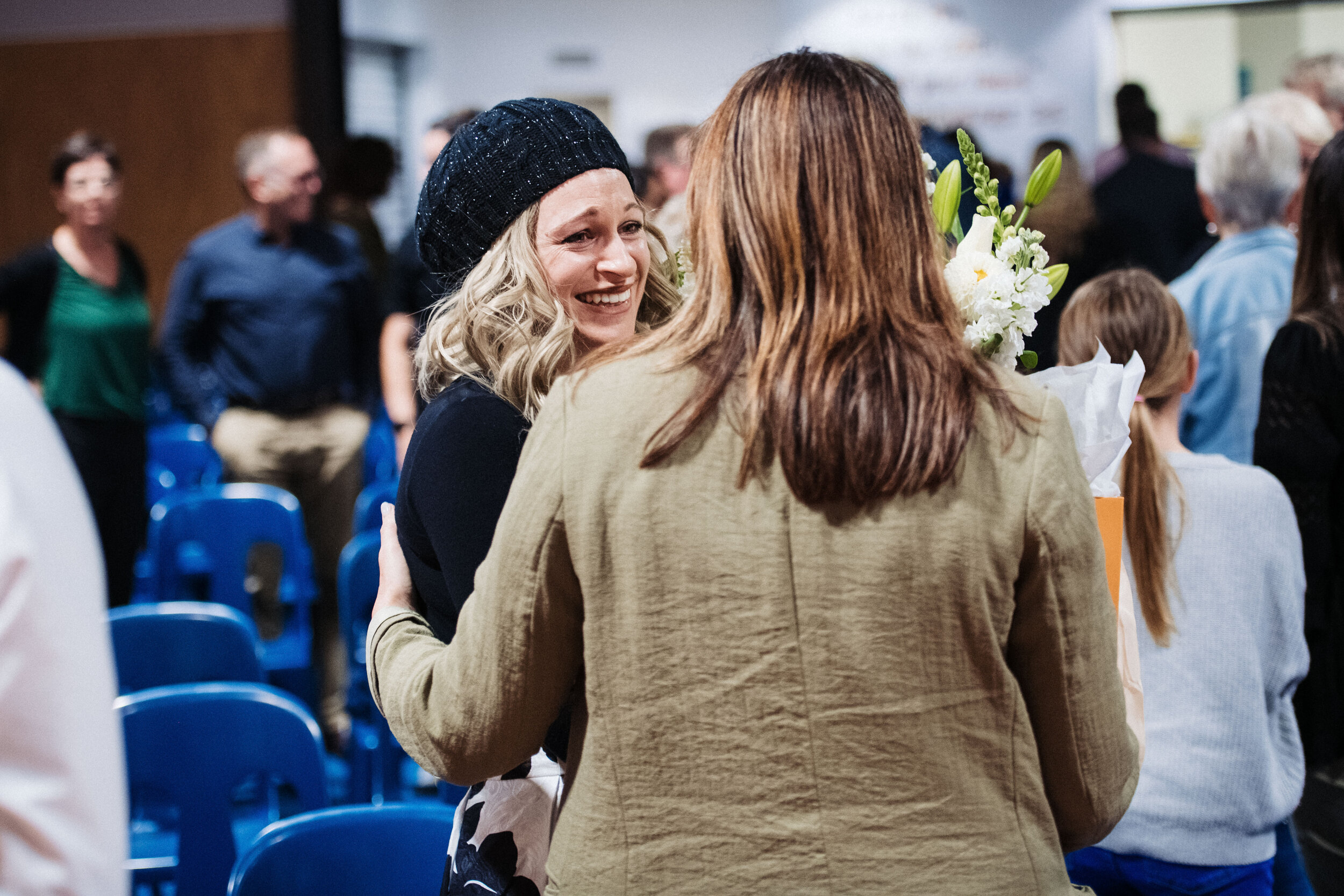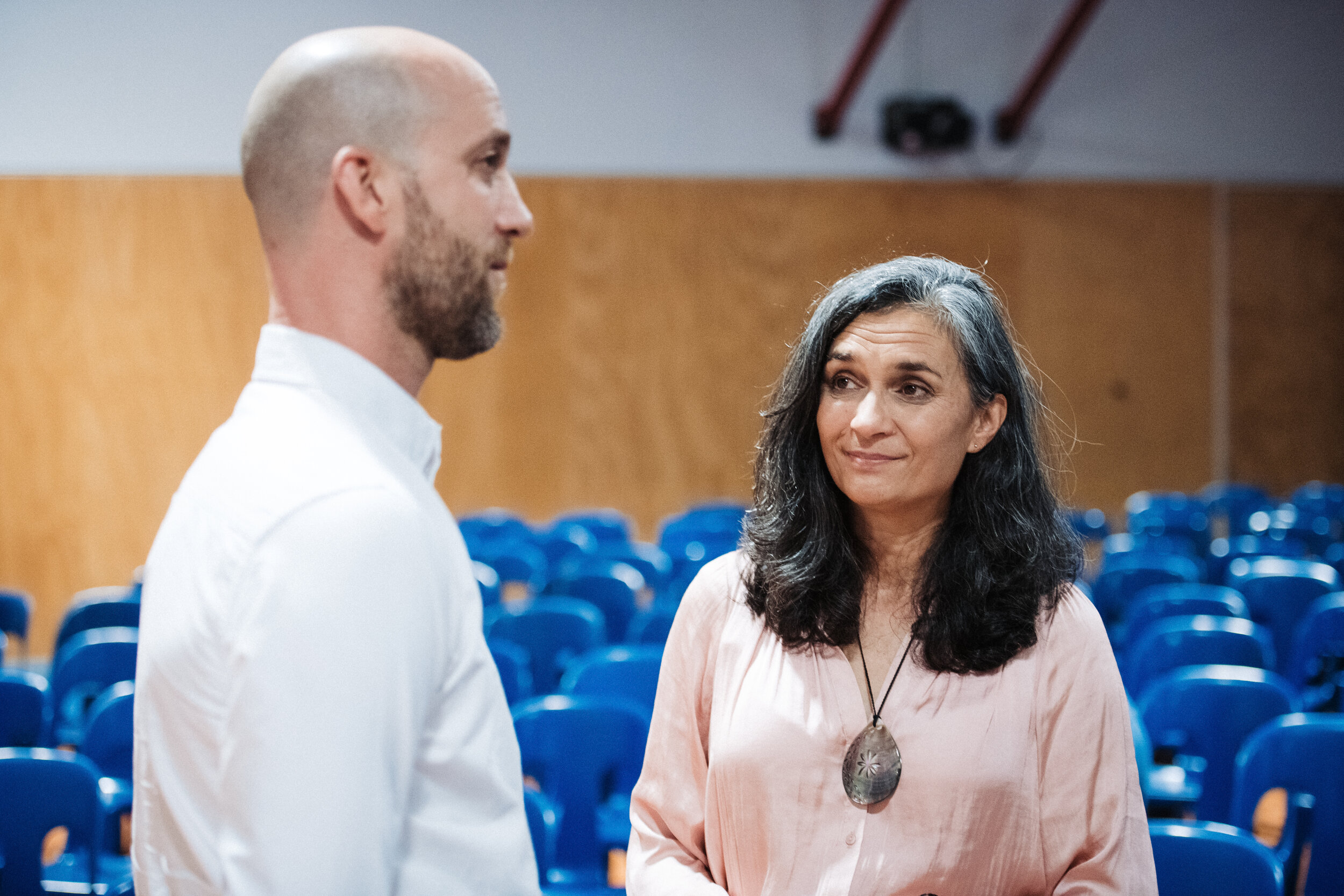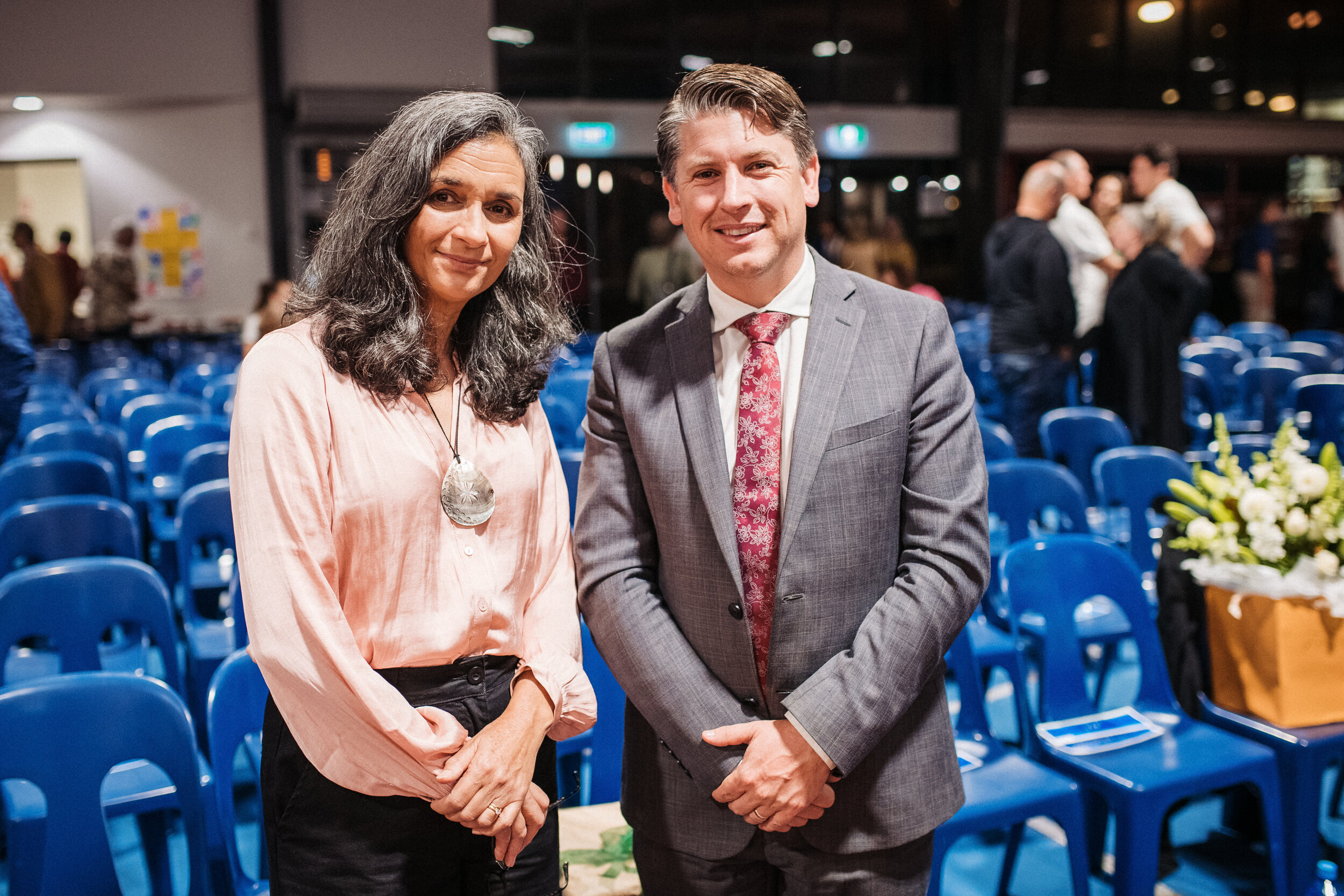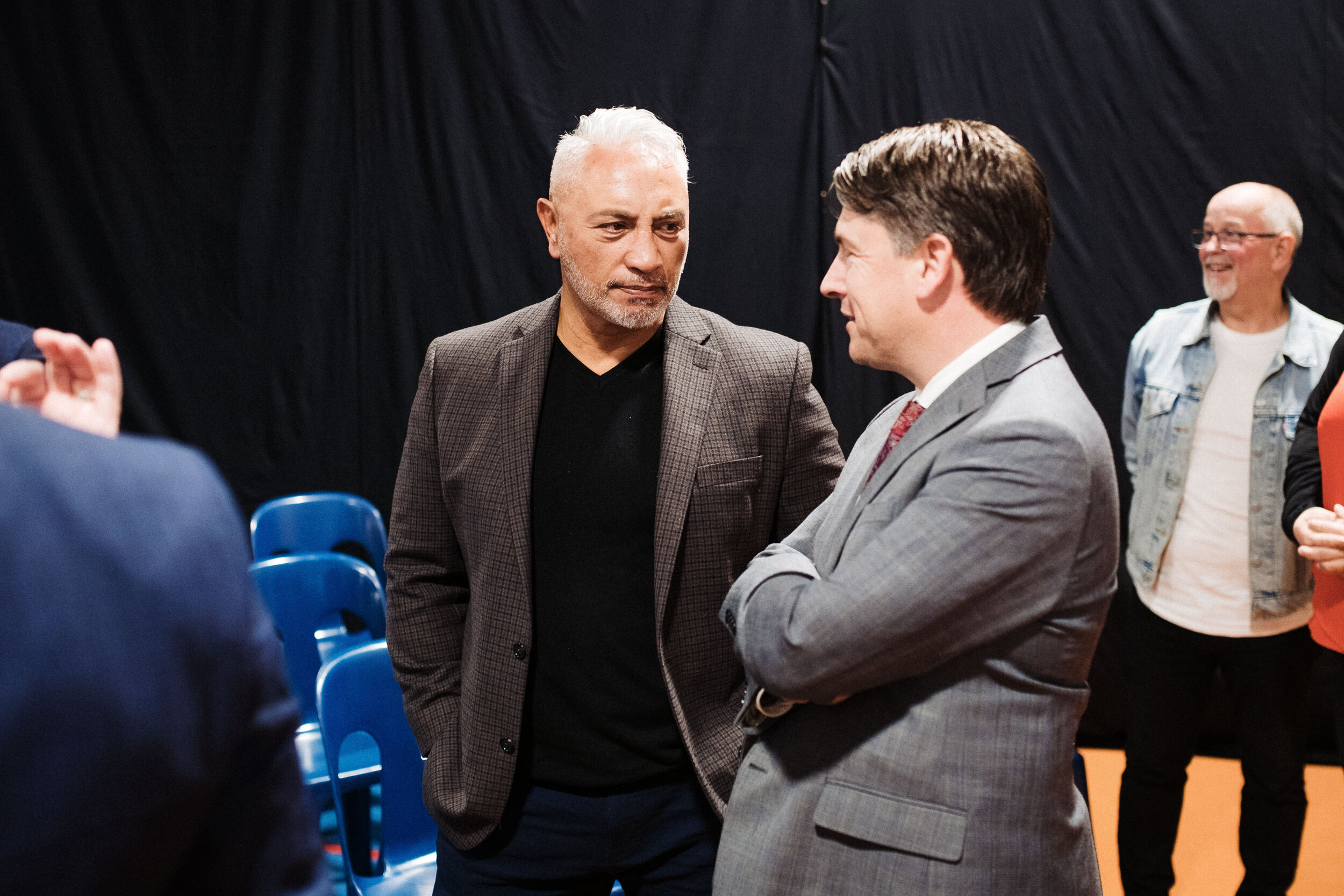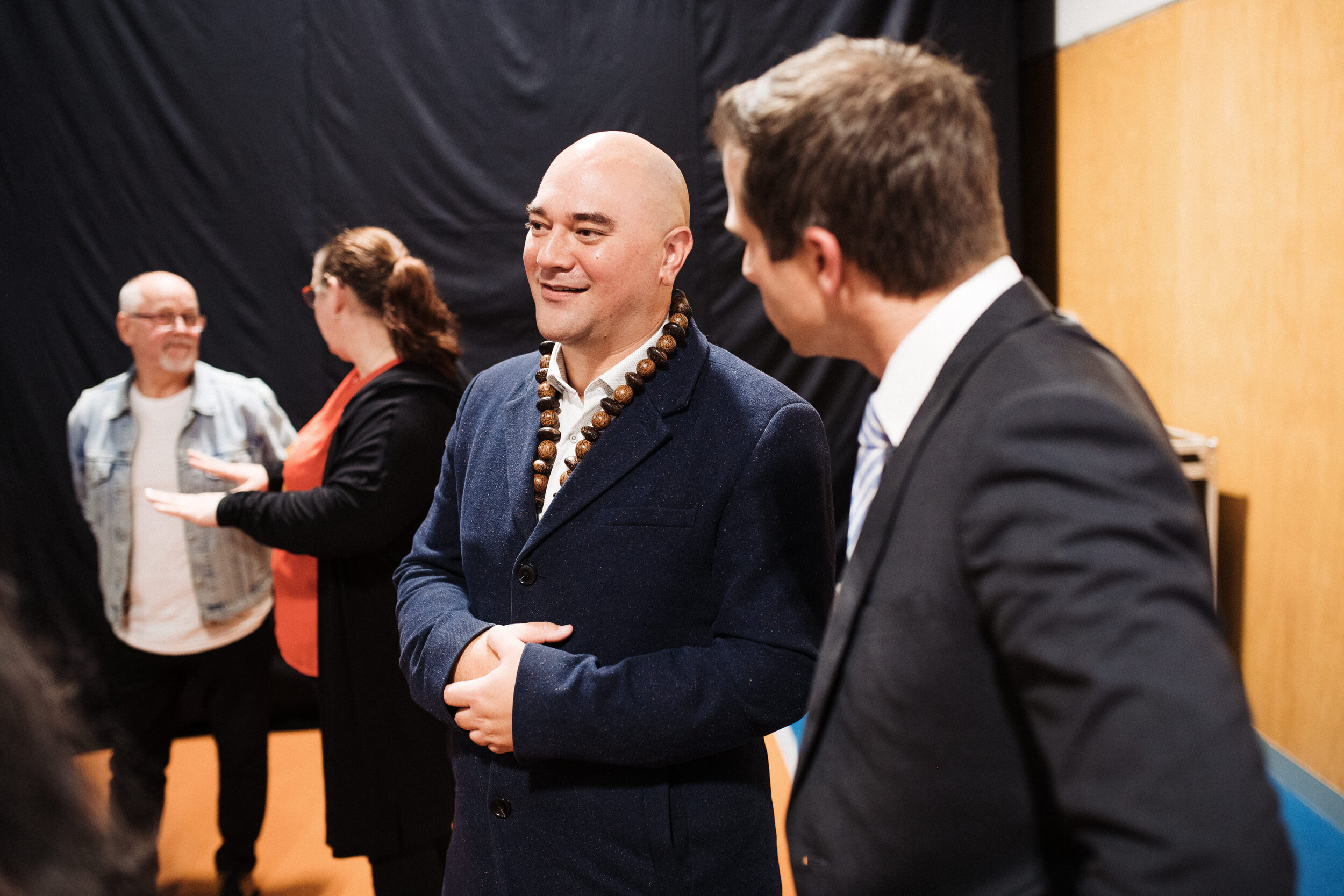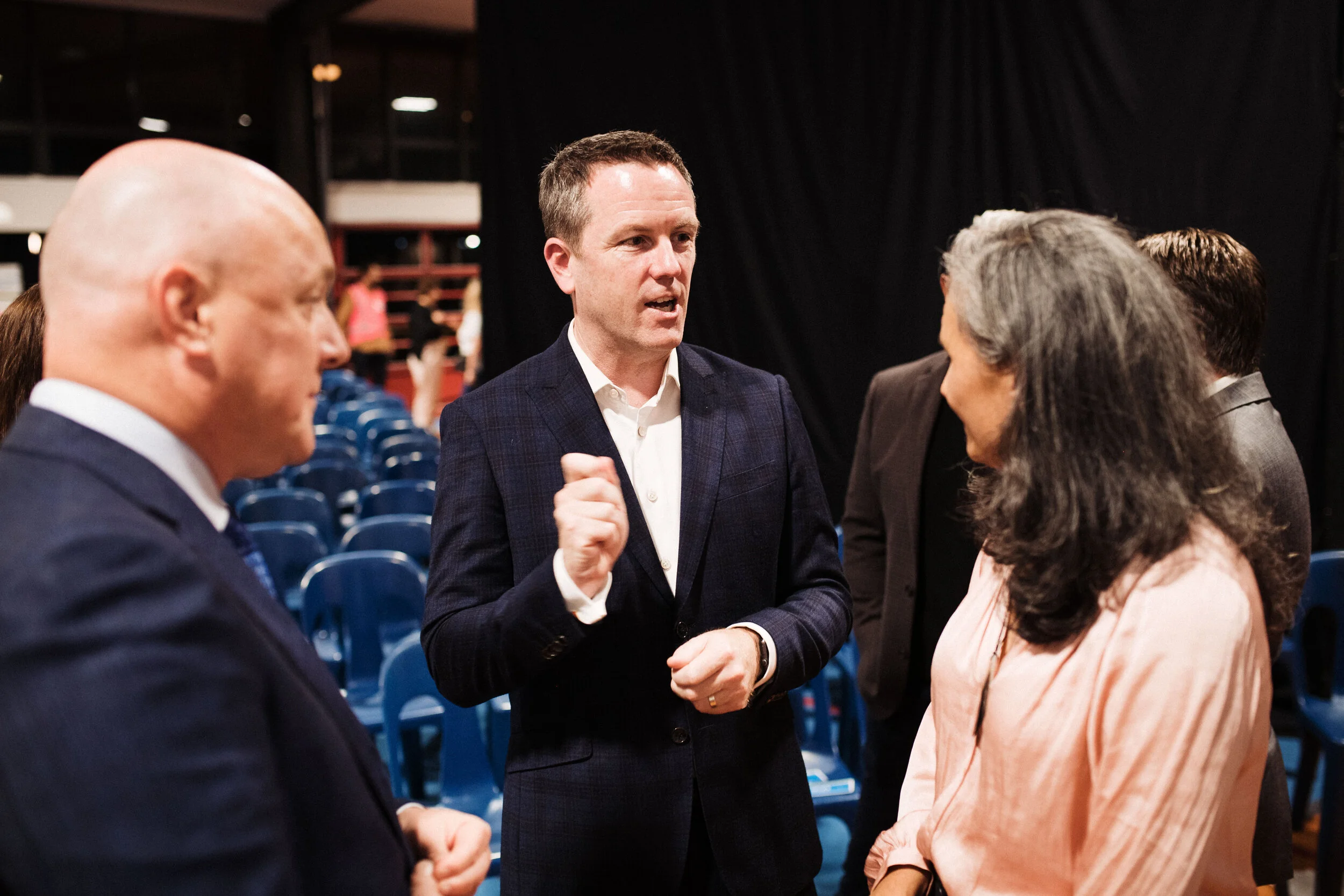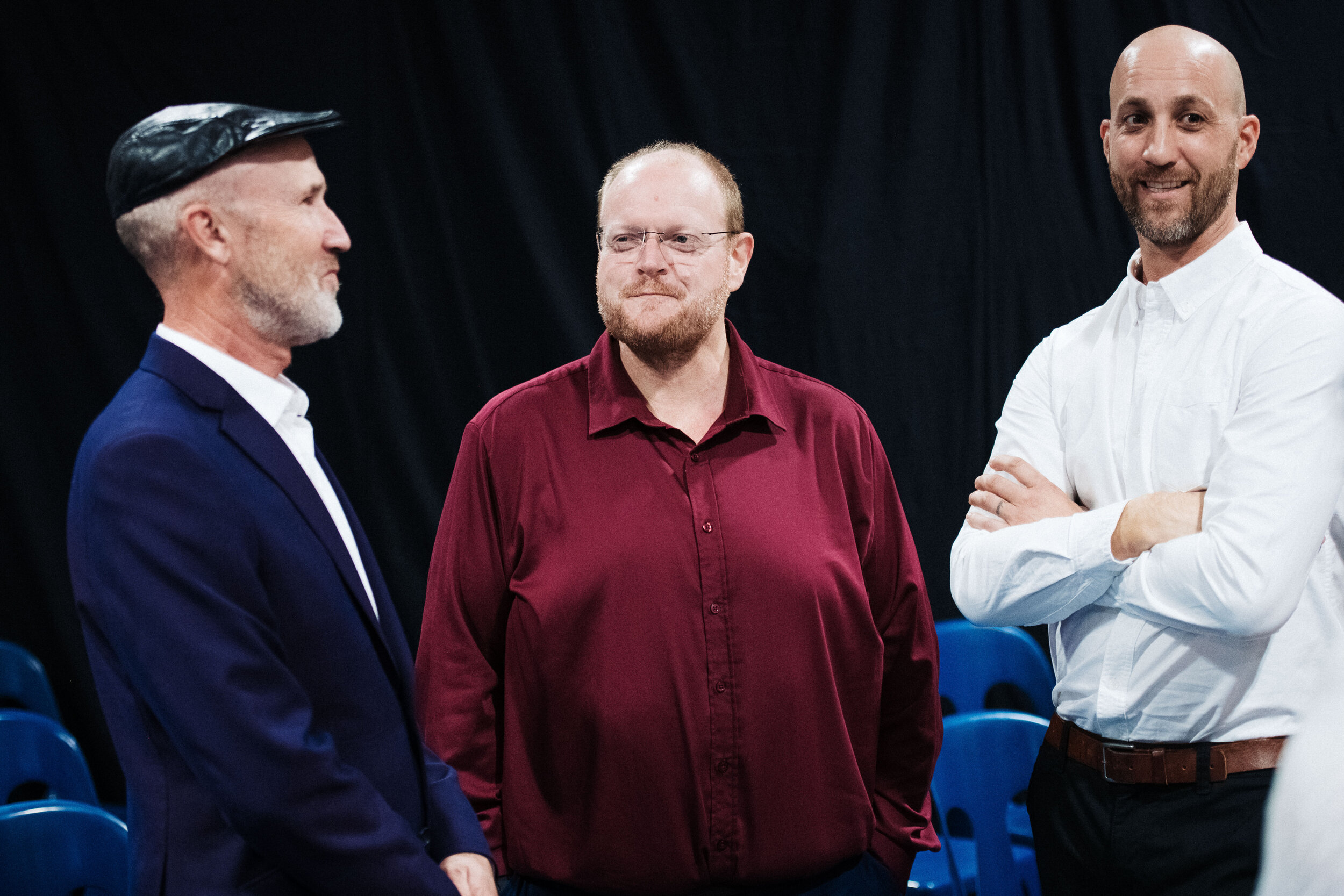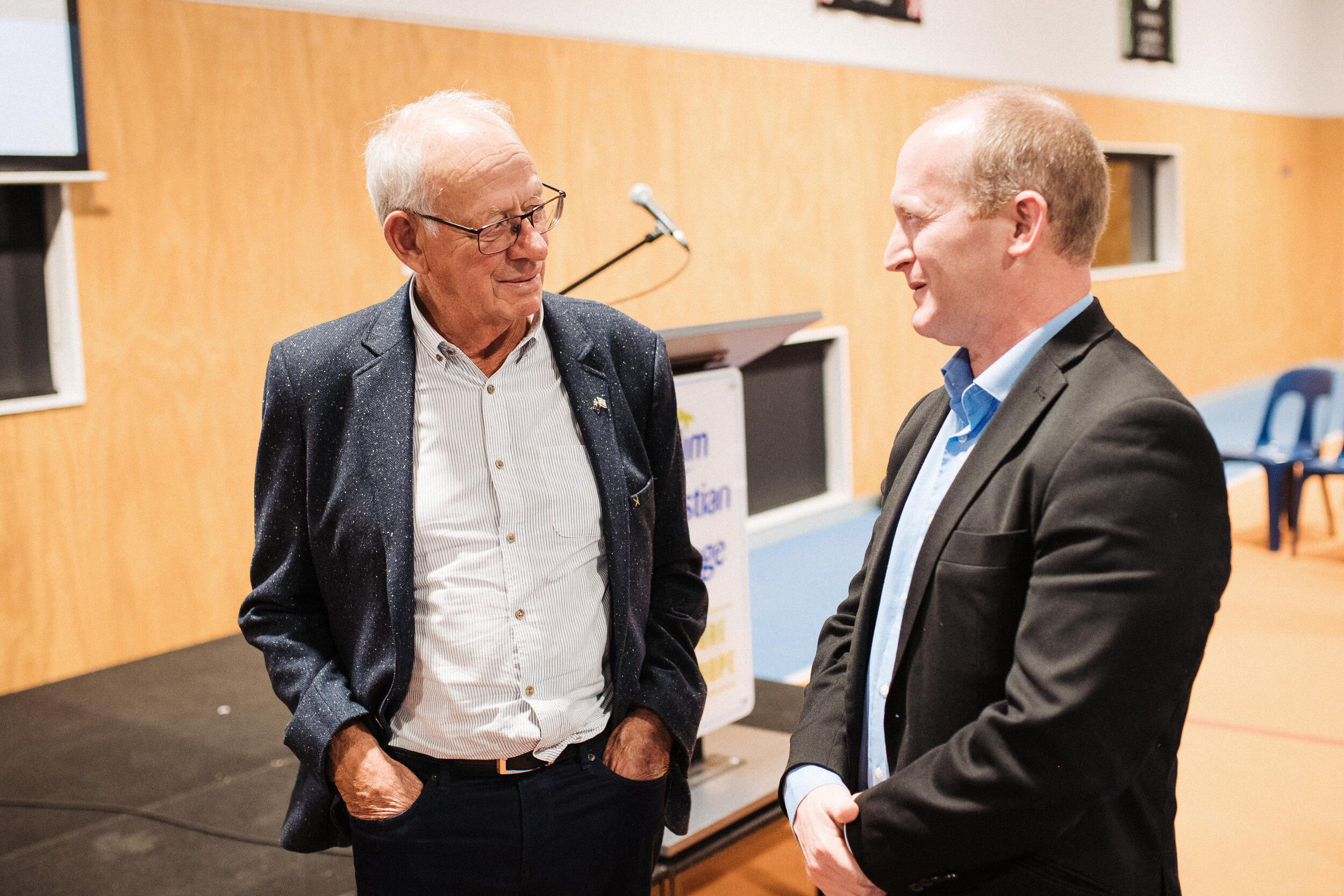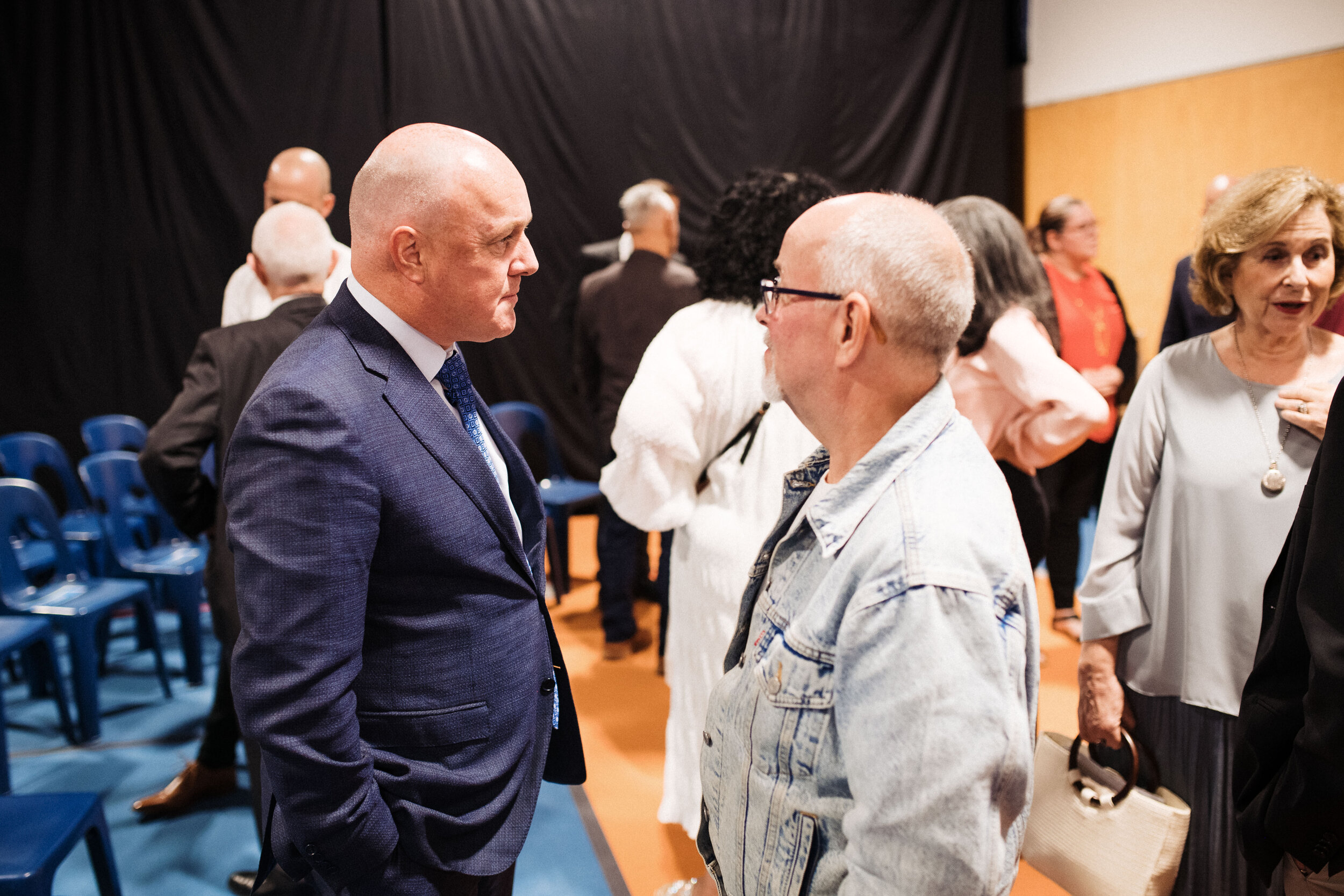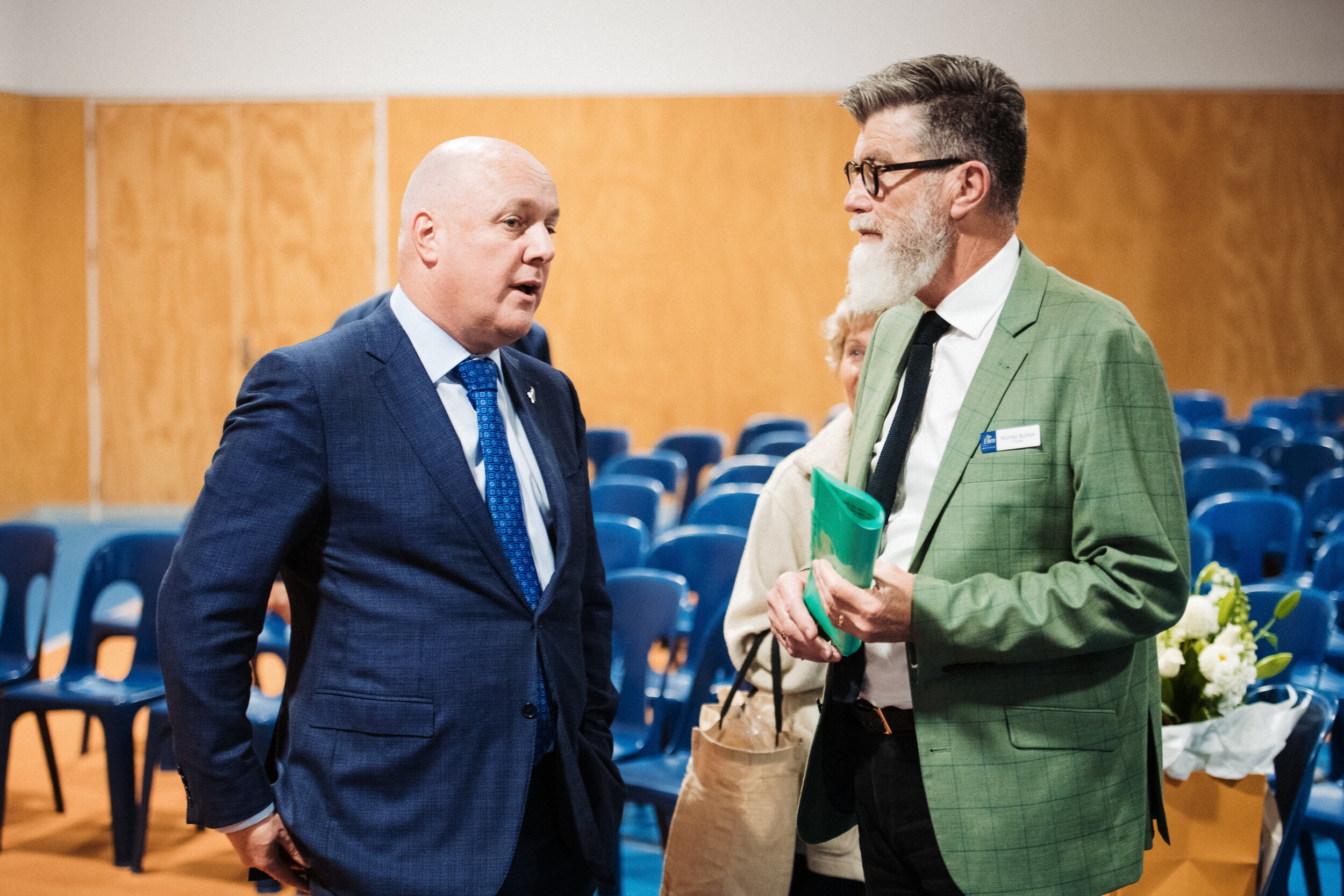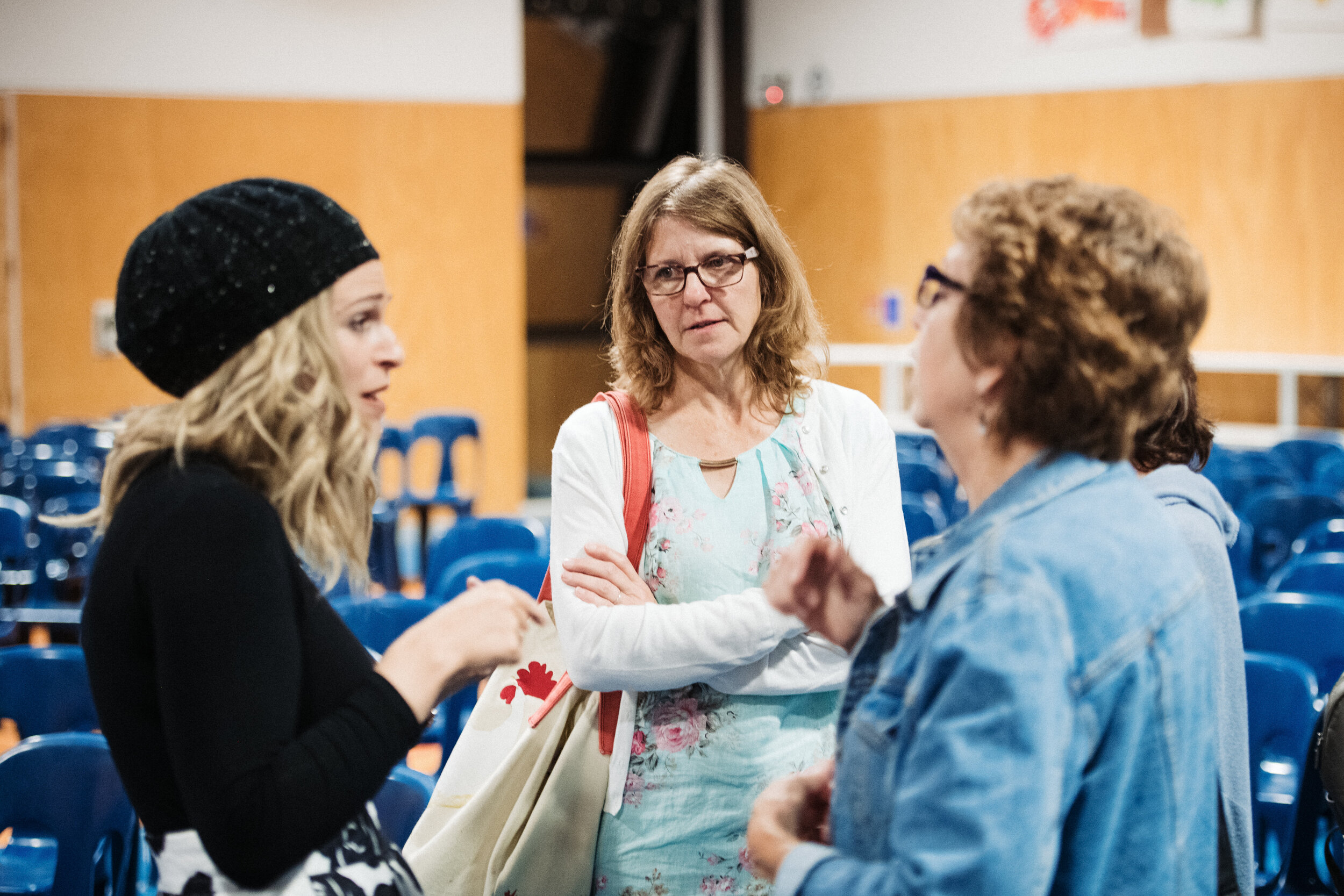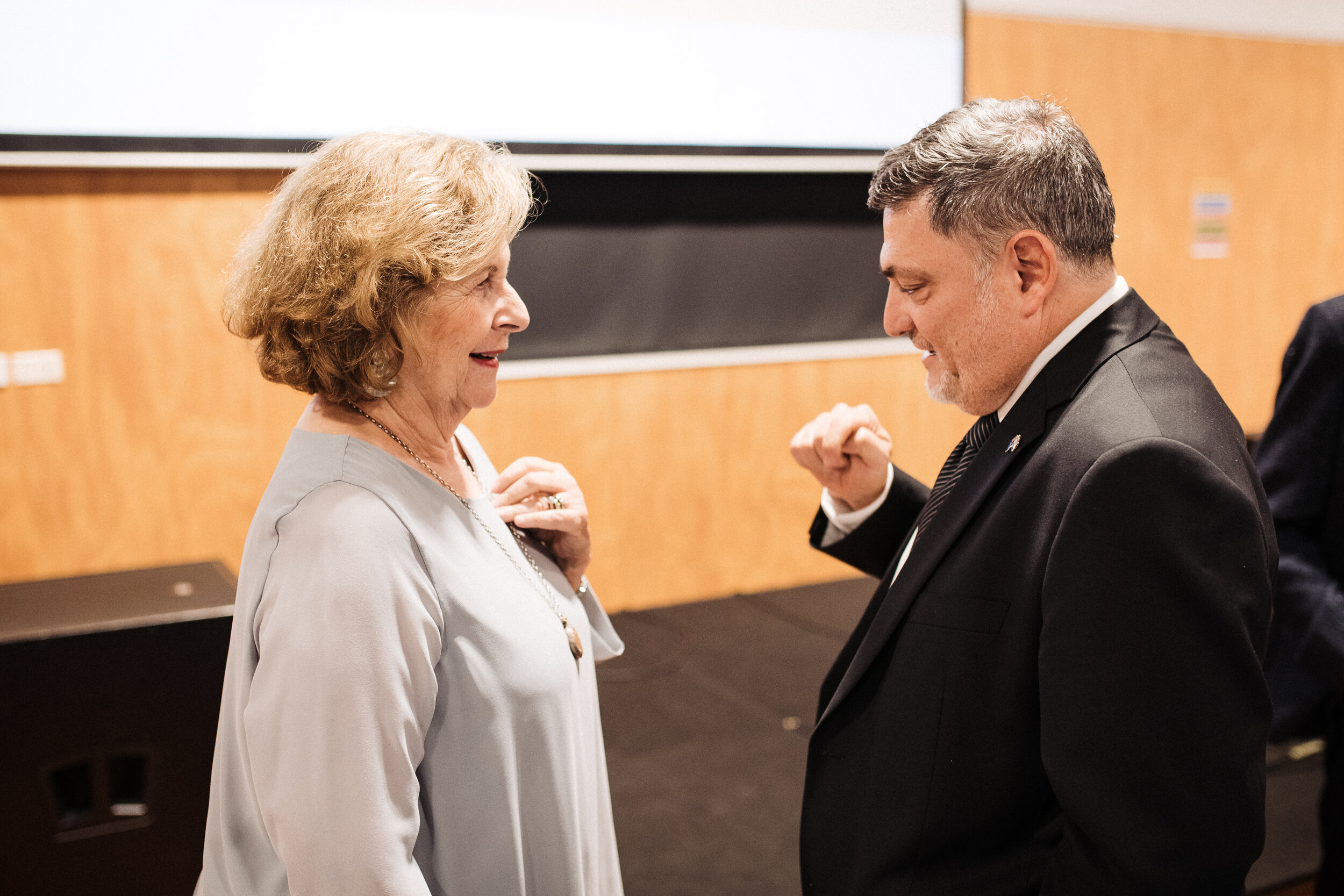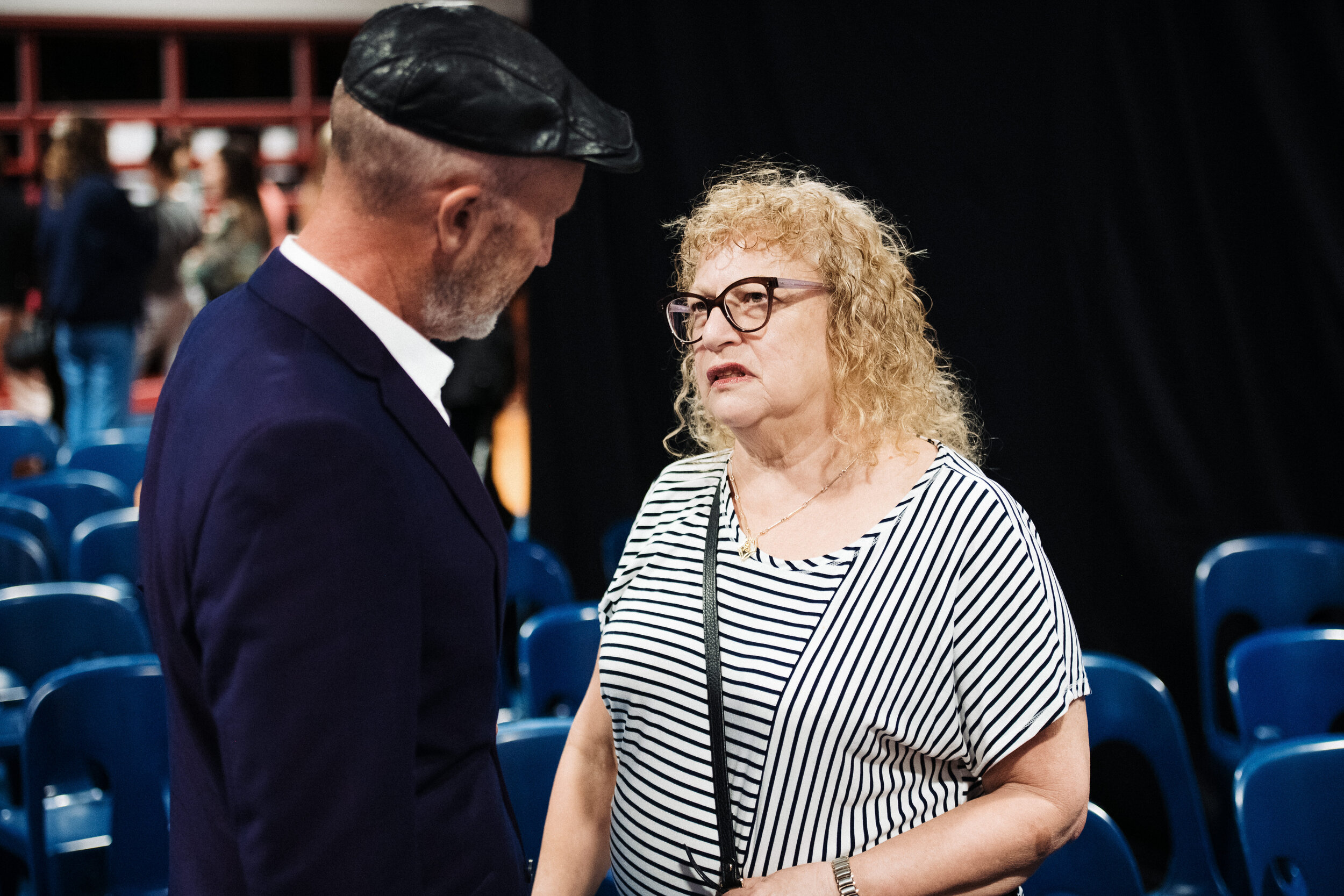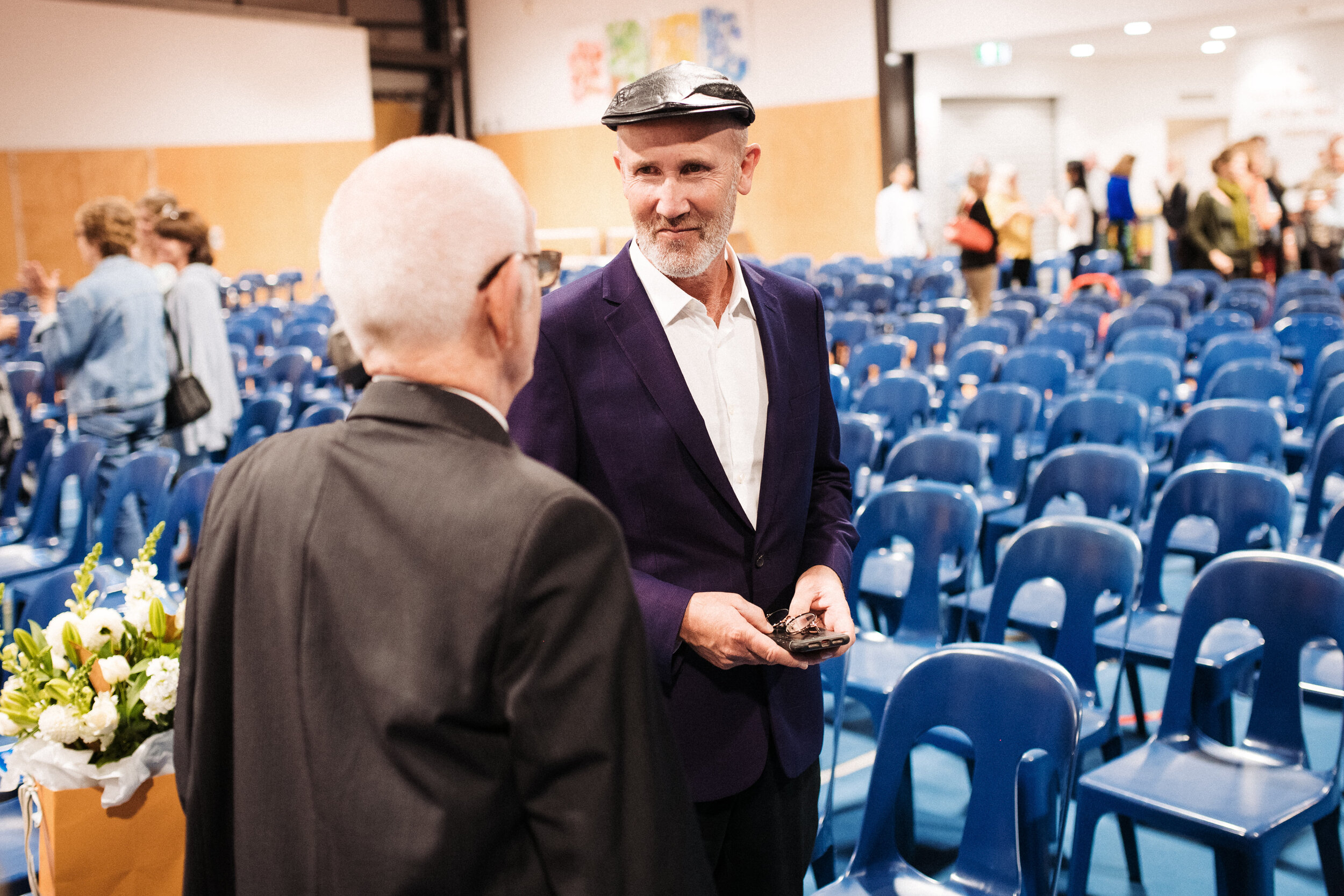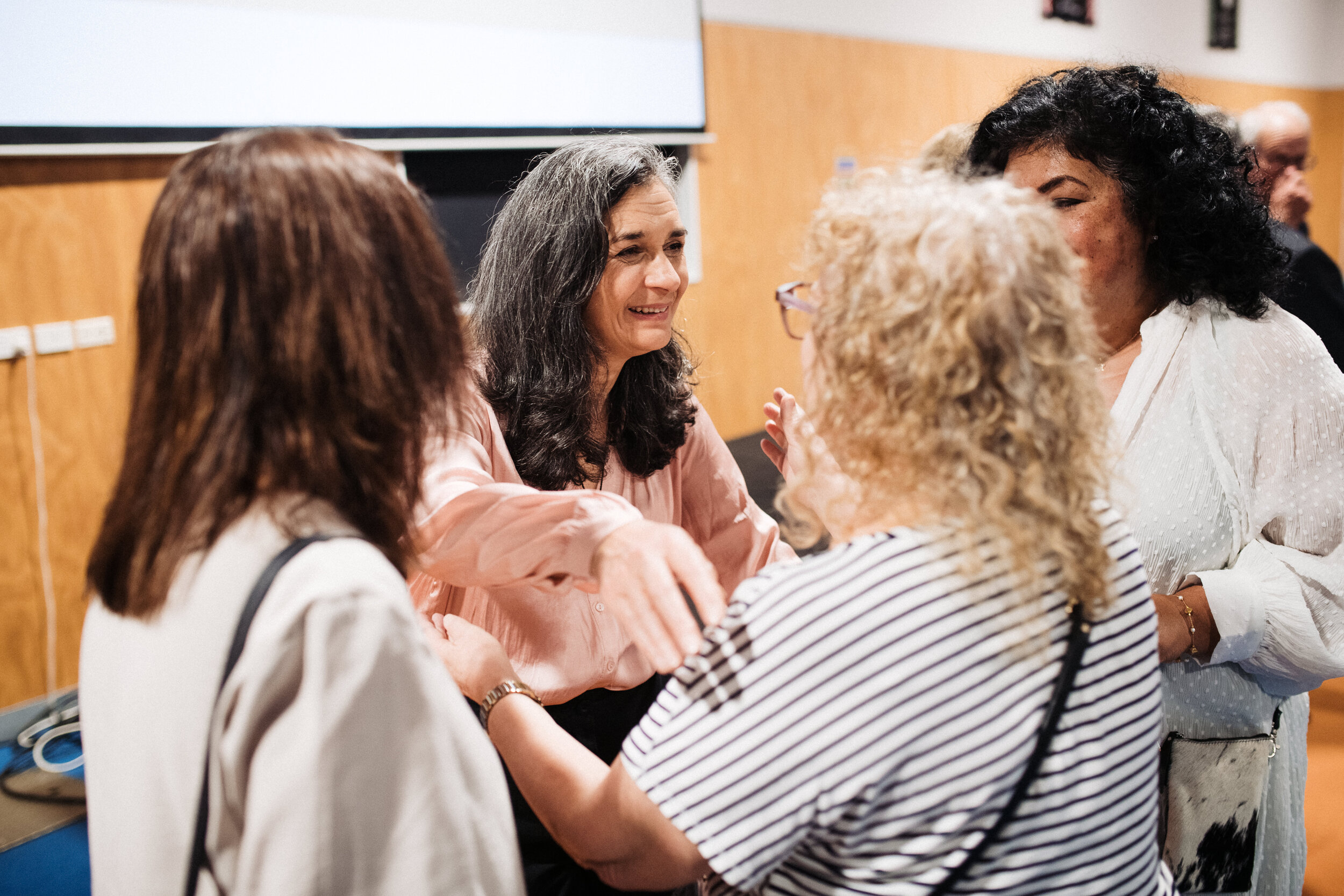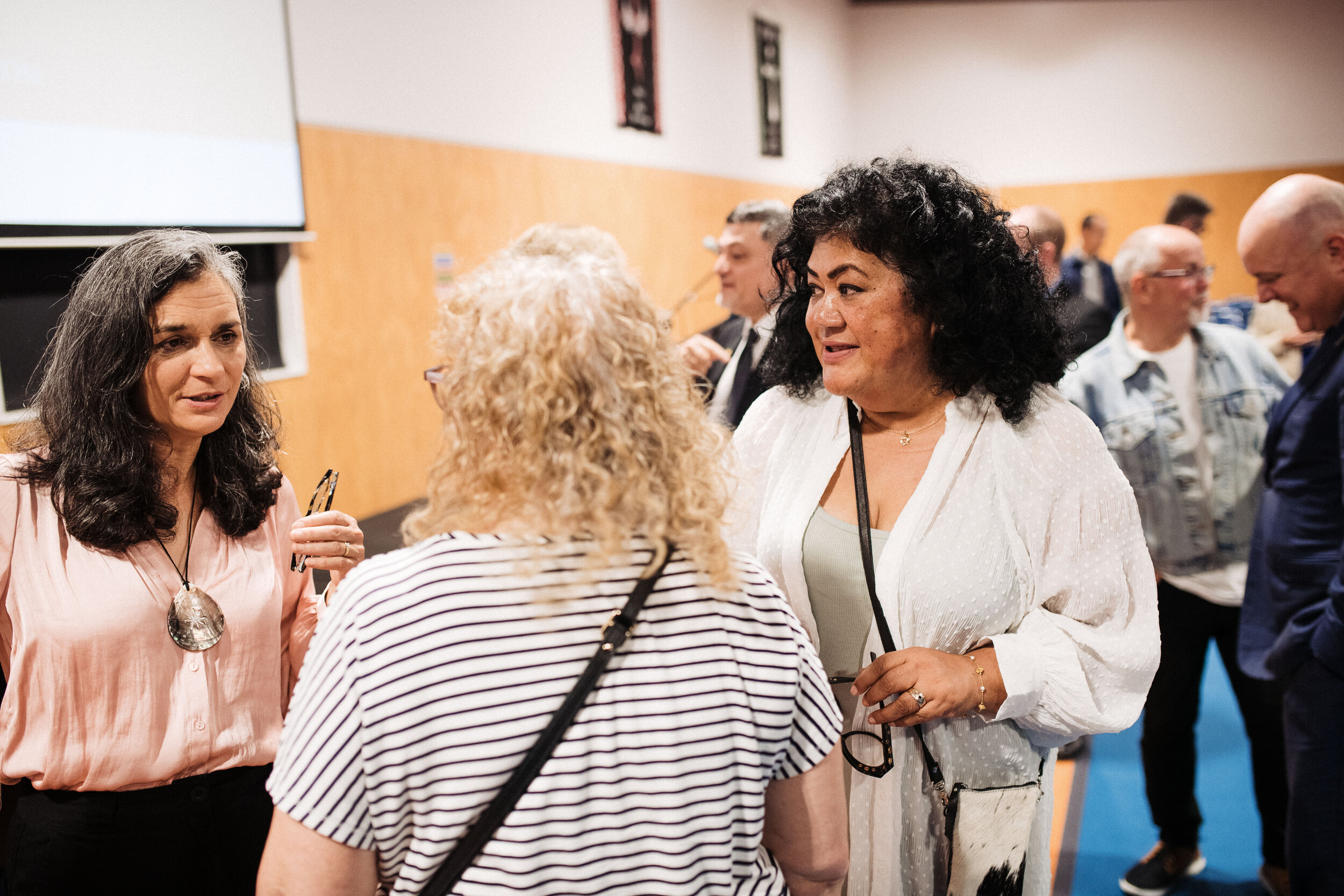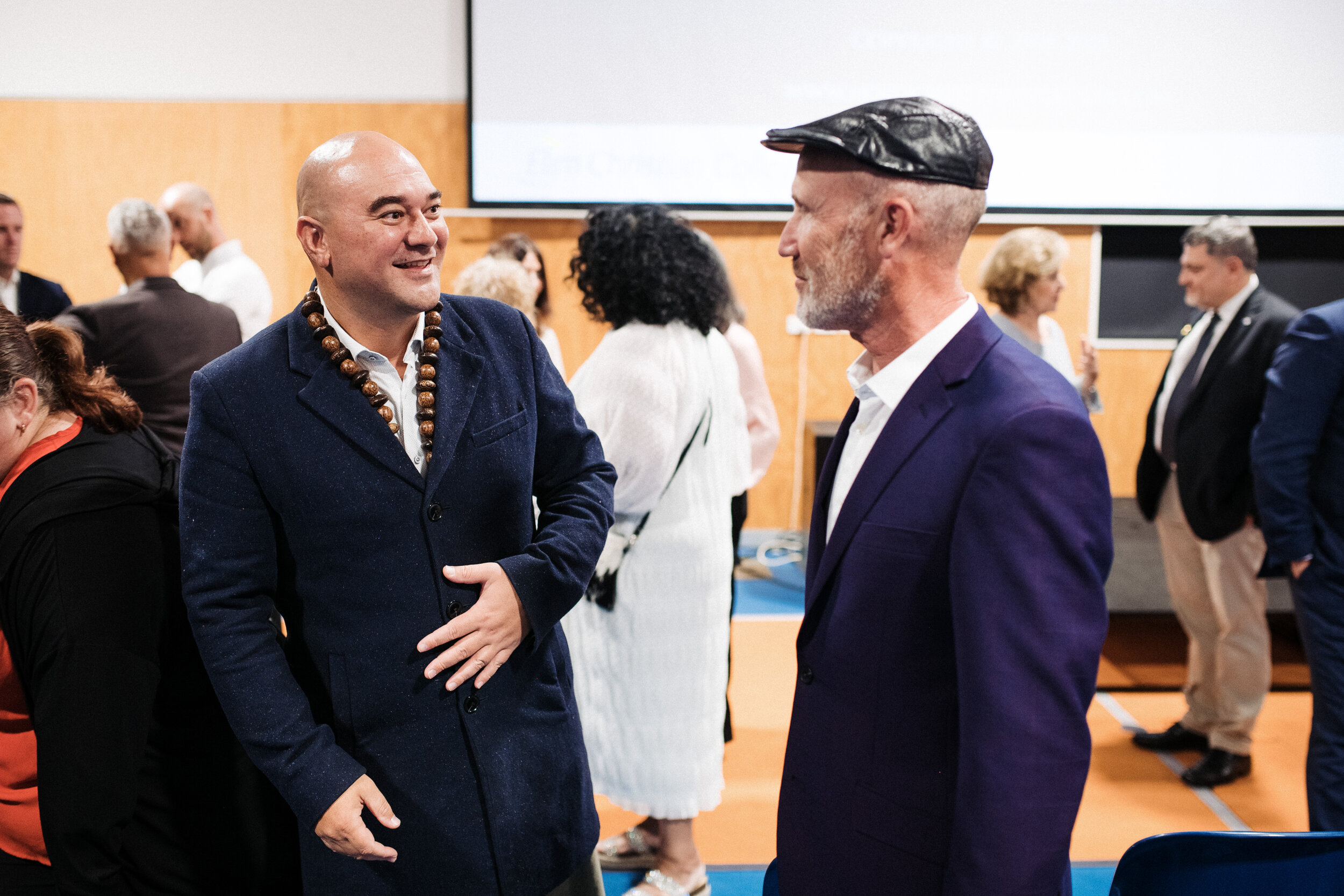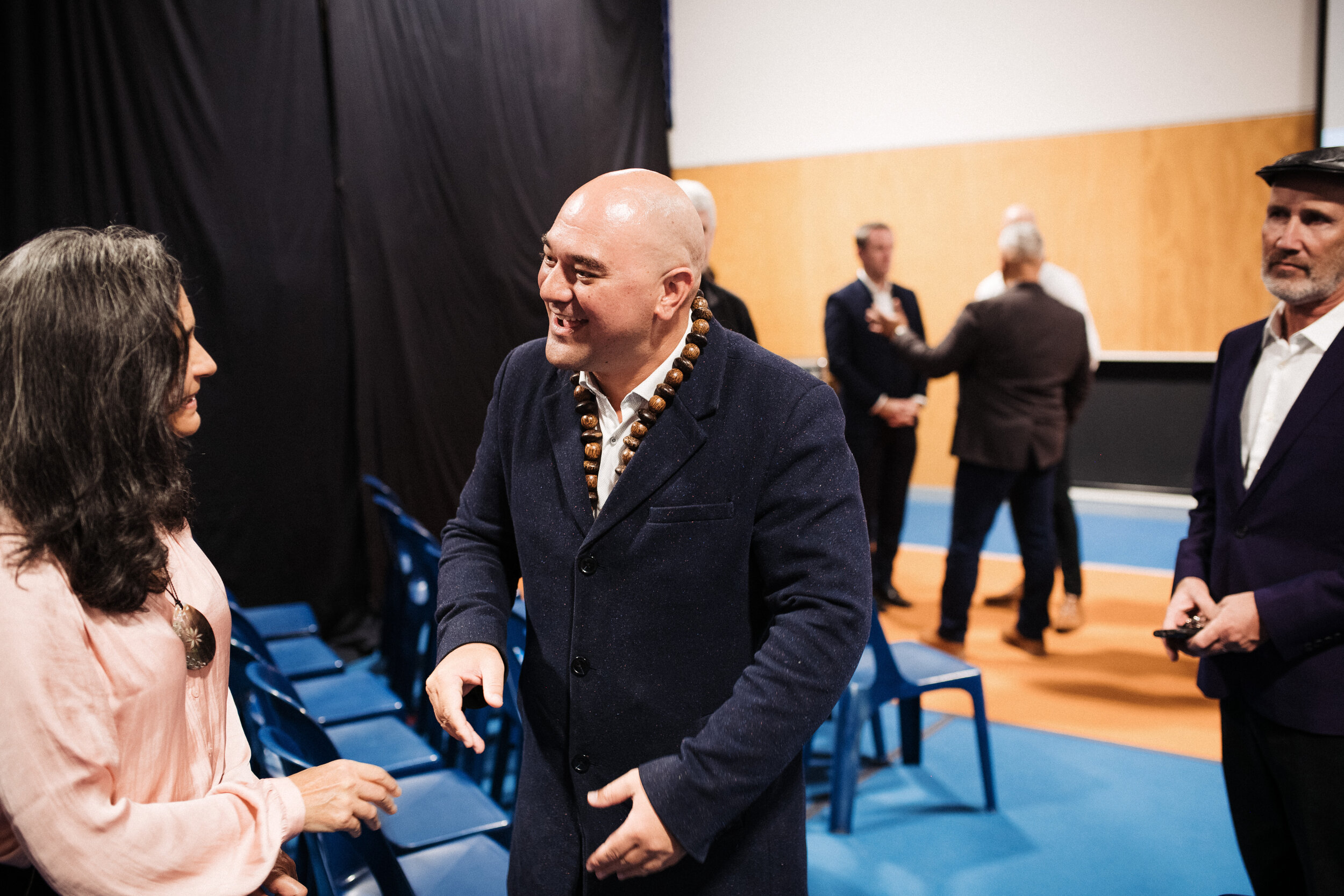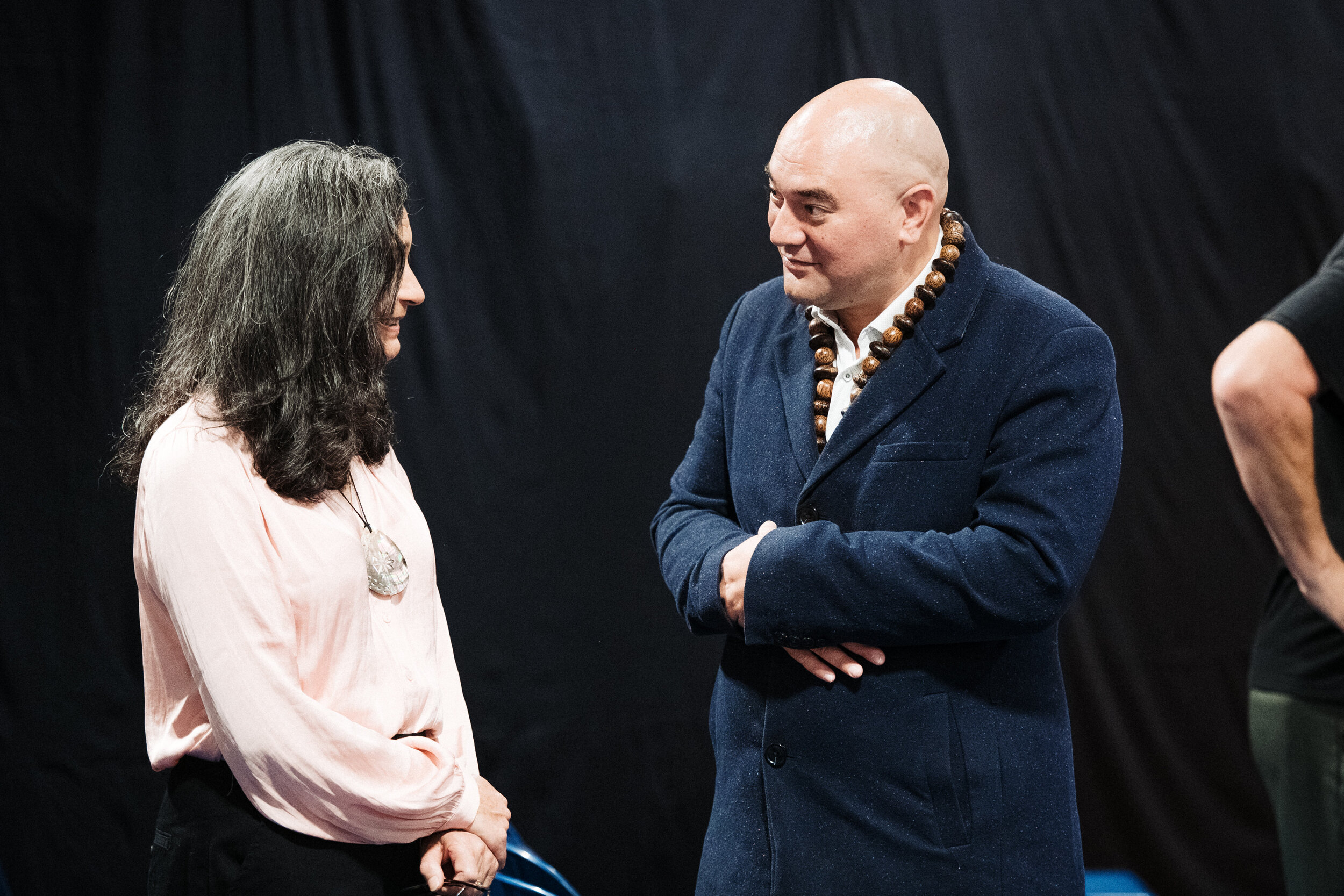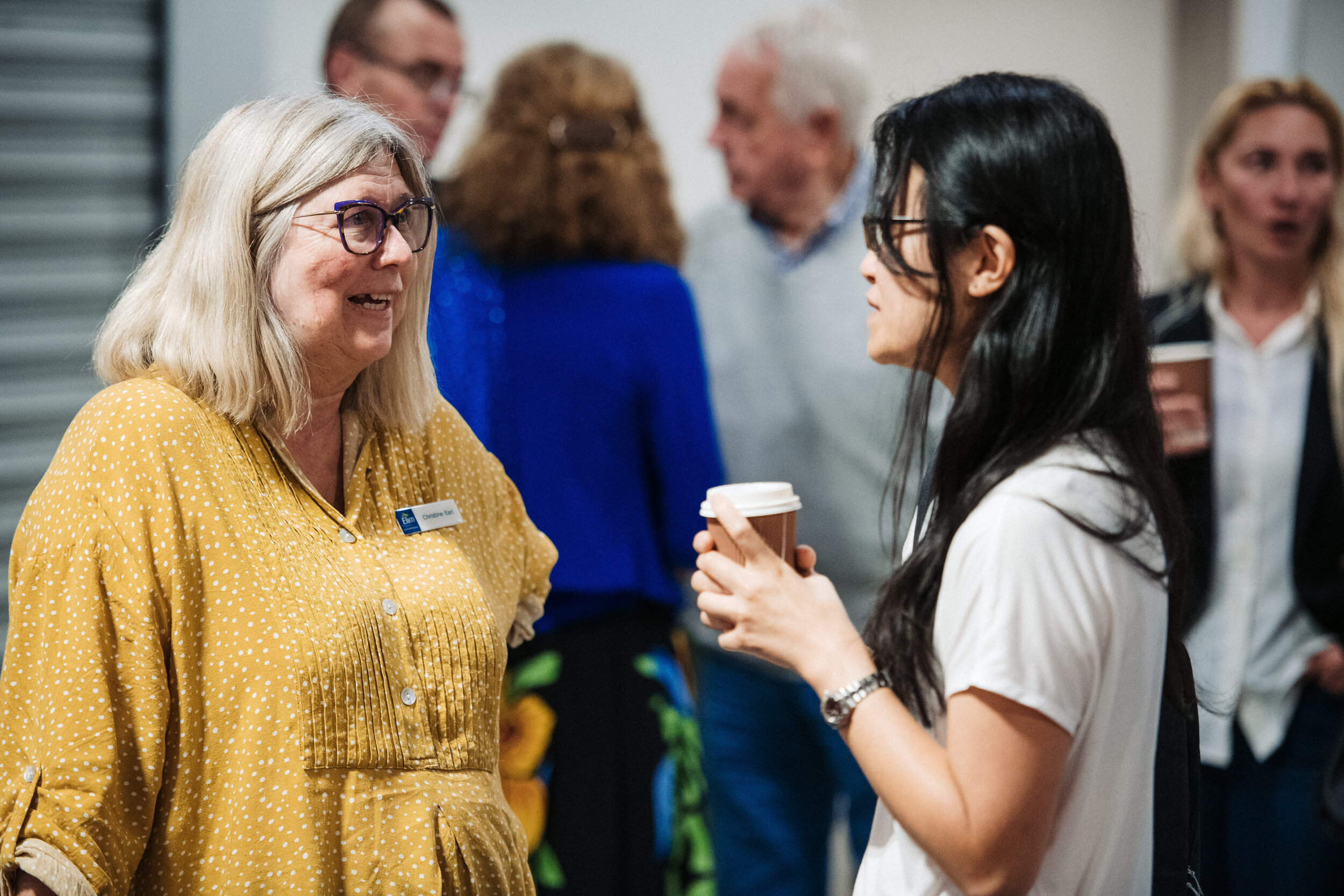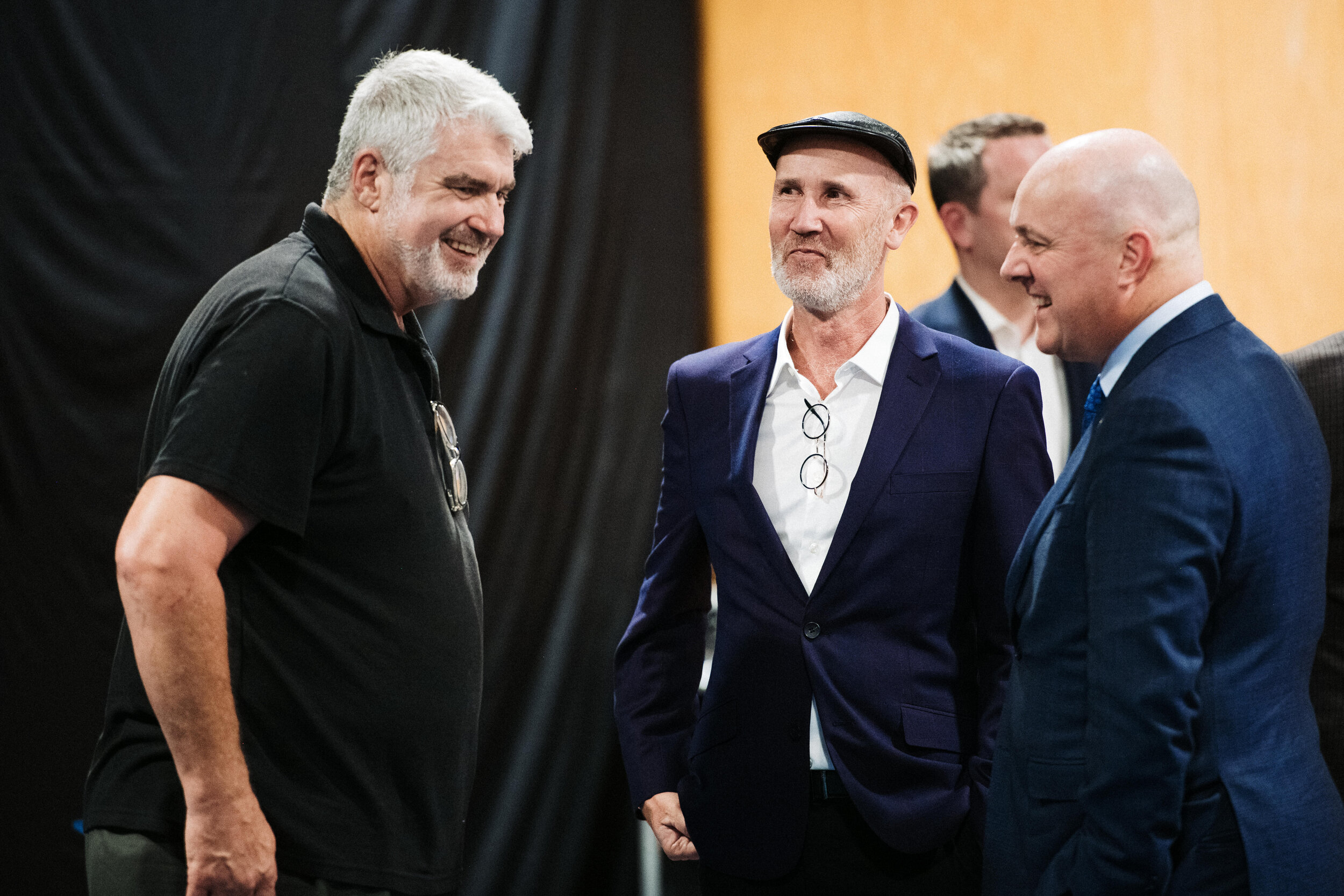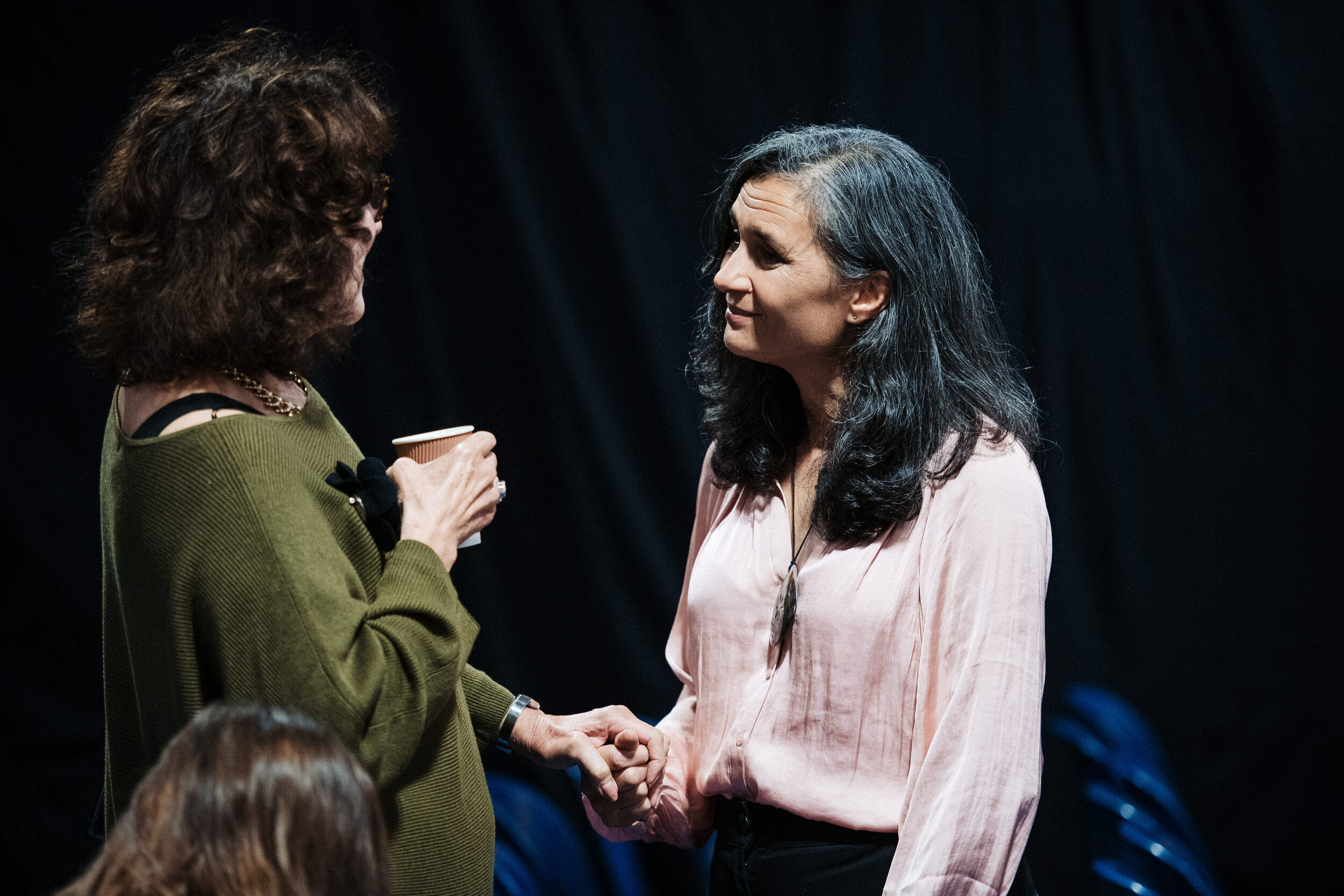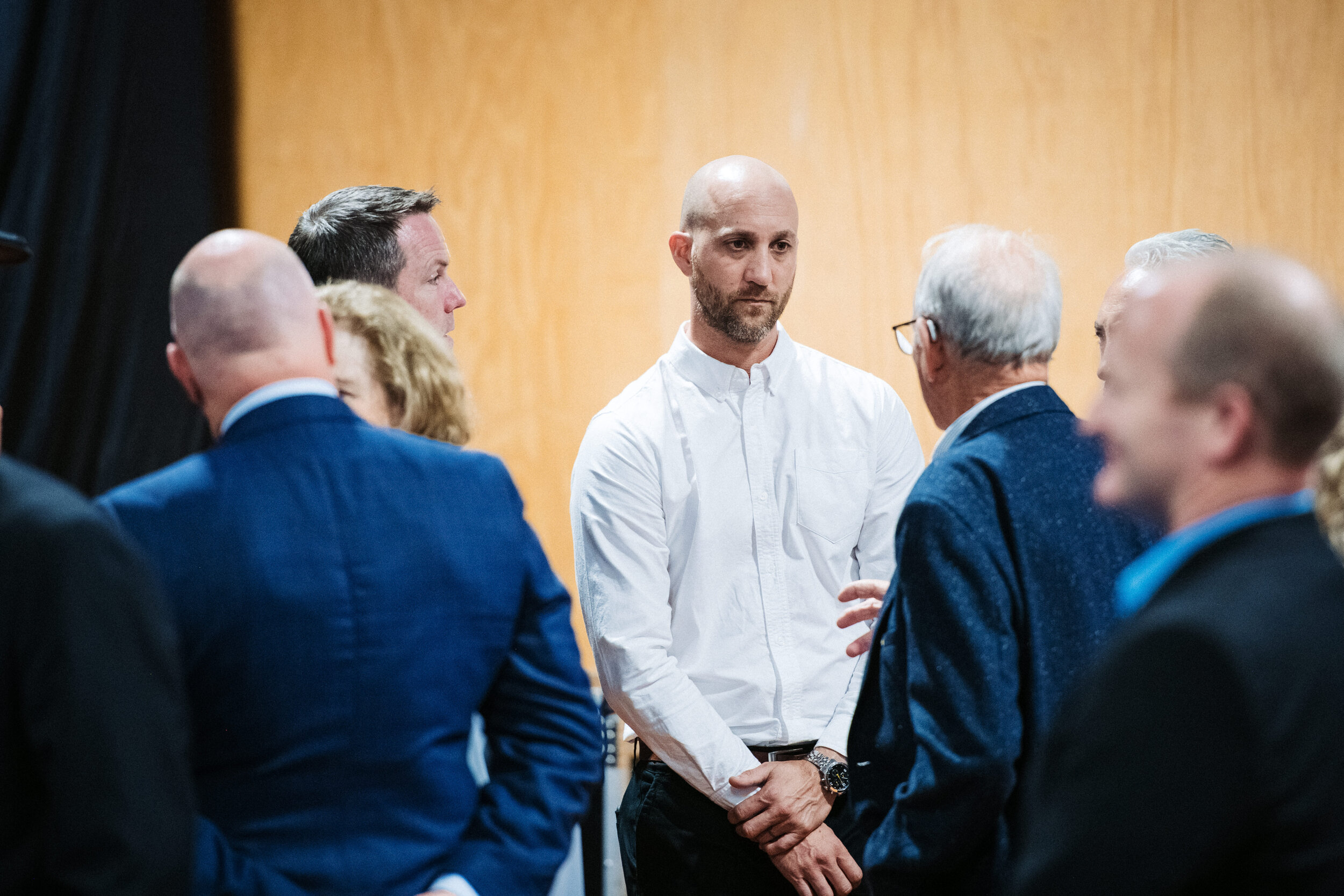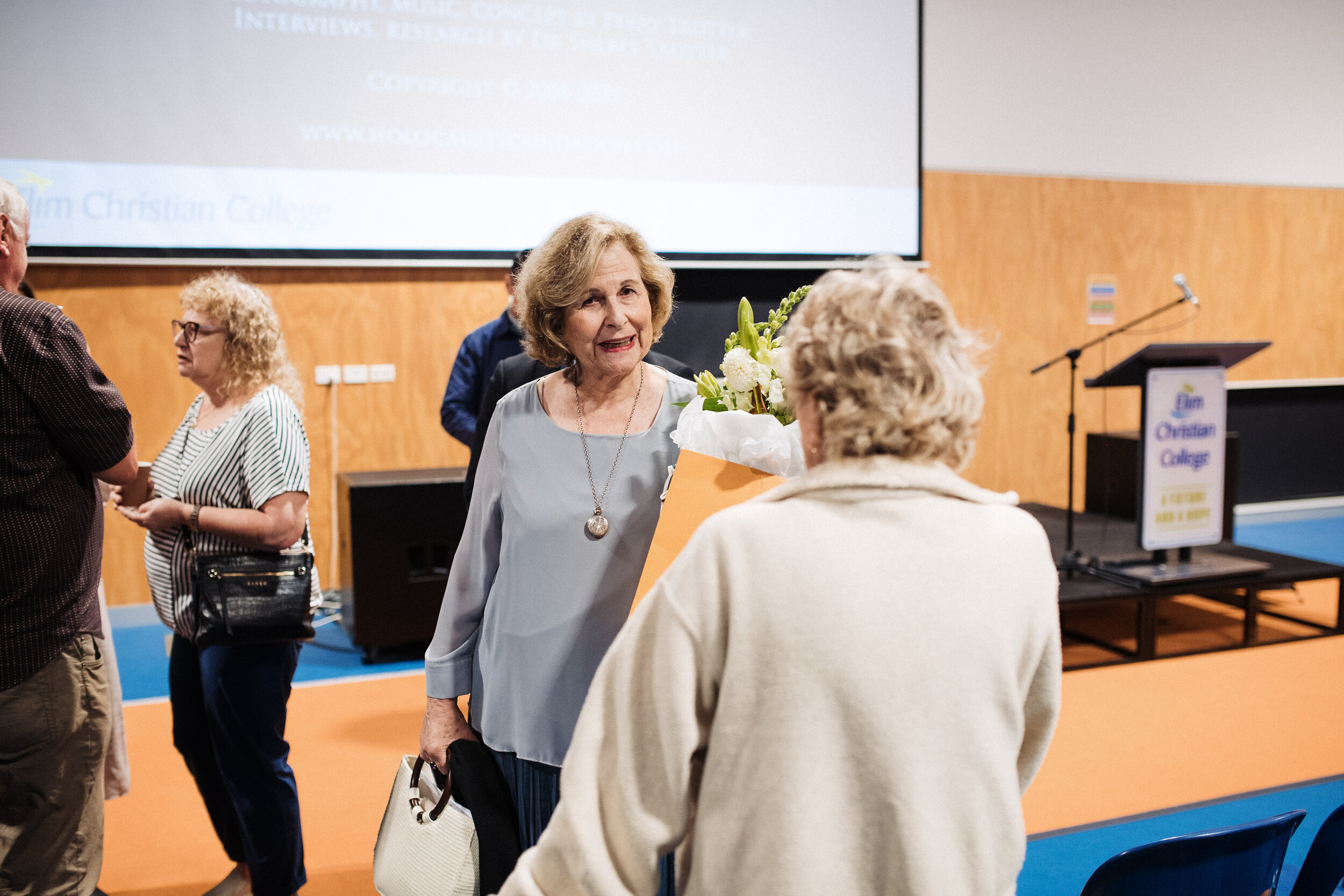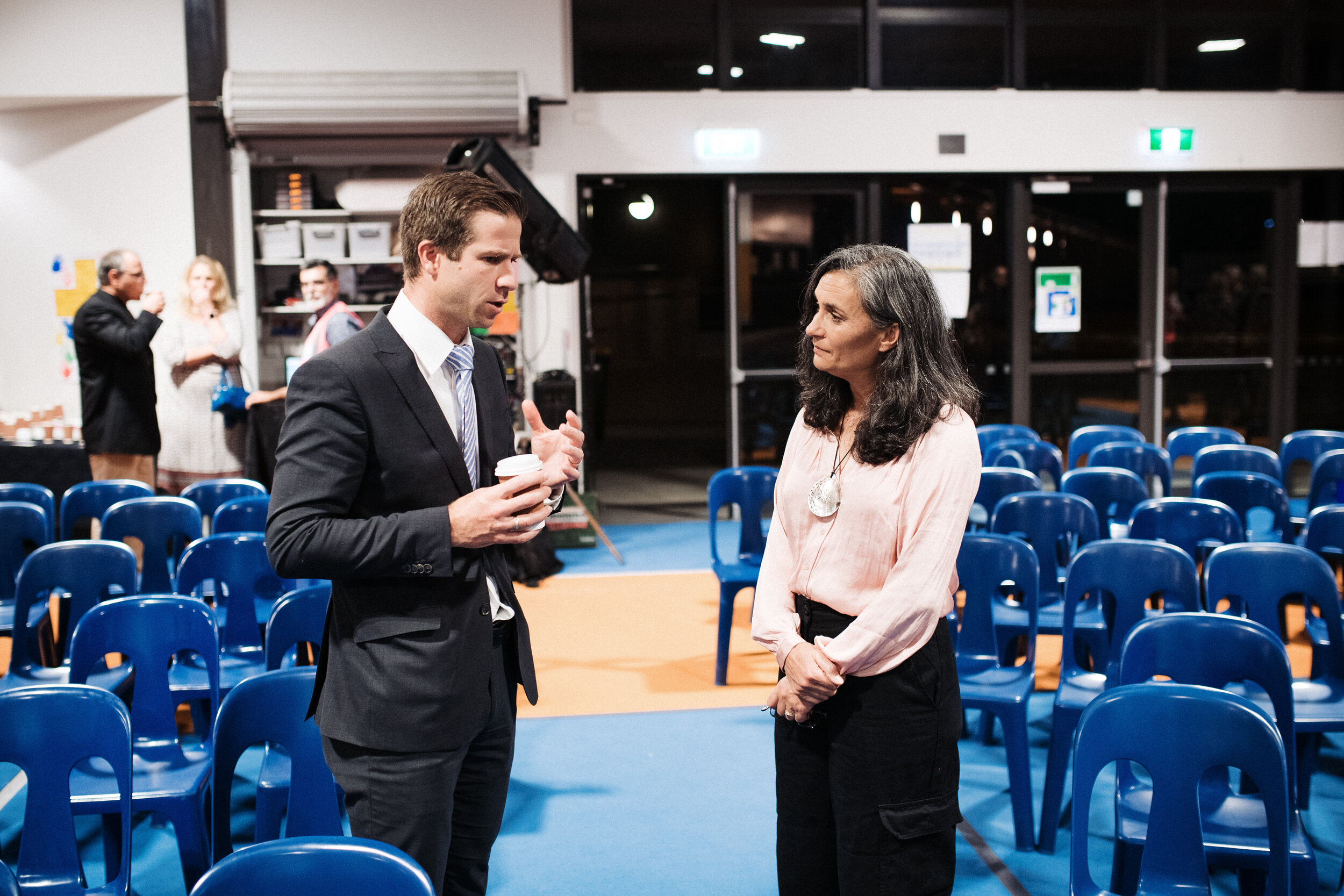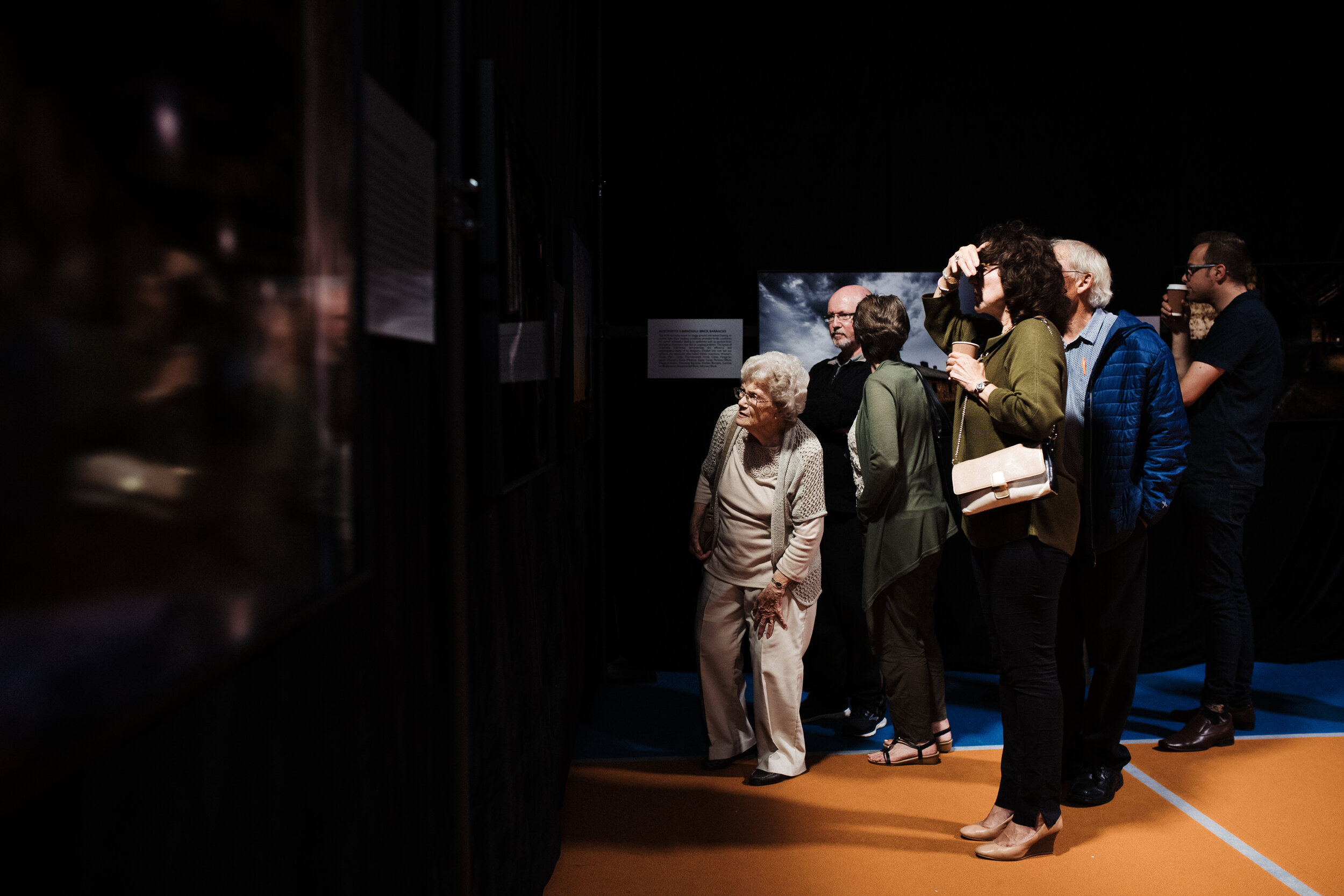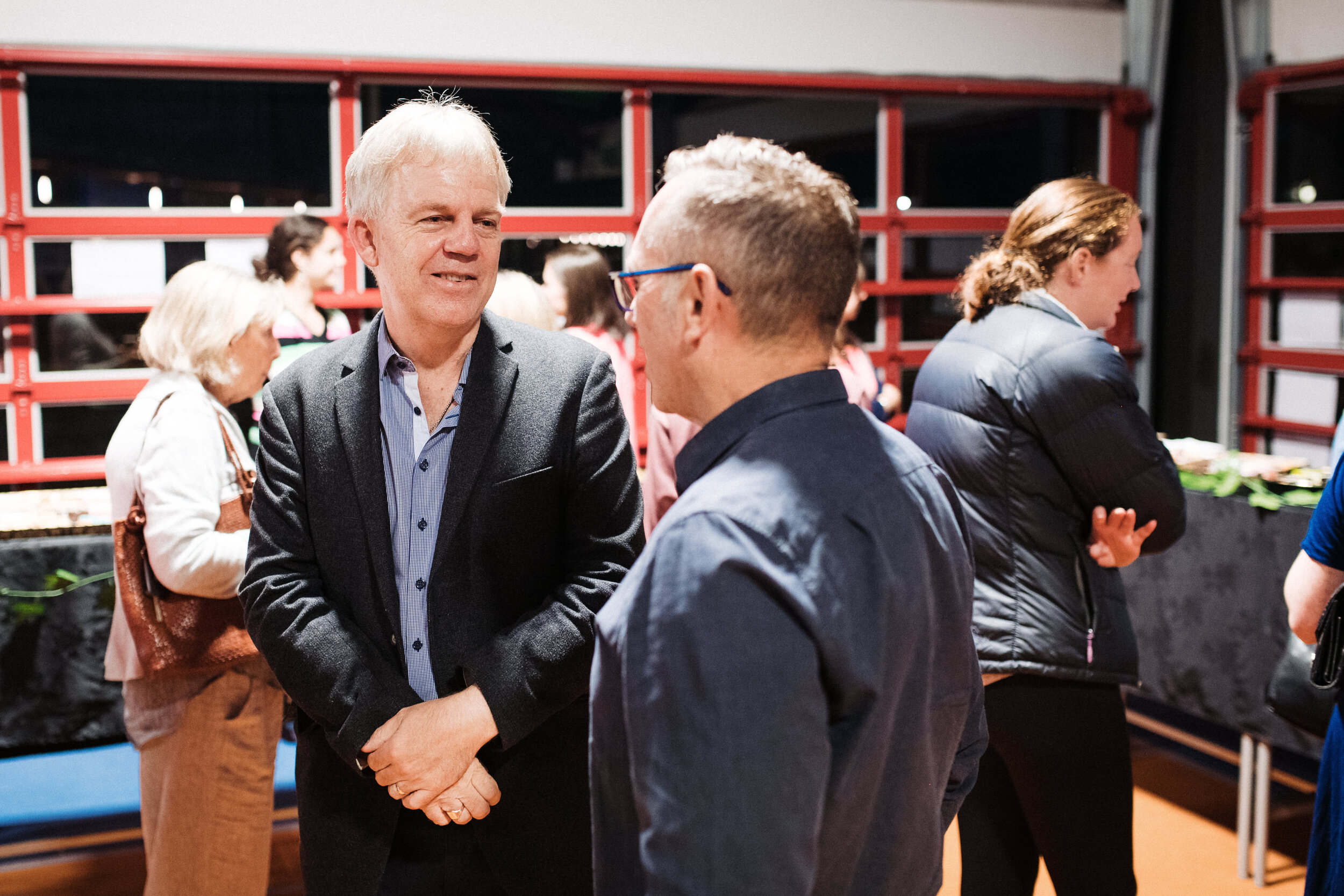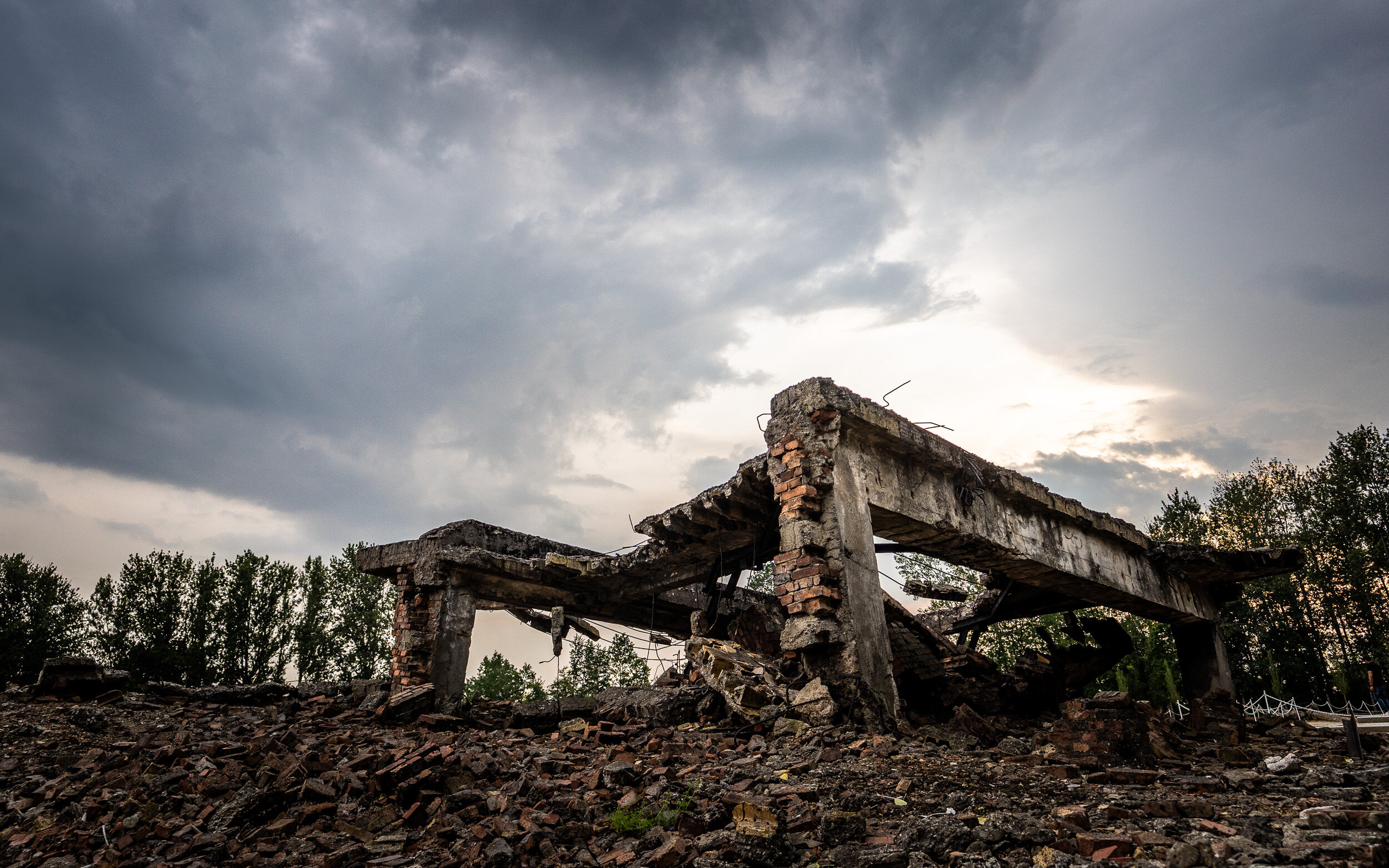The Blog of
Holocaust and Antisemitism Foundation Aotearoa New Zealand
Survivor to ex-Nazi camp guard: ‘You’ve lived 100 times longer than baby Erika’
Hearing that testimony in Hebrew in a German courtroom was an unforgettable experience and one which I found extremely moving.
First published on Times of Israel
Holocaust survivor Emil Farkas of Haifa was one of the best gymnasts in Israeli sports history. He was Israeli National champion twice and won multiple medals in the Maccabiah Games. But his greatest badge of honor may be the testimony he gave in a German court earlier this month.
At nearly 93, Farkas was the first witness to testify in person — and, apparently, the only Israeli survivor who will do so — at the trial of former S.S. guard Josef Sch ü tz, who served for almost three years in the notorious Sachsenhausen Nazi concentration camp.
Emil was born in February 1929 in Zilina, then Czechoslovakia and today Slovakia, to a middle-class Orthodox Jewish family. His father managed a shoe store that sold orthopedic shoes, and his mother was a nurse. He was the youngest of five siblings: four brothers and a married sister , who was the mother of a one-year-old daughter named Erika.
In the wake of the Nazi invasion of Bohemia and Moravia in March 1939, Slovakia became a separate political entity, ruled by the fascist Slovak Hlinka Guard, in effect a satellite state of the Third Reich. Restrictions on Jewish life became increasingly severe: the yellow badge was made obligatory, and, in March 1942, the first deportations to Auschwitz and Majdanek began, as did the tragedy of Emil’s family.
Among the deportees to Auschwitz were his brothers Bela and Arpad, his sister Peppi and her husband and infant daughter, all of whom were murdered there. Emil was soon sent to two Slovak forced labor camps, first to Novacky and later to Sered, and from there in 1943 or 1944 to three German concentration camps in which the conditions for the prisoners were much harsher, and the chances of survival much slimmer.
The first was Sachsenhausen, where by sheer luck his athletic prowess helped save his life. Every day Emil would get up an hour or so before rollcall, wash himself with snow (in the winter) and do gymnastic exercises with incredible precision. The S.S. guards were shocked by his performance and reported him to the camp commander, who transferred him to work on the “Shoe-Testing Commando,” a group of political prisoners (all non-Jews), whose task was to break in new army boots for the S.S. They did so by marching 30-40 kilometers from 5 a.m. to 5 p.m. each day in a brand new pair of boots, while singing German military songs. Their reward was an extra piece of bread, which helped Emil survive, but if not for his physical strength and stamina, he may have shared the fate of other prisoners who died in the course of these grueling marches.
From there, he was deported to Bergen-Belsen, where he barely survived a savage beating by camp commandant Josef Kramer, a notorious sadist who was hanged by the British after the camp’s liberation. From Bergen-Belsen, Emil was sent to Dachau, where he was liberated by American soldiers, and nursed back to health with the special assistance of a Jewish US Army officer.
Needless to say, testifying at the trial was not an easy task for Emil. Preparing a chronologically accurate narrative of all the different camps and important incidents would have been a challenge for someone half his age, let alone a nonagenarian of almost 93. Luckily, German lawyer Thomas Walther was leading the Farkas “team” — Emil’s relatives and myself invited to accompany him to the trial. Walther, who together with his colleague Kirsten Goetze is responsible for the dramatic change in German prosecution policy vis-à-vis Nazi war criminals that facilitated the belated German trials of the last decade, crafted a dramatic statement for Emil to deliver at the trial.
After relating the major details of his travails in the camps in which he was incarcerated, with a special emphasis on Sachsenhausen, Emil addressed the defendant directly:
“I am sure you must have seen me many times running with the ‘Shoe Commando.’ Today I came to Brandenburg to see you. And therefore I want to ask you: At the end of your one-hundredth year, is your dark secret worth so much to you, that you cannot bring yourself to apologize for your contribution to my suffering? Isn’t it time for you to be brave?
“You didn’t only see me, you also always heard me sing the song I was forced to sing. The name of the song was ‘Erika.’ And thus you heard me sing the second stanza again and again…as I thought about my sister Peppi’s one-year-old daughter, whose name was Erika.
“You Mr. Schütz, you became an adult, living 100 times longer than Erika!”
Hearing that testimony in Hebrew in a German courtroom, read by Emil’s granddaughter’s husband Doron Ben-Ari who had to replace Emil for technical reasons, was an unforgettable experience and one which I found extremely moving.
Emil gave an equally poignant speech on Friday night at the main Berlin synagogue and magnified the impact of his presence at the trial through powerful interviews with the media in which he emphasized the importance he attributes to trials of elderly perpetrators like Schütz, even this many years after the crimes were committed. Our visit with him to Sachsenhausen with Dr. Astrid Ley, the director of the memorial site, also received extensive media coverage.
The hospitality extended by the German government was remarkably gracious — everything possible was done to make Emil and our group feel that we were honored guests. Even more striking was the camaraderie that developed within our delegation under the leadership of Walther, a Righteous Among the Nations German lawyer who has devoted his life to a shared cause. We were a group of Israelis of different persuasions, ages and religious observance, united by our commitment to the mission and thrilled to be able to participate in achieving justice for Holocaust victims and survivors.
The Resistance Hero Who Infiltrated Auschwitz
“…the one and only aim of the military operations was to hold back the inevitable victory by the Soviet Union and the Western Allies long enough to complete the extermination of the Jews.”
A book review by Dr Norman Simms
Jack Fairweather, The Volunteer: The True Story of the Resistance Hero Who Infiltrated Auschwitz.
London: W.H .Allen, 2019; pbk, Penguin, 2020. xix-504 pp. Profusely illustrated with black-and-white maps, drawings and photographs.
This is the story of Witold Pilecki. He was not a Jew and his story becomes one about the Holocaust only as he realizes that by 1942 the Germans had one aim in the Second World War and that was to exterminate the Jews throughout Europe. He volunteers to go into Auschwitz in order to organize a resistance movement among the Polish prisoners, sees the transformation of the concentration camp into an extermination camp, and the shift from Polish and other resistance fighters, Russian POWs and other political inmates to an almost totally Jewish intake of men, women and children to be gassed and cremated.
His original mission was to enlist some of his comrades from various resistance groups and political parties who were opposed to the Nazi and Soviet occupation of Poland. Then gradually, as the Final Solution took shape, he added new aims to his duties. He was to send reports back to Warsaw on what he saw happening, and these reports were to be passed on to the Polish government in exile in London, which was then to seek support from the Allies in aiding the resistance movement. Then these goals changed. At first, he was frustrated by the failure of the leaders of the Polish underground to understand the nature of Nazi cruelty and the large number of murders they were carrying out in Auschwitz.
When he managed to return to Warsaw to argue the case with his comrades, he found them not only incredulous and unwilling to accept that the nature of the war itself was changing. His own informants, as well as his close listening to radio broadcasts from around Europe and his reading of newspapers from London, made him see that the Allies were unable and increasingly unwilling to act on the enormity of the crimes being carried out, especially when the Americans, French and British commanders were being called on to retaliate and take revenge on German and occupied cities for what the Nazis were doing to the Jews.
Moreover, the Russians—that is, Joseph Stalin—had his own plan to seize control of Poland, destroy its bourgeois infrastructure, murder its intellectuals and spiritual leaders, and rule it as a vassal state. Even when the Soviet armies were standing across the Vistula and the Polish patriots came out in an uprising, Stalin held his troops back and let the Germans destroy the city and kill as many civilians as possible. Franklin Delano Roosevelt and Winston Churchill made little complaining noises and Stalin made a few token acts, but basically no one was willing to rescue Poland, just as they had no intention of stopping the genocidal murder of millions of Jews. In other words, no one in the world was willing to listen to Witold Pilecki.
Jack Fairweather, a former war correspondent, author of several other books about his experiences in combat zones. Worked with a research team to gather together the information needed to put together The Volunteer. He claims that everything in his biography of Witold Pilecki is based on published evidence, private letters and other documents, interviews with surviving family members and wartime friends, as well as people who knew and collaborated with the resistance hero: and he gives his sources in more than fifty pages of notes. Her also adds a small section listing and describing the main figures who are mentioned in the book and provides an index to aid students seeking to trace out patterns of action, places and ideas, There is also a Selective Bibliography of nearly sixty pages. In brief, this is a serious book to be reckoned with.
And well it should be. Fairweather gives his personal motivation for writing The Volunteer:
I also felt personally challenged by the story—I was the same age as Witold when the war began. I also had a young family, and a home. What would make Witiold risk everything on such a mission and why did his act of volunteering speak so powerfully to me? I recognized in Witold the same restlessness that had led me to war and troubled me ever since. What could Witold teach me about my own struggle to connect? (p.xiii)
Thus, this is no dry, scholarly, objective account. There is justified passion behind Fairweather’s history. He writes with powerful but controlled rage against the silence, inactivity and willful ignorance of the powers that be that did not take Witold Pilecki’s reports into account in planning the end of the war against Nazi Germany and the re-organizing of European states afterwards so that those held responsible for the crimes committed would be punshed and the ideas they represented would be scraped away from the remnants of the civilization the war was conducted to destroy. It was bad enough that throughout the 1930s the Great Powers and the Press trivialized or ignored the rise of Fascism, Nazism and Communism as loathsome ideologies run by insane and wicked dictators. Fairweather sums up his work on the Holocaust: “a failure to recognize and act on its horror” (p. xv). It was for this reason not just a strategic lapse of judgment, as Catrine Clay showed in The Good Germans (reviewed on this Blog on 18 August 2021), in that there were many moments before and during the war when support by the British, French and Americans could have resulted in a coup d’état or assassination of Hitler, but an unforgivable moral failure.
One wonders whether today, two decades into the twenty-first century, these same world leaders, journalists and international organizations are up to preventing another catastrophe of the sort Witold Pilecki bore witness to and warned against. My own feelings are not very sanguine, even in the midst of several concomitant crises—climate change and the Covid-19 pandemic, to name but two.
The narrative opens with the German invasion and occupation of Poland. Though Hitler had already announced his plans to annihilate all of the Jews in Europe, for the Polish people, its army and soon to be resistance organizations, the focus was clearly on salvaging what they could of their own country. They did not see in the Einsatzgruppen and other murder squads taking Jewish men, women and children from conquered Polish villages and towns into the forests to shoot en masse as anything special. The Nazis were also doing the same to Polish priests, teachers and other intellectuals. Witold Pilecki was one of those heroes who failed at this point to rise to the occasion, except as a Polish patriot.
Once sneaked into Auschwitz, which was a relatively small camp, Witold notes down the treatment of prisoners, and the way the kapo system worked; he reported those who were singled out for extra harsh punishments—priests and Jews; who even then made up a small percentage of the total. Individuals who released from the camp to return to Warsaw became the means for sending messages back to the resistance leaders. Yet he noticed more than the tallies who arrived and whose corpses disappeared into the pits and the documents that could be photographed and sent away in microfilm. According to Witold’s diary compiled somewhat later:
Most inmates underwent a personality change upon arriving in Auschwitz. The camp’s unremitting violence broke down the bonds between prisoners, forcing them to turn inward for survival. They became “cantankerous, mistrustful and in extreme cases even treacherous.” (p. 59)
For the non-Jews who formed the majority of prisoners in the early months of his work in the camp, survival remained at least a remote possibility and Witold could call on their nostalgia for home and their desire to inflict revenge on the Nazis through the resistance network he gradually put together. But still the response from Warsaw and London was cautious about mounting an attack on the concentration camp to allow an escape and call attention to what the Nazis were doing which was already way beyond the mere breaking of the Geneva Conventions for treatment of civilians and prisoners of war. The failure of imagination and the lapse in empathy deeply disturbed Witold Pilecki and forced his own personality to change. He was able to reformulate his insight into what was happening around him.
The camp had a way of stripping away pretensions to reveal a man’s true personality. “Some—slithered into a moral swamp,” Witold wrote later, “Others—chiseled themselves a character of finest crystal.” (p. 85)
Some slithered so far down into the swamp as to become Muselmänner, a condition wherein body, mind and soul slip away into virtual nothingness. Witold describes one such inmate reduced to subhuman status:
Even resting, his body ached. His skin was shiny and translucent and sensitive to the touch; his fingers, ears, and nose had turned blue from poor circulation. A telltale sign of his emaciation was the swelling in his legs and feet caused by the fact that it took longer for the water content of the body to reduce than the fats and muscle tissues. It was almost impossible to get his trousers and clogs on in the morning. He could stick his thumb into his legs as if they were made of dough. (pp. 98-99).
As for his mental condition, this poor creature was barely able to think.
His thoughts were jumbled and incoherent, and he sometimes lost consciousness walking back to camp in the evening [after long hours of forced labor in the fields], but he somehow managed to keep marching. Then his brain would reengage, slowly at first, before with a jolt he relized how close he’d come to stumbling… (p. 99)
However, this example of Muselmann is not the severe cases that come soon, especially when the Jews begin to replace the Polish, Russian POWs and others in Auschwitz, that is, those with a modicum of hope for survival. The Jews, as they filled up the camp and quickly were murdered in the gas chambers, had no such hope and most could not call on any inner spiritual strength to keep them going when an inevitable and horrible death was all there was to foresee.
As Witold could see, gradually week by week, the cruelties in Auschwitz became worse, the camp was expanded to receive more Jews, and the hopeless of the situation was manifest. Though his messages convinced a few of his colleagues in the resistance, and we even seen as powerful to stir the conscience and action of the Allies, in the event—nothing. The British hesitated to use horror stories as though they were back in World War One when propaganda claims of German atrocities proved false, did not want to stir up their Arab friends in the Holy Land who would not accept Jews as refugees, and, as always, did not want any more Jewish immigration at home or in the Empire. The Americans and Canadians also hung back for all sorts of reasons, mostly untenable and cowardly. Occasionally a newspaper in the US or Britain placed a notice in about what was not yet called the Holocaust, but hid it away on some back page, and never followed up. Even a delegation of rabbis who marched on Washington, DC and demanded to meet with FDR, went home with a paltry five minute conversation and no promises. Everyone was afraid that revealing the extent of the crimes and using them as a means of justifying attacks on Auschwitz and similar camps “would stir up anti-Semitism at home”. It was no longer a matter of not knowing went on but of ignoring the plight of the Jews.
By the end of August 1941, Churchill understood that the Nazi campaign against the Jews was murderous and unprecedented in scale. But like [the head of the underground, Stefan] Rowecki in Warsaw, he too failed to identify it as genocidal. (p. 173).
This failure was later rationalized away. Theologians argued that it “was possible to live in the ‘twilight between knowing and not knowing’” (p. 174), some grey zone[i] of willful ambiguity and empathy. Hence the saying that “Everyone loves dead Jews but couldn’t care less about living ones”.
The longer the Resistance in Poland held back from a diversionary attack on the gates of Auschwitz so as allow some proportion of the prisoners to escape and to create a newsworthy event, the harder it became for Witold to keep together his small band of men willing to mount an uprising from within. His assistants helped him compile evidence and to even take photographs so that at some point in the not so distant future they could bring the Nazi monsters to account, but the endless delays in agreement from Warsaw and London wore down almost everyone’s willingness to risk their lives in a futile symbolic gesture. Weeks dragged on to months and months to years.
Occasionally someone from Witiold’s secret gang would escape, with a few documents and a memory stocked with precise details, and would sometimes after many months of sneaking from place to place reach London: only to be kept waiting for still more months. Meanwhile the number of murdered Jews mounted from the hundreds of thousands to the millions. More barracks were built, more gas chambers constructed, more crematoria incinerating innocent men, women and children. News filtered in of Nazi reverses, Russian advances, Western Allies landing in Italy and Normandy: but each day thousands of Jews died in Auschwitz and other extermination camps. Malnutrition, overwork, disease and insane medical experiments went on. Witold duly noted each of the new atrocities, recorded the numbers of disappeared and waited for some positive reaction from the Polish Resistance in Warsaw, the Polish government in exile in London, the High Command of Western Allies, the Soviet armies under the direction of a malevolent Uncle Joe Stalin.
The Volunteer is peppered with photographs, drawings and copies of documents, as well as anecdotes on the people who are victims and victimizers, which lightens the heavy load of horrifying information on how the Nazis operated and the resistance and allies prevaricated. This includes glimpses of Witold Pilecki’s family and friends, the people he had to choose more to ignore than not in order to serve the higher cause. The higher cause was to see and empathize with the men and women murdered in atrocious ways so that he could later write up his notes and thus to leave a personal witness to what all too many of his colleagues and supposed allies refused to recognize. Insofar as he ventured to express his psychological insights into whast it felt like to lose one’s basic identity, as well as one’s life’s work, family and sense of being human, he adds to the tragedy of his own life: his inability to convince enough of the right people at the right time to act. The personal frustration and the historical futility of his efforts make this book, as we have sad, something much more than an objective history of Polish Resistance or the Nazi Holocaust. What to him was excruciatingly clear from what he saw and heard in the dark hell of Auschwitz was often incomprehensible to others. In those final months of the war particularly, when a Nazi military defeat seemed inevitable and the time of reckoning approached, the moral failure of those around him became unbearable to Witold.
From the time of the Wannsee Conference in which the Endlösung (Final Solution) was officially formulated as a coherent plan, the inner rage of Witold and his close associates who gathered the information, carried it to the Big Shots, and stood in shocked disbelief when they refused to see what was clear for anyone with half a brain to see and then to act on it. At certain times, too, the leaders of the Reiostance went beyond ignoring Witold and his messengers: they blocked their passage. Not just Witold in his official reports and private journals feels the frustration, but the author of this modern book, Jack Fairweather, keeps repeating the same message that nothing was done when there was time to do something, at most pious words and symbolic gestures.
It was obvious that the Germans meant to kill every Jew they could lay their hands on. The morale of his men had plunged and petty rivalries and squabbles had surfaced as their sense of purpose slipped away. He wasn’t sure how much longer he could hold the underground together. (p.270).
Unable to see what had happened at least by 1942, that whatever other aims Hitler may have had in starting the war in terms of gaining territory and control over vast populations of slave laborers, the reality was that—as secret documents discovered after the war, but also in speeches given by the Nazi elite to their leading generals and Gauleiters (district rulers)—the one and only aim of the military operations was to hold back the inevitable victory by the Soviet Union and the Western Allies long enough to complete the extermination of the Jews. As the end closed down on them, the Nazi leadership, with Hitler in the centre, became manifestly insane, called for the destruction of Germans and Germany in an apocalyptic end to the world, the Gotterdammerung.
As Szmul Zygielbojm, one of only two Jews to sit on the London-based Polish government in exile, said in his suicide note, expressing his utter frustration and disappointment with all the leaders of the war against the Third Reich:
By my death, I wish to give expression to my most profound protest against the inaction in which the world watches and permits the destruction of the Jewish people.
And the world’s response: silence.
[i] The Grey Zone, (2001) a film written and directed by Tim Blake Nelson, and starring David Arquette, Steve Buscemi, Harvey Keitel and Natasha Lyonne, telling the story of the Auschwitz Twelfth Sonderkommando unit which, knowing that they like the eleven groups before them would be murdered in turn, staged the only known revolt in the extermination camp. Compare it to Son of Saul ( Saul fia) a 2015 Hungarian film directed by László Nemes, co-written by Nemes and Clara Royer. The “grey zone” represents the dark and gloomy images of the Jewish prisoners assigned to lead their coreligionists into the gas chambers and then, after stripping their bodies of valuables, push them into the crematoria or burning pits nearby; and the horrible situation in which survival depends on collaboration with the enemy.
“We were Jewish so we were taken.”
In 2015 I travelled to Israel to attend the Global Forum For Combatting Antisemitism. While there Dr Efraim Zuroff introduced me to Lydia Brenners, a survivor living in Rishon Letzion. With a colleague I visited Lydia at her home and photographed her while she told her story of survival. Born in Novi Sad, in then Yugoslavia (now Serbia), she survived the 1942 Novi Sad massacre. Watch Lydia’s story of survival.
In 2015 I travelled to Israel to attend the Global Forum For Combatting Antisemitism. While there Dr Efraim Zuroff introduced me to Lydia Brenners, a survivor living in Rishon Letzion. With a colleague I visited Lydia at her home and photographed her while she told her story of survival. Born in Novi Sad, in then Yugoslavia (now Serbia), she survived the 1942 Novi Sad massacre. Watch Lydia’s story of survival.
How long before we can forgive? Nazi-Hunter responds
Lana Hart's op-ed "How long before we can forgive?" raised many important questions regarding the justice system and the attitude toward criminal offenders, among them the recently-deceased former Waffen-SS officer Willi Huber, who achieved hero status among local skiers for his contribution to the establishment of the skiing facilities on Mt. Hutt.
Nazi-Hunter Dr. Efraim Zuroff wrote the following op-ed in response to an article run by Stuff.
Stuff was unwilling to publish.
Willi Huber. Image: Mike Krean STUFF
Lana Hart's op-ed ("How long before we can forgive?" June 7) raised many important questions regarding the justice system and the attitude toward criminal offenders, among them the recently-deceased former Waffen-SS officer Willi Huber, who achieved hero status among local skiers for his contribution to the establishment of the skiing facilities on Mt. Hutt. Ms. Hart brings several examples of people punished for their behavior and a wide range of responses by the criminals to their punishments. And while she notes the importance of the severity of the original wrongdoing in determining a person's punishment, and the principle of proportionality, she fails to understand the significance of Huber's crimes and fails to attribute sufficient importance to his lack of remorse and his obvious adulation for the leader of the most genocidal regime in human history.
When elderly Nazi war criminals are brought to trial these days, the obvious question is whether such trials serve any important purpose, so many years after the crimes were committed when the suspects are frail and elderly. So as a person who has had to answer those questions time and again, I want to share my response with the readers in New Zealand, who have never had to face such dilemmas, since their government is the only Anglo-Saxon country which admitted suspected Nazi war criminals which refused to take legal action against them.
1. The passage of time in no way diminishes the guilt of the perpetrators. Had they been prosecuted immediately after they committed the crimes, it would only have been natural, but the fact that they had eluded justice for decades (for whatever reason) does not in any way reduce their guilt.
2. Old age should not afford protection for those who committed such heinous crimes. Just because a person was able to reach a very advanced age, should not protect them from prosecution. The fact that a person is 90 or 95 or even older, does not turn a murderer into one of the Righteous Among the Nations.
3. We owe it to the victims and their families to bring those guilty of turning innocent men, women, and children into victims, just because they were categorized as "enemies of the Reich," to make a maximum effort to hold those guilty accountable for their crimes.
4. These trials send a powerful message that if you commit such crimes, even decades later, you might be held accountable. This is important because it sends a message to future genocidists and anyone contemplating joining fundamentalist terrorist groups, that while conventional justice is never perfect, the hunts for such criminals go on as long as any of them are still alive.
5. These trials play an important role in the fight against Holocaust denial and distortion. The latter has become a serious problem throughout post-Communist Eastern Europe, where governments seek to hide the participation of their nationals in Holocaust crimes. The former remains a serious problem in Arab and Moslem lands, where it is often government-sponsored and financed.
6. These are the last people on earth who deserve any sympathy, since they had no sympathy on their victims, men, women, and children, some of whom were even older than they are today. When they appear in court these days, they naturally look old and frail (and many try very hard to look even weaker than they actually are), but they didn't commit the crimes they are accused of when they were elderly, but rather many years ago at the height of their physical strength and prowess.
7. Contrary to what many people think or assume, there never was a case of a German or Austrian who was executed for refusing to murder Jews. In many cases, if a person did not want to participate in executions, they could refuse to do so, without any serious penalties.
8. One final point. In all the cases that I have helped facilitate prosecution by finding the perpetrator, there has not been a single defendant, who ever of his or her own volition, expressed any regret or remorse.
Zuroff during an interview at King David Hotel, Jerusalem 2017
Very often, the families of the suspects, accompany them to their trials, and try to create sympathy for them. Invariably, however, the victims have no family members alive who can do so, since they too were murdered by the Nazis and their local collaborators. Consider this article as written by their emissary.
Dr. Efraim Zuroff is the chief Nazi-hunter of the Simon Wiesenthal Center and the director of the Center's Israel Office and Eastern European Affairs. He serves on the International Council of the Holocaust Foundation.
Times of Israel: NZ not opening files on ‘resettled’ alleged former Nazi emigres
“Our history was patchy at best,” said Trotter. “In the period between 1933 and 1939 a paltry 1,100 Jews were permitted into New Zealand — and those under the most stringent requirements. The policy was harsh and punitive.”
The widely reported death in New Zealand last year of former Waffen-SS soldier Willi Huber served to awaken the consciousness of New Zealanders to the reality that Nazi war criminals and sympathizers live, or have lived, among them.
Huber, who migrated to New Zealand in 1953, was a keen skier. Often referred to as “a heartland hero” and “the founding father” of the South Island’s Mt. Hutt ski field, he achieved near-legendary status in the skiing fraternity and was lauded by some media. He died never having publicly expressed any remorse for his wartime activities.
Since the end of World War II, New Zealand, like Australia, has served as a sanctuary for war refugees and other displaced persons (DPs), mainly from Europe. But not all, it seems, were honest about their background.
Huber, for example, denied that he had knowledge of any of the atrocities carried out by the Waffen-SS or of the equally well-documented persecution of Jews during the Holocaust. That denial is scorned by prominent members of the Holocaust and Antisemitism Foundation of Aotearoa New Zealand (HAFANZ) who point out that the Nazis’ Waffen-SS was a killing unit that operated outside the legalities of war. They insist that any member of the notorious organization would have been very aware of its modus operandi.
Those sentiments are echoed by HAFANZ International Council member Dr. Efraim Zuroff, director of the Simon Wiesenthal Center in Jerusalem. A distinguished historian, Zuroff insists that “the unrepentant Huber would have been very aware of the SS atrocities.” He also pointed out reported comments by the Austrian emigre that Hitler was “very clever” and “offered [Austrians] a way out” of the hardships they suffered after World War I.
Zuroff, who has devoted his life to tracking down Nazi war criminals and who these days is referred to as “the last Nazi hunter,” says he and others brought the identities of more than 50 suspected Nazi war criminals (previously reported as 46 or 47) living in the country to the attention of New Zealand’s government when he visited in the early 1990s. (Huber’s name was not among those Zuroff supplied).
“They were all Eastern European and mainly Lithuanian, and I’m sure there were others. Maybe many others,” Zuroff told The Times of Israel via telephone from Jerusalem in late April.
“We have no ability to monitor what happened to them. I know the New Zealand government appointed two detectives to investigate [those named], but the prime minister of the day refused to act on their findings,” Zuroff said.
It remains a sore point with Zuroff that successive administrations in New Zealand have failed to act on those findings.
“New Zealand was the only Anglo-Saxon country, out of Great Britain, the United States, Canada and Australia, that chose not to take legal action after a governmental inquiry into the presence of Nazis. This despite the fact that the lead investigator provided confirmation [of the presence of a Nazi war criminal in New Zealand] that should have been acted on,” Zuroff said.
The investigator he referred to was senior detective Sgt. Wayne Stringer, since retired, who reported that many suspects had already died and that he was able to strike others off the list.
Stringer notably confirmed that one of the names on Zuroff’s list was Jonas Pukas, a former member of the feared 12th Lithuanian Police Battalion, which massacred tens of thousands of Jews during the war.
When questioned at his New Zealand home in 1992, Pukas, then 78, insisted that he had only witnessed the killing of Jews and had not participated. However, he gloated, on tape and on the record, how Jews “screamed like geese” and he laughed when describing how victims “flew in the air” when they were shot.
Despite this, the government at that time decided there was insufficient evidence to charge Pukas with any crime. He died two years later, having lived out his final years in relative peace in his adopted country.
Attempts to reach former detective Stringer were unsuccessful. However, a Daily Mail Australia report from 2012 quotes Stringer as saying, “[Pukas’s] comments still haunt me… I’m confident Mr. Pukas was a war criminal.”
Members of New Zealand’s Jewish community share Stringer’s frustration. They want the list of names identifying Nazi war criminals and sympathizers — as supplied by Zuroff almost three decades ago — declassified so that those identified can be named. Though Zuroff himself is the one who supplied the names, he told The Times of Israel that he declines to publish them himself, as “that was the duty of the New Zealand government.”
Those identified relinquished any right to privacy, for themselves or their families, when they entered the country under false pretenses
A senior member of HAFANZ who asked to remain anonymous described the outstanding issue as New Zealand’s legacy of shame.
“Government bureaucrats in successive administrations wanted to be satisfied that declassifying the documents supplied and naming those identified would be in the public interest and would not breach privacy issues,” the HAFANZ official said. “Our answer to that is, the truth [about what happened and who was responsible] is surely in the public interest. As for privacy issues, those identified relinquished any right to privacy, for themselves or their families, when they entered the country under false pretenses.”
Given the amount of time that has elapsed since the war’s end and the fact that most, if not all, of the named parties are now dead, privacy issues today would be more likely to apply to the surviving relatives of those named.
The HAFANZ member said he hoped publicity would prompt New Zealand’s current government to do the decent thing and declassify the documents. “It’s only fair,” he said.
Historian and HAFANZ co-founder Dr Sheree Trotter said it was difficult to explain the government’s lack of response on identified war criminals — especially as it was so out of step with the country’s allies.
“The specific case of Willi Huber could be explained by a number of factors,” Trotter said. “Many New Zealanders struggle to face our own colonial past where injustices and crimes were perpetrated by our forebears. It’s easier [for some] to take the view that we should just move on.”
Critics of the lack of response by successive governmental administrations are annoyed that Jewish refugees, including Holocaust survivors, had to jump through many more hoops to be admitted into New Zealand than did Nazi sympathizers, war criminals and other undesirables.
“Our history was patchy at best,” said Trotter. “In the period between 1933 and 1939 a paltry 1,100 Jews were permitted into New Zealand — and those under the most stringent requirements. The policy was harsh and punitive.”
Hungarian-born historian and author Ann Beaglehole agrees. “Jews were considered extremely undesirable settlers in the 1930s and 1940s,” she said.
Beaglehole summarizes the recent history of Jews in her adopted homeland in an essay titled “The Response of the New Zealand Government to Jewish Refugees and Holocaust Survivors, 1933-1947.” It is a damning portrayal of attitudes of the day.
Hungarian-born historian and author Ann Beaglehole.
“A small number of Jewish refugees… admitted before the outbreak of war put a stop to most immigration… Government policy was primarily concerned with the maintenance of New Zealand’s ethnic homogeneity, with Jewish refugees and Holocaust survivors regarded as undesirable settlers,” Beaglehole writes.
In her acclaimed book “Refuge New Zealand: A Nation’s Response to Refugees and Asylum Seekers,” Beaglehole addresses some of the security issues New Zealand faced when selecting displaced persons for resettlement there.
“Security issues had to be considered. Selectors [of suitable DPs] were urged to take particular care with security screening to try to prevent war criminals, Nazi collaborators and traitors from entering New Zealand,” Beaglehole said.
Beaglehole quotes in the book a Department of Labour and Employment official as saying, “There will be Nazi sympathizers and communists amongst those [applying]. We want neither.”
“Despite New Zealand’s vigilance, some former Nazis were resettled in New Zealand,” the book continues. “A 1953 [Department of] Internal Affairs report noted: ‘For some time it has been fairly clear that wartime activities of a certain number… of DPs in New Zealand were highly dubious.’ It recommended that those concerned should not be naturalized and should be threatened with deportation.”
Of course, that never happened.
New Zealand’s current government appears no more enthusiastic about addressing the issue of resettled Nazi war criminals or declassifying documents relating to them than were past administrations.
NZ Prime Minister Jacinda Ardern speaks to journalists during a press conference at the Justice Precinct in Christchurch on March 20, 2019. (Marty MELVILLE / AFP)
A formal request by The Times of Israel to Prime Minister Jacinda Ardern resulted in an admission that she “has no knowledge of suspected Nazi war criminals being admitted into New Zealand following WWII.”
Ardern’s press secretary, Zach Vickery, suggested the writer contact Immigration New Zealand for the requested information. A formal request to that ministry resulted in a similar response from Immigration New Zealand General Manager Border and Visa Operations Nicola Hogg.
“Immigration New Zealand [INZ] has no record of visa applications for individuals entering New Zealand after WWII where Nazi war criminals or sympathisers were identified during processing,” said Hogg.
“INZ is unable to assess whether it holds any historical documents relevant to your request without specific details of named individuals. However, if you are able to provide individual names or cases, INZ may be able to investigate further,” she said.
This writer replied that Hogg’s response indicated “she may not grasp the fact that Nazi war criminals and sympathizers would be highly unlikely to mention their dubious ‘credentials’ on their visa applications.”
No further response was forthcoming.
New Zealander Lance Morcan is an independent author, film producer and screenwriter.
NZ Green MP’s Genocidal Cry Against the Jewish State
NZ Green Party MP Ricardo Menendez recently tweeted an image of himself and fellow Green MPs Chloe Swarbrick and Golriz Ghahraman at an anti-Israel protest in Auckland. The text accompanying his tweet: From the river to the sea, Palestine will be free!
Antisemitism is ancient, multifaceted and mutates readily. As has been observed by the Holocaust Foundation, and by international experts in the field, anti- Zionism is one of the most common and effective forms of antisemitism in the present age. Anti-Zionism is frequently granted a free pass, particularly when presented in the garb of human rights. Where open hatred of the Jew is frowned open, hatred for the Jewish state is permissible.
NZ Green Party MP Ricardo Menendez recently tweeted an image of himself and fellow Green MPs Chloe Swarbrick and Golriz Ghahraman at an anti-Israel protest in Auckland. The text accompanying his tweet:
From the river to the sea, Palestine will be free!
This is an unequivocal call for the destruction of the Jewish state. A jihadic slogan, frequently heard at terror supporting protests, From the river to the sea, Palestine will be free! is a call for the land between the Jordan river and the Mediterranean Sea to be free of Jews. It is a cry for ethnic cleansing and an implicit call for genocide.
Greens are on record as being in support of a negotiated two-state solution to the Israel-Palestinian conflict. Has that policy position now been superseded by an antisemitic call for ethnic cleansing?
Many New Zealanders have been alarmed by moves to introduce hate speech legislation. Yet even strong defenders of free speech recognise that incitement to violence should be disallowed. Remarkably, NZ’s Green Party is understood to be supportive of proposed hate speech legislation and yet in practice is willing to engage in, and tolerate within its ranks, actual hate speech,
The Holocaust and Antisemitism Foundation, Aotearoa New Zealand calls on New Zealanders to object to the mainstreaming of antisemitism by our Members of Parliament.
Holocaust Memorial Day 2021, Botany, Auckland
Over 260 attended the Yom HaShoah 2021 and “Auschwitz. Now.” opening event held at Elim Christian College. Guest speakers included H.E. Ambassador Ran Yaakoby, survivor Robert Narev OMNZ, Dr Sheree Trotter, Dame Lesley Max and Elim’s Murray Burton MNZM and Ps Steve Green. Rebbetzin Deb Levy Friedler MC’d the event.
The Holocaust Foundation held an event for Yom HaShoah (Holocaust Memorial Day) and the opening of the “Auschwitz. Now.” exhibition at Elim Christian College on 8 April.
Guest speakers included H.E. Ambassador Ran Yaakoby, survivor Robert Narev OMNZ, Dr Sheree Trotter, Dame Lesley Max and Elim’s Murray Burton MNZM and Ps Steve Green. Rebbetzin Deb Levy Friedler MC’d the event.
MP’s in attendance included Christopher Luxon, Michael Wood, Chris Penk and Simon O’Connor.
Principal Murray Burton MNZM presented the Israeli Ambassador with a gift as an expression of Elim’s support for Israel and Jewish people. Elim has sent 200 senior students to Israel in past years.
The event was well supported with 260 in attendance.
The exhibition remained open to the public till Sunday 11 April.
Dr Sheree Trotter addressed more than 400 students during the exhibition’s tenure at Elim.
Scroll down to view the full gallery of event images.
Event images courtesy of Smoke Event Photography
An 80-year search for ‘the student K,’ murderer of Jewish babies
This is a story about a Nazi war crimes investigation that began in 1945 and continued intermittently until 2021. It is a good example of why, even today, it is still important to try and achieve justice.
First published by Times of Israel
This is a story about a Nazi war crimes investigation that began in 1945 and continued intermittently until 2021. It concerns the brutal murder of Jewish infants in Raseiniai (Rasein in Yiddish and Hebrew), Lithuania, and is a good example of why, even today, it is still important to try and achieve justice. This week we observe the International Holocaust Remembrance Day mandated by the United Nations in 2005, and therefore it is an especially appropriate time to share this episode in the ongoing efforts to hold the perpetrators of Holocaust crimes accountable.
In 1945, Leib Kunichowsky, a Lithuanian Jewish survivor of the Kovno (Kaunas) Ghetto, began to record the testimonies of the few Holocaust survivors from the local provincial communities. This was a particularly important mission in view of the extremely high murder rate in those towns and villages. Of the 220,000 Jews who lived in Lithuania under the Nazi occupation, 96.4% (212,000) had been murdered, but most of the survivors were from the large ghettos of Vilna (Vilnius), Kovno (Kaunas), and Shavli (Siauliai). Approximately 100,000 Jews lived in the provincial communities, which had been so terribly decimated at an even higher rate. For the next four years, initially in Lithuania and later in the Displaced Persons camps in Allied-occupied Germany, Kunichowsky sought out the few survivors and recorded their testimonies in Yiddish in longhand, making sure that both he and the survivors personally signed each and every page. The result of this mission was a collection of 1,684 pages of testimony in Yiddish that contained much priceless information about the fate of the provincial Jews.
Lithuania’s enthusiastic local collaborators
Kunichowsky’s collection also had another unique aspect, which made it even more valuable. Unlike many other testimony projects conducted at that time, he focused inordinate attention on the identity of the perpetrators, which in Lithuania was of particular significance due to the critical role played by local Nazi collaborators in the murders, especially in the provinces. And since, in almost all those locales, those who participated in the murders were often known to the local Jews, the survivors were able in many cases to identify their tormentors. The result was that Kunichowsky’s collection contained the names of 1,284 Lithuanian perpetrators, a veritable treasure of information of great potential value for prosecutors and investigators.
I first learned of the existence of the testimonies in 1980, while working as a researcher in Israel for the US Justice Department’s Office of Special Investigations, which prosecuted the Nazi war criminals who had immigrated to the United States after World War II. They were very interested in obtaining access to the testimonies. The problem was that Kunichowsky had insisted his collection be published in its entirety, and until that took place, he was not willing to share any of its contents with anybody, for any reason. Thus for 40 years, it remained completely inaccessible. This obstacle was only overcome almost a decade later in late 1989, when Prof. Dov Levin, the leading expert on the Holocaust in the Baltics and, like Kunichowsky, a survivor of the Kovno Ghetto, persuaded him to donate his collection to the Yad Vashem Archives.
Once the collection had been deposited in the archives, I immediately set out, with the help of my father, to extract all the names of perpetrators in the testimonies, a total of 1,284 names, of which only 121 were already known from other sources. My next step was to try and discover whether any of these criminals had emigrated to Western democracies. (By this point, it was common knowledge that thousands of Eastern European Nazi collaborators had immigrated postwar to the U.S., Canada, U.K., Australia, and New Zealand posing as innocent “refugees:”) This was possible by cross-referencing immigration data available in the International Tracing Service (ITS) records (also at Yad Vashem) with the testimonies, and in that manner I was able to find many dozens of suspects who had fled to the West and might still be alive.
Incredible cruelty
The testimonies in the Kunichowsky collection provide vivid details of the implementation of the Final Solution in Lithuania, the exceptionally critical role played by the local collaborators who were by far the majority of the killers, and the incredible cruelty of some of the perpetrators.
One of the testimonies which particularly upset me and clearly reflected the latter phenomenon was that of a woman named Dina Zisa Flum from the town of Rasein (Raseiniai), who survived by hiding in a pile of hay close to the pit where the murders took place in August 1941. In her testimony of April 4, 1945, she related that “While lying on the hay, I clearly saw two women standing near the pit [which the victims fell into after being shot-E.Z.] smashing the skulls of small children with a large rock or hitting the children by smashing their heads together. One of the women was the student K——.”
That image of “the student K.” has not left me ever since. Her family name (which shall remain under wraps for obvious reasons) indicated that she was single, but the witness did not indicate her first name. Even though I did not have her full name, I searched for her in the ITS records and found two possible candidates born two years apart who could fit the description and had fled Lithuania shortly after the war. The names were submitted about thirty years ago to the Nazi war crimes unit established in her emigration destination, but we never received any information on whether the local authorities had been able to ascertain whether either of the two female immigrants might be the infamous ‘student K.’
Fast forward another 30 years to the present. Our researcher on a different project, Dr. Abbee Corb, comes across my list of potential suspects, which included the two young women who might have been “the student K.,” and finds one of them alive and healthy at 97, residing not that far from her own home. The question then became whether we could verify her first name. In theory, the best solution would have been to send a trustworthy Lithuanian to speak to elderly residents of Raseiniai who may have known “the student K” or her family. But that town is now the COVID-19 capital of Lithuania, so no one is willing to take on the mission. Appeals on social media to find someone with links to Raseiniai residents also failed to produce a solution, but archival research appears to indicate that the elderly woman Abbee found might well be the criminal we have been looking for. Can we confirm it before the pandemic ends or she dies?
I cannot be sure, but I think our efforts, which hopefully will be successful, send an incredibly powerful message: If you brutally murder Jewish babies, there will be Jews, even 80 years later, who will strive to make sure you are held accountable. And that remains an important message in 2021 as well.
–
Dedicated to the memory of the Jewish babies brutally murdered in Raseiniai, Lithuania in August 1941.
Dr Efraim Zuroff is the chief Nazi-hunter of the Simon Wiesenthal Center and the director of the Center's Israel Office and Eastern European Affairs. He serves on the International Council for the Holocaust and Antisemitism Foundation, Aotearoa New Zealand
Dr Manfred Gerstenfeld: Antisemitism integral to European culture
For about 20 years, the EU has been largely inactive, incompetent, negligent, and at times even evil in the battle against antisemitism. During that period, Jew- and Israel hatred has greatly increased in the EU.
First published by Begin-Sadat Center for Strategic Studies, reproduced by HAFANZ with permission
EXECUTIVE SUMMARY: For about 20 years, the EU has been largely inactive, incompetent, negligent, and at times even evil in the battle against antisemitism. During that period, Jew- and Israel hatred has greatly increased in the EU. The EU Commission has announced that in 2021 it will present a comprehensive strategy on combating antisemitism. No such strategy can succeed without a detailed explication of the lengthy history of antisemitism in Europe. If the strategy does not explicitly admit that antisemitism is integral to European culture, it will fail.
The EU Commission has stated that in the coming year, it plans to tackle the issue of antisemitic incitement. Its program for 2021 states: “Given the rise in antisemitic violence and hate crime, the Commission will present a comprehensive strategy on combating antisemitism to complement and support member states’ efforts.” The EU also intends to adopt a declaration against antisemitism at its December summit.
Europe’s lengthy history of antisemitism, which has lasted well over a thousand years, had its origins even before the notion of Europe existed. No EU strategy against antisemitism can be effective without a detailed explication of the history of Europe’s millenarian antisemitism. This will require, first of all, a focus on the Roman Catholic Church, but will also have to involve attention to individual figures like Erasmus, Martin Luther, Voltaire, nineteenth century early French socialists, and Karl Marx.
The EU document will have to explain how vile and rabid Christian antisemitism laid part of the basis for the second major wave of this hatred, national ethnic antisemitism, and its most extreme genocidal expression: Nazism.
In the years since WWII, a third mode of antisemitism gradually took form: anti-Israelism. The EU and a number of its member states have participated in this version of antisemitism from time to time. All this has to be detailed and illustrated; otherwise, the ultimate document will be invalid.
An important milestone in the distortion of the EU reality of antisemitism occurred in 2003, when the Center for Research on Antisemitism (CRA) at the Technical University in Berlin was asked by the European Monitoring Center for Racism and Xenophobia (EUMC) to analyze the data and summarize the findings on antisemitism that the European organization had collected.
American scholar Amy Elman detailed this failure in her 2015 book, The European Union, Antisemitism and the Politics of Denial. In an interview she said:
The CRA completed its document in October 2003. It found that violent attacks against Jews often rose from virulent anti-Zionism across the political spectrum. Moreover, it specifically identified young Muslims of Arab descent as the main perpetrators of physical attacks against Jews and the desecration and destruction of synagogues. Many were victims of racism and social exclusion themselves.
The EUMC did not publish the study and insisted that the one month period covered in the CRA investigation was too short. It also claimed the report was never intended for publication. The CRA researchers commented that their focus on Muslim perpetrators of antisemitism and anti-Zionist attacks unsettled the EUMC. They stated that this EU Agency had repeatedly asked them to alter their ‘divisive’ findings. After the researchers refused this revisionism, the EUMC shelved their report in November 2003.
Gradually, studies began to be published on the extreme antisemitism of various European countries, but the EU did very little. One critical event was the publication of a study in 2011 by the University of Bielefeld that was conducted on behalf of the German Social Democratic foundation Friedrich Ebert Stiftung. It found that at least 150 million citizens of the EU aged 16 and older held the view that Israel is demonic.
The study was undertaken in seven European countries. Researchers polled 1,000 people per country over the age of 16 in the fall of 2008. One question was whether the respondent agreed with the assertion that Israel is carrying out a war of extermination against the Palestinians. The lowest percentages of those who agreed were in Italy and the Netherlands, at 38% and 39%, respectively. Other percentages were Hungary 41%, the UK 42%, Germany 48%, and Portugal 49%. In Poland the figure was 63%.
The European Commission should have been shocked by these findings. They showed that a “new Europe” only exists in part, while the old Europe of Jew-hatred and antisemitic incitement is very much alive. The EU should have also looked at the consequences of its own contribution to this problem in terms of its one-sided criticism of Israel and willingness to look away from the majority support of the Palestinian electorate for the genocidal Hamas movement, as well as its financial support for the Palestinian Authority (PA). The PA is controlled by the second-largest Palestinian movement, Fatah, which financially rewards terrorists who murder Jews. (If the terrorist is killed, their families receive the cash.) The culture of glorification of death is very prominent in the Palestinian worldview, but the EU has nothing to say on the matter.
The EU also donates money to Palestinian NGOs that incite against Israel. NGO Monitor has pointed out that several of these NGOs are terror-linked. The EU also supports the biased UN Special Agency for Palestinian Refugees (UNRWA). There is no valid reason for the existence of this agency outside the regular UN refugee assistance system.
In several EU member countries, antisemitism flourishes without any response from the EU. Sweden is one such case. Its third-largest city, Malmö, was the capital of antisemitism in Europe for a long time. This was mainly due to segments of its large Muslim population. It was made possible by inaction and sometimes even active participation in antisemitic propaganda by the local social democratic administration led by Mayor Elmar Reepalu. Malmö was gradually overtaken as Europe’s antisemitism capital by the much bigger Berlin. Another scandalous event in Europe (and a unique one, at least so far) was the closure of the Jewish community in the Swedish town Umea due to harassment by local Nazis.
Spain is another country where antisemitism is embedded at the highest level. The Podemos party denies Israel’s right to exist. Podemos is the junior partner in the Spanish Socialist Worker (PSOE)-dominated government of PM Pedro Sánchez. Any serious plan for an EU strategy against antisemitism should lead to the resignation or expulsion of the Commission’s High Representative for Foreign Policy and Security, Josep Borrell, a Spaniard, who told Politico, “Iran wants to wipe out Israel; nothing new about that. You have to live with it.” This is the worst type of appeasement. A man like that should not have a place in an EU Commission that claims to have a strategy against antisemitism.
The EU appointed its first European Commission Coordinator on combating antisemitism, Katharina von Schnurbein, in 2015. She does her utmost in the field. The facts that she is not high in the EU hierarchy and has very little staff are yet more indications of the EU’s negligence in the battle against antisemitism.
In past years, a variety of studies have been published about the spread of antisemitism in a number of EU countries as well as the perceptions and experiences of Jews living there. The relative importance of perpetrators differs between countries. Overall, Muslim antisemitism is dominant, but in Germany, right-wing antisemitism is more prevalent. The latter is also increasing overall. Left-wing antisemitism largely expresses itself in extreme hatred of Israel.
It is important that well before work starts on the study, a detailed outline that includes the items that must be covered in it is presented to the EU Commission. The question is, who can or will do this? The Israeli government has many vested interests in interactions with the EU and is unlikely to do so. This is all the more so due to its own incompetence and neglect in the field.
This leaves the issue wide open for major Jewish organizations, but they are usually unfamiliar with a strategic overall view of European antisemitism.
As the EU Commission has committed to this study, this is a unique opportunity to confront Europe and press it to finally come up with a worthwhile strategic document that addresses the battle against antisemitism, the continent’s antisemitic past, and the EU’s own huge failures in the field.
Dr. Manfred Gerstenfeld (Ph.D. Amsterdam University) is former Chairman of the Steering Committee of the Jerusalem Center for Public Affairs. He specializes in Israeli-Western Europe relations, antisemitism, and anti-Zionism.
Lithuania's Hidden Holocaust
The Zoom interview of Dr Efraim Zuroff on his latest book, Our People: Discovering Lithuania’s Hidden Holocaust, co-authored by Rūta Vanagaitė. The interview addresses the problem of Holocaust distortion and the double genocide theory i.e. the equivalency between Nazi and Communist crimes.
It was our pleasure to interview Dr Efraim Zuroff about his latest book, Our People: Discovering Lithuania’s Hidden Holocaust, co-authored with Rūta Vanagaitė.
The book is a ‘collaboration between a Jewish Nazi-hunter named for a victim of the Holocaust in Lithuania and a renowned Lithuanian writer who descends from perpetrators of Holocaust crimes’.
The interview addresses the problem of Holocaust distortion and the double genocide theory i.e. the equivalency between Nazi and Communist crimes. It traverses history, politics and covers a very personal story of a journey through the land to uncover Lithuania’s involvement in the Holocaust.
Press Release: Nazi Hunter joins NZ Holocaust Foundation's International Council
Dr Efraim Zuroff, the Coordinator of Nazi war crimes research for the Simon Wiesenthal Center, has joined the Holocaust Foundation as member of our International Council. Zuroff’s recent comments on the “local hero” status of Mt Hutt’s former Waffen-SS soldier Willi Huber have been widely reported in international media.
Dr Efraim Zuroff, has joined the Holocaust and Antisemitism Foundation, Aotearoa New Zealand, as a member of its International Council.
Zuroff’s recent comments on the “local hero” status of Mt Hutt’s former Waffen-SS soldier Willi Huber have been widely reported in NZ and international media.
Zuroff is the Coordinator of Nazi war crimes research for the Simon Wiesenthal Center, and the Director of the Center’s Israel Office and Eastern European Affairs. For the past four decades, he has played a leading role in helping to facilitate the prosecution of Holocaust perpetrators all over the world, and is the person who revealed the immigration to New Zealand of dozens of suspected Nazi war criminals. A distinguished historian, he was among the first to identify the phenomenon of Holocaust distortion in post-Communist Eastern Europe, and is extremely active in combatting this dangerous problem.
The recipient of many awards and honours, Zuroff was nominated for the Nobel Peace Prize in 2008.
Perry Trotter, founder of the Holocaust Foundation said, “Holocaust memory is under threat and antisemitism is rising. We are delighted to have such an internationally well respected authority join us at such a time. Dr Zuroff will greatly strengthen our work.”
Holocaust and Antisemitism Foundation, Aotearoa New Zealand is an educational charitable trust dedicated to preserving and protecting Holocaust memory, and communicating the Holocaust to a general audience, particularly through its acclaimed exhibitions.
The Foundation’s latest exhibition is entitled “Auschwitz. Now.” and will be staged in Auckland in October, in partnership with AUT University. “Auschwitz. Now.” will be open to the public 6-13 October, 9am-9pm. Admission is free.
Guest Post: A controversial “legacy”
At 17, Huber volunteered for the Waffen-SS, and served as a machine-gunner, earning two Iron Cross medals on the eastern front. After the war, he was held as a PoW for 16 months. Despite this, Huber has been the subject of several laudatory media stories, including a controversial TVNZ programme in 2017, which was heavily criticised for glossing over and minimising his Nazi past.
This year has seen the world taking a fresh look at notable “personalities” from the past and what they represent in a broader, historical context. In New Zealand, statues of colonial figures are being reassessed amidst discussion of how to better address the injustices of the country’s past.
In addition to the colonial era, New Zealand’s post-war policies around immigration and the response of successive governments to the presence of Nazi war criminals in the country have long been the subject of criticism from the Jewish community.
A recent controversy over the legacy of a post-war Austrian émigré, who died on August 9, has brought these issues to the fore again.
Willi Huber immigrated to New Zealand in 1953. He made a name for himself on the ski-fields and is considered one of the “founding fathers” of Canterbury’s Mt Hutt ski area. The mountain features a lasting memorial to him in the form of the Huber’s Run trail, a plaque and a café.
There is more to Huber’s past than his endeavours on the ski-fields, though. At 17, Huber volunteered for the Waffen-SS, where he served as a machine-gunner, earning two Iron Cross medals on the eastern front. After the war, he was held as a prisoner of war for 16 months.
Despite this, Huber has been the subject of several laudatory media stories, including a controversial TVNZ programme in 2017, which was heavily criticised for glossing over and minimising his Nazi past.
Huber denied knowledge of any atrocities by the Waffen-SS and never expressed any remorse for his wartime activities.
Shortly after Huber’s death, Mt. Hutt Ski Area manager James McKenzie told the media the Huber’s Run ski trail would keep his name; “He made a new life and a new start here and tried to put that behind him. We are happy to respect his legacy. The context of what he went through in the war, nobody knows for sure what people did way back then.”
This comment ignited a maelstrom of criticism. Zionist Federation of NZ President Rob Berg started a petition calling for the removal of the “honouring legacy” for Huber from Mt Hutt, while community leaders like NZ Jewish Council spokesperson Juliet Moses wrote impassioned columns asking why New Zealand was intent on honouring the legacy of an unrepentant Nazi.
The Holocaust and Antisemitism Foundation contacted the renowned Nazi hunter Dr Efraim Zuroff, director of the Simon Wiesenthal Centre’s office in Jerusalem. He said he could “state unequivocally that serving in a Waffen-SS unit on the eastern front, there is no way that Mr Huber could possibly not have been aware of the massive atrocities carried out by the SS… If we add the fact that he volunteered for the SS, and his comments that Hitler was ‘very clever,’ and …‘offered [Austrians] a way out’ of the hardships after World War I, it’s clear that Mr. Huber was an unrepentant Nazi, who doesn’t deserve any sympathy or recognition.”
For the Holocaust Centre of New Zealand’s chief executive, Chris Harris, there’s no doubt that Huber was aware of what was going on in the Waffen-SS. “Even if he didn’t participate in it, he was aware of it. For us that means that he should not be honoured and paid homage to.
“So we would love Mt Hutt to reconsider the renaming of that area… They can say he made a new life and so on. But that wasn’t possible for the millions of victims of the Nazis who never got that chance.”
The Huber controversy has also reignited niggling questions about exactly who was allowed into New Zealand after World War II and the lack of a satisfactory government response to post-war arrivals subsequently identified as war criminals.
Harris says that between 40 and 46 Nazi war criminals are known to have migrated to New Zealand after the war. “They committed horrors, so how did they get in? You have to ask how was Immigration NZ assessing refugees? Were they just saying ‘oh, well you fought on the other side but it’s over now so you can come in’?”
In fact, New Zealand was the only Anglo-Saxon country that chose not to attempt any legal action against alleged Nazi war criminals within its borders, a reality described as “an embarrassment” by Zuroff.
Holocaust and Antisemitism Foundation Aotearoa New Zealand co-founder Sheree Trotter says that it is difficult to explain the government’s lack of response on identified war criminals – especially as it was so out-of-step with allies.
“The specific case of Willi Huber could be explained by a number of factors. Many New Zealanders struggle to face our own colonial past where injustices and crimes were perpetrated by our forebears. It’s easier to take the view that we should just move on. That type of attitude, combined with lack of education and an easy-going-accept-people-at-face-value attitude, could explain how Huber managed to ingratiate himself into the local community.”
In both Harris and Trotter’s view, there is a great need for more research into New Zealand’s relationship with the Holocaust, as well as education on the Holocaust, to better address these issues.
First published by AIJAC here.
Dane Giraud: The Strange Case of Herr Huber
“Watch me kill Nazis, Dad”.
That was my youngest son, probably about 8 or 9 years old at the time, desperately wanting his old man to witness his gaming prowess and thinking the fact he was mowing down Nazis might sweeten the deal…
“Watch me kill Nazis, Dad”.
That was my youngest son, probably about 8 or 9 years old at the time, desperately wanting his old man to witness his gaming prowess and thinking the fact he was mowing down Nazis might sweeten the deal. I gave in and watched, and it was a virtual bloodbath alright, but I felt I had to curb his enthusiasm with a reminder that in our not too distant past the Third Reich had been anything but a game. He waved me away with an assurance he’d absorbed my numerous lessons on WW2, upped his health and recommenced shooting.
A few months pass and I am in Auckland on business. I call home and my oldest son picks up. I ask him what everyone had been up to.
“Oh, ________ watched The Pianist”.
“The Pianist” was the 2003 best picture winner, directed by Roman Polanski and based on the Holocaust memoir by the Polish-Jewish pianist and composer Wladyslaw Szpilman. Polanski, himself a survivor, had made an unflinching film from source material, and when I asked to speak to my young son, I got someone decidedly more subdued than the exuberant gamer. He was far too young to watch a film so graphic, so harrowing, but it couldn’t now be unseen. He wanted to talk about it. I could tell he was trying to grasp not only how such evil could exist, but why it would specifically target him. It had brought him face-to-face with evil in a way my words couldn’t, which in turn meant coming face-to-face with his Jewishness.
In a recent obituary for Austrian/ New Zealander Willi Huber, a founding father of Canterbury’s Mt. Hutt ski area back in the 70’s, Area manager James McKenzie said that “Huber’s Run” would keep its name, regardless of Huber’s time in the Waffen-SS.
“The context of what he went through in the war, nobody knows for sure what people did way back then.”
In truth, no mystery shrouds the activities of the SS, beyond a cloak of ignorance, which it appears had been regulation attire on the slopes Huber worked on.
Willi Huber was no “grunt” (a private in the regular army) but a committed fascist. The group that he had volunteered for (that’s right, volunteered), was the paramilitary wing of the Nazi party; Hitler’s agency of security, surveillance, and terror within Germany and German-occupied Europe. The SS were the “ideological warriors”, whose hearts and minds were fully committed to the Hitler’s vision of racial supremacism and his war of extermination against peoples considered subhuman. A third of the make-up of mobile killing squads responsible for untold mass murders, were Waffen-SS recruits. At the Nuremberg Trials (where, contrary to Mr. Mackenzie’s claim, what people did way back then was often made devastatingly clear) the SS were judged to be a criminal organisation on account of its being a branch of the Nazi party, and for its carrying out of countless atrocities. Comparing Huber to an ISIS fighter would be completely apt.
McKenzie can be forgiven to an extent (though a decision to defend Huber should’ve warranted picking up a single book), but members of our media have no excuse. In an agonizingly tone-deaf 2017 segment for current affairs show “Sunday”, veteran journalist Cameron Bennett oversaw a what he clearly viewed as a fluff-piece on a cuddly old man who started life as a Germanic Tom Sawyer “off to see the world” and who, after a “Boy’s Own Adventure” ended up sprinkling joy and happiness across the Southern Alps.
“I give it to Hitler”, Huber beams at one point in the segment, “He was very clever. He brought Austria out of its dump; you know”.
In this piece, Huber proudly shows off his war medals, accolades earned supporting a homicidal maniac’s putrid ambition to render Europe, and parts of the East, an open-air abattoir. These medals (which we can assume made their appearances at Huber’s prompting) feature in all the pieces on Huber I’ve read online. In a profile from 2014 entitled “Heartland Heroes”, there is a revealing paragraph in which Huber speaks of finding himself offside with fellow countrymen upon returning to Austria, who ended up dobbing him into the Americans.
I wonder what on earth could’ve possessed them to do that, Herr Huber?
The term “fascist” must be in the running for most overused word of our age, and one that rarely bears any resemblance to its targets. Yet, when the real deal dies – a fascist who fulfilled his dreadful potential in willingly offering his services to one of the most blood-drenched racist projects in world history, the usual suspects have nothing to say. Meanwhile, on the Right, we often hear it said that minority groups (Jews, Maori most definitely) live in the past to the detriment of their, and even our collective present. But, as the strange case of Willi Huber proves, being tethered to the past in such a way, is to be tethered to the truth. And to allow one’s conscience to be unshackled from the past (a liberty my son, in that screening, realized he just doesn’t have) is to nod, smile and take another sip of cocoa when an SS soldier tells you he is a hero.
It’s a cliché, but I’ll say it: To know your past is to know your present. Or, in a new version crafted especially for the passing of Herr Huber “To know the past is an imperative, if there’s to be any hope of seeing the monsters walking among us”.
Dane Giraud is the creator of “Find Me A Maori Bride”, a spokesperson for the Free Speech Coalition and a long-standing member of Temple Sinai, Wellington.
Guest Post: Antisemitism in the black community
Since George Floyd’s abhorrent death, a number of confirmed Farrakhan fanboys - Black people with big platforms and blue checkmarks - have apparently concluded that combatting racial hatred and uplifting the Black community requires rolling out a medley of Farrakhan’s greatest hits of antisemitic tropes, stereotypes and conspiracy theories.
By Juliet Moses | First published in Spectator
It has been the perennial Jewish condition since Jesus’ death - our cross to bear, if you will - to be blamed for and inserted into crises, causes and momentous world events that don’t seem to have any specific connection to us. The Jews are the answer, whatever the question. For those with a particular kind of cognitive impairment, there is presumably comfort in the certainty that as much as the world changes, some things stay the same.
Recently Louis Farrakhan, the bow-tied leader of the Nation of Islam (labelled a hate group by the Southern Poverty Law Center), has been in the limelight. Farrakhan publicly calls Jews “termites” and praises Hitler as a “great man”. In his July 4 speech this year, he referred to Jews as “Satan’ and urged his audience to “fight Satan the arch deceiver [and] the imposter Jews who are worthy of the chastisement of God”. As of 15 July, the speech had garnered over 1.2 million views on YouTube.
This brand of antisemitism – singling out Jews as oppressors of Black people and advancing a kind of replacement theology - can be murderous. It appears to have at least partially motivated two fatal New York State attacks in December last year – one on a Chanukah gathering in Monsey in which five people were stabbed and one ultimately died, and one shooting spree that ended in a Jersey City kosher shop, with four dead.
A white supremacist ideology visits the perceived sins of non-white people on the Jews. Farrakhan’s ideology visits the perceived sins of white people on the Jews, so that Jews (at least those with white skin) are charged with not only being complicit in systemic racism like all white people, but with orchestrating and profiting off it. In both cases, Jews are believed to wield outsized, occult power and privilege, supplanting people and manipulating events to advance their evil agenda.
Most right thinking people (or perhaps, non-far right thinking people) identify white supremacy as a toxic, racist ideology. Its proponents like David Duke are shunned from mainstream society and deprived of platforms. Last month he was banned from Twitter permanently.
What makes Farrakhan (who is also homophobic) arguably the most dangerous antisemite in America, is that far from being ostracised and “cancelled”, he is embraced and promoted by celebrities and those who profess to be progressives and anti-racists. He sat upfront onstage at Aretha Franklin’s funeral alongside Bill Clinton. The Women’s March became mired in controversy in 2018 because one of its leaders, Tamika Mallory, was a dedicated follower (once calling Farrakhan “GOAT”) and refused to denounce him.
Since George Floyd’s abhorrent death, a number of confirmed Farrakhan fanboys - Black people with big platforms and blue checkmarks - have apparently concluded that combatting racial hatred and uplifting the Black community requires rolling out a medley of Farrakhan’s greatest hits of antisemitic tropes, stereotypes and conspiracy theories.
It began with rapper Ice Cube. He tweeted a slew of antisemitic images and conspiracy theories to his more than 5 million followers, all on the theme of you-know-who exploiting Black people.
In case that wasn’t enough Kool Aid with your Ice Cube, next up was DeSean Jackson, of the Philadelphia Eagles, who took to Instagram to (mistakenly) quote Hitler that Black Americans are “the real Children of Israel” and “white Jews” will extort America to advance “their plan for world domination”. Former NBA player Stephen Jackson defended DeSean, adding that the Rothschilds own all the banks.
Then Nick Cannon, a TV host, talked on his Youtube podcast about how Jews control the media and Black people are the “true Hebrews”.
Across the Atlantic, British rapper Wiley went on an antisemitic bender on social media, likening Jews to the KKK and indulging in countless canards about Jewish money and power. He follows Farrakhan on social media, although when it was suggested he was parroting him, took offence at the perceived slight on his originality.
There have been some consequences for the offenders; DeSean was fined by the Eagles, Wiley was banned from social media platforms, and ViacomCBS cut ties with Cannon. The merits of such consequences can be debated elsewhere, but they have been interpreted by some as confirmation that the Jews are indeed omnipotent. All except Ice Cube have apologised to some degree; Cannon appears to be genuinely remorseful, and keen to learn. That should be encouraged.
Antisemitism may not be any more prevalent in the Black community than it is among white people or in any other community. Certainly, other Black people with significant platforms have condemned the offenders including Pittsburgh Steeler Zach Banner, rapper Zuby, actor and TV host Whoopi Goldberg, former NBA stars Charles Barkley and Kareem Abdul-Jabbar, sports journalist Jemele Hill and ESPN anchors Sage Steele and Michael Wilbon. They serve as a good reminder not to make hasty or collective judgements about a community based on the unpalatable statements of some of its individuals.
Theoretically, we should hold those individuals to account in the same way as we would if they were not Black, and condemn the double standard that sees Farrakhan lionised amidst a climate of cancellation. But in identity politics, minorities are collectivized, pitted against one another, and ranked according to victimhood status. There is also an historical context. While Black people and Jews both have histories of oppression and have been allies, most notably in the civil rights movement, their relationship has sometimes been fractious, and their experiences of oppression are very different. Indeed, there are good reasons for the Nation of Islam’s popularity that have nothing to do with antisemitism; the group organises social service programmes in low-income Black areas and teaches self-reliance. But history tells us, and what we observe now, is that bigotry is not readily compartmentalised. Under cover of good policies and deeds, it becomes normalised, not neutralised.
None of this is to say that racism should be excused, or that Black people do not deserve the empathy and solidarity of Jewish people. Quite the contrary. The great shame is that antisemitism has become a distraction and a cause of division within the Black community, at a time when they – and Jews – should be united in their fight for racial justice. With the death of Congressman John Lewis recently, a civil rights leader who spurned Farrakhan because of his “divisive and bigoted” statements, and built a close relationship with the Jewish community, it would be timely to embrace his legacy.
Nazi Hunter Reacts To Death Of Local “Hero” SS-Waffen Soldier
As a historian, I can state unequivocally that serving in a Waffen-SS unit on the Eastern front, there is no way that Mr Huber could possibly not have been aware of the massive atrocities carried out by the SS and the Wehrmacht…
Former Nazi Waffen-SS soldier Willi Huber died recently, aged 96. Having lived in New Zealand since 1953, Huber made a name for himself as one of the ‘founding fathers’ of Canterbury’s Mt Hutt ski area. Hailed as a ‘heartland hero’, locals have appeared willing to ignore his Nazi past.
In a 2017 TVNZ interview, Huber denied knowledge of the war crimes committed by the Waffen SS or German forces, or of the Nazi murder of about six million European Jews and millions of others, many of whom died in concentration camps run by the SS.
Speaking to the Holocaust and Antisemitism Foundation from Jerusalem this week, renowned Nazi Hunter and Director of the Simon Wiesenthal Center office in Jerusalem, Dr Efraim Zuroff commented:
As a historian, I can state unequivocally that serving in a Waffen-SS unit on the Eastern front, there is no way that Mr Huber could possibly not have been aware of the massive atrocities carried out by the SS and the Wehrmacht in the territories of the Soviet Union, where 1,500,000 "enemies of the Reich," primarily Jews, were murdered individually during the years 1941-1943.
Huber's statements ring incredibly hollow in the face of the historical record of the Holocaust on the Eastern front. If we add the fact that he volunteered for the SS, and his comments that Hitler was "very clever," and that he “offered [Austrians] a way out" of the hardships after World War I, it's clear that Mr. Huber was an unrepentant Nazi, who doesn't deserve any sympathy or recognition.
In the early 1990s Zuroff pushed for the New Zealand government to investigate approximately forty suspected Nazi war criminals who found refuge in New Zealand after World War II. In 1991 New Zealand set up a two-person unit to investigate the allegations, but the government was unwilling to take legal action against suspected Nazis.
In a 2018 interview, Zuroff stated that ‘New Zealand was the only Anglo-Saxon country, (out of Great Britain, United States, Canada and Australia - South Africa was not open to immigration at that time), that chose not to take legal action after a governmental inquiry into the presence of Nazis in New Zealand’.
"There was absolutely no political will to take legal action against the Nazi war criminals who emigrated to New Zealand in the late 1940s and early 1950s, posing as refugees fleeing communism.”
New Zealand’s historical willingness to grant entry and then turn a blind eye to suspected Nazi war criminals was accompanied by a reluctance to receive Jewish refugees. Obstacles faced by Jews seeking refuge in New Zealand are well documented.
Huber has been granted a lasting legacy on Mount Hutt with a ski run named in his honour along with a plaque. He was also awarded a medal by the Austrian Government in 2002 for services to skiing and to Austria.
New Zealand has a legacy too - one of shame.
Disturbing Phenomenon of Antisemitism Amongst Children
“It seems that generic education against racism will not address this problem, because many younger people fail to see antisemitism as a form of racism. They see Jews as part of the privileged, white elite who are immune from racism…”
The Australian Jewish press recently reported disturbing incidents of antisemitic bullying of school children from as young as five years old, in both public and private schools in Victoria and New South Wales.
The abuse included:
taunting with names like, “Jewboy”, “the Jew”, “You cooked-up Jew”, “worthless Jewish rodent”
being told to “get in my oven”
drawings of swastikas and Nazi flags being displayed or thrown at students
students performing Nazi salutes
the drawing of Nazi doctor Josef Mengele and talk of “dissecting Jews”
classmates throwing coins on the ground, and saying, “Look, the Jew will pick it up”
a Kippah being ripped from a boy’s head, thrown around “like a frisbee” and stomped on the ground
dirt thrown at a boy accompanied by the taunt, “Look, I found your ancestors. I found your grandma”
physical abuse
bullies following a boy into the bathrooms and commenting on his genitalia
a teacher comparing Palestinian terrorism to Jewish resistance during the Holocaust
a teacher delegitimising the children’s Israeli identity by instead labelling the boys as “Palestinian”
cyberbullying and threats of stalking
Incidents of antisemitic hatred amongst such young children surely raise serious questions. Where do young people get such toxic ideas about a tragic event that occurred 75 years ago?
The social media platform Tik Tok, which particularly targets youngsters, was recently exposed for promoting antisemitic videos. The combined ‘memes’ featured on Tik Tok gained over 6.5 million views. This might go some way to explaining antisemitism amongst children and young people.
More shocking, however, is the behaviour of the teachers, who one would expect to know better. Teachers at the centre of the school dispute not only minimized the experiences of the students, one teacher erased the identity of the student by referring to him as a Palestinian. The imposition of the Israeli/Palestinian conflict onto individual Jews is one reason why the International Holocaust Remembrance Alliance has formulated a definition of antisemitism which highlights the connection between anti-Israel sentiment and antisemitism.
The IRHA definition affirms the idea that criticism of Israel can be legitimate, just as it is for any other state, however, when it crosses certain boundaries, it becomes antisemitic.
The IHRA definition states that when criticism of Israel:
is couched in terms which employ or appeal to negative stereotypes of Jewish people generally;
or denies the Jewish people their right to self-determination;
or applies double standards by requiring of Israel standards of behaviour not expected or demanded of any other democratic nation;
or holds Jews collectively responsible for actions of the State of Israel;
then the line has been crossed. It’s antisemitism.
Indeed, Dane Giraud has argued regarding the IHRA definition, that:
…as an educational tool, it could be an effective map to reorientate people after an onslaught in recent years that’s normalized anti-Jewish tropes to the point some just cannot tell what is and what isn’t antisemitic anymore. Creating a standard to raise awareness as to what the tropes certain groups are using truly represent is a positive if you, like me, view education as being a far better solution to racism than outright banning speech.
It is difficult to know how widespread antisemitic bullying is in New Zealand schools. Anecdotal evidence suggests that similar types of bullying occurs, but it tends not to be publicised. Indeed, HAFANZ was invited to a school last year, to teach on the Holocaust, directly in response to an antisemitic incident. The school, to its credit, acted upon the complaint by organising lessons on the Holocaust.
This suggests that antisemitism may not be such a problem in New Zealand, however recent history shows that our country is not immune from this global trend in antisemitism; from the proliferation of antisemitic tropes on social media to mail-box drops, periodic bouts of antisemitic graffiti, anti-Israel rhetoric from some politicians, anti-Jewish speeches from certain Muslim groups and individuals to the fact that New Zealand’s only Jewish school requires security guards.
The recently launched ‘Shifting Jewry 2019 (Gen19) survey’ found a significant increase in the number of Jewish New Zealanders concerned about antisemitism. Whereas in the previous such survey in 2008, 84% thought that antisemitism was not a serious issue in New Zealand, the most recent survey showed that 44% of respondents viewed antisemitism as either a “very big” or a “fairly big” problem.
While the global community has in recent times been preoccupied by questions over racism, equal concern over Jew hatred has seldom been evident. Rather, BLM protests have often been accompanied by the destruction of Jewish shops and vandalising of synagogues, along with placards reading “Israel, laboratory of police violence”, “Who is the terrorist?” and mass chants of “Dirty Jews”.
From BLM protests to Australian schools, we see and hear the same messages and tropes, underlining the need for ongoing education.
Peter Wertheim of The Executive Council of Australian Jewry in addressing the Inquiry into Anti-Vilification Protections conducted by The Legal And Social Issues Committee of the Legislative Assembly Of Victoria pointed to the need for education, and specifically education on antisemitism.
It seems that generic education against racism will not address this problem, because many younger people fail to see antisemitism as a form of racism. They see Jews as part of the privileged, white elite who are immune from racism, a misperception which provides a disturbing insight into the appalling ignorance of history of many younger people.
Wertheim is correct to identify the need for specific education for young people on antisemitism, however, the problem is widespread and affects adults as well.
In October 2019, UN Special Rapporteur on freedom of religion or belief Ahmed Shaheed, also affirmed the need for education and the importance of engaging the younger generation. ‘An increase in antisemitic incidents is being reported internationally - including violence, discrimination and expressions of hostility - and the problem is being boosted by the internet, with online antisemitism hate speech prevalent,’ he said. ‘Antisemitism is the canary in the coalmine of global hatred’.
Winona Ryder, Antisemitism and the Holocaust
A spat with actor Mel Gibson also resurfaced when Ryder revealed that he had once asked her if she was an ‘oven dodger’.
My first memory of Winona Ryder was in the film Little Women, an adaptation of one of my favourite childhood novels of the same name. Ryder played the feisty tom-boyish character, Jo, who bucked the conventions of the day when it came to expectations for women. Ryder had already made a mark by acting in films like Beetlejuice and Edward Scissorhands, and has, since then, appeared in a string of movies. She has never been far from the news, having gone through a bad-girl phase, which included being arrested for shop-lifting, struggled with mental health and drug addiction, and had a few high profile relationships, such as her first with Johnny Depp, whom she met at the tender age of 17.
More recently Ryder’s Jewish background has been the focus of publicity. Daughter of authors Cynthia Palmer and Michael D. Horowitz, Ryder’s real name is Winona Laura Horowitz. Her godfather is psychedelic guru, Dr Timothy Leary. Her father’s family emigrated from Russia and Romania and many family members died in the concentration camps.
In a recent interview the actress told of overhearing stories about the camps and the fears those stories invoked. She worried that ‘someone would knock on the door and drag them off to be murdered’ and often slept in the doorway of her parent’s bedroom, terrified that they might somehow be taken away.
Ryder’s experience of antisemitism within the movie industry ranged from being passed over for a period piece, because she looked too Jewish to be caste in a ‘blue-blooded’ family, to, at other times, being told she was too pretty to be Jewish. A spat with actor Mel Gibson also resurfaced when Ryder revealed that he had once asked her if she was an ‘oven dodger’.
Ryder featured in the recently premiered HBO mini-series, The Plot against America. Based on the Philip Roth novel, this series presents a counterfactual history that imagines what might have happened to America’s Jews had the antisemitic aviation hero Charles Lindbergh become President in 1940. Ryder plays Evelyn Finkel who becomes the wife of a southern rabbi and avid Lindbergh supporter, Lionel Bengelsdorf. The rabbi rises to power within the party’s administration, whitewashes Lindburgh’s campaign and intentions, and uses his influence to persuade fellow Jews to put their trust in the Nazi-sympathising president.
The story is centered on a traditional, but not overly religious Jewish working-class family living in an urban Jewish enclave in Newark, New Jersey. The responses of the various characters to the rise of a popular antisemitic leader are explored; from the teenage boy who admires Lindberg’s wartime exploits, to the passionate street-wise father who sees through it all, and the protective, perceptive mother who manages the fraught and conflicting relationships in her extended family. It is compelling viewing that’s hard not to binge watch. The parallels with Jewish responses in 1930s Europe are obvious; those who lived in denial, those who appeased and those who understood.
In speaking of the message of the series, Ryder remarked that it was ‘uncannily relevant amid the rise of political hate-speak’.
“It’s a very personal story… If you are a grandchild or a child of European Jews, it’s hard not to be untouched by it… It’s also a taste of what we’re living in now and what we might possibly be heading into in the future...”
If you haven’t seen the mini-series, it is recommended viewing. It’s power, for those familiar with the events of the 30s and 40s, is that it is all too believable
"I survived the war living as a Nazi"
Having convinced the Germans that he was a Russian-born German, Shlomo became a translator for the Nazis.
We had just viewed the 1990 feature film ‘Europa Europa’ and were fascinated to meet its main character. In September of 2019 Perry and I, along with friends Shifra Horn and Peter Bolot, met Shlomo Perl in his Givat Ayim home. What we heard was not only an incredible tale of survival but also a fitting tribute to the establishment of the state of Israel. After the war Shlomo travelled from Munich to Jerusalem, joining the Haganah and fighting in the War of Independence. His story was also a compelling example of difficult choices made in complex and perilous times.
After a happy childhood in Germany, Shlomo’s family moved in 1935 to Lodz, Poland, following Hitler’s rise to power. He was fourteen when World War Two began. A few short months into the German occupation of Poland, Jews were forced into ghettos. Shlomo’s parents decided that he and his older brother Isaac would not enter the ghetto but would try to escape to Grodno in Eastern Poland, then ruled by the Soviets. There he lived in a Soviet orphanage.
Shlomo tells of a pivotal ‘life or death’ moment where his instinct for survival took over:
I was in the orphanage from 1939 until 1941. There was a selecting process there. The Germans gathered all of us and selected the Jews and told us where to go. They had orders not to take any Jews as war prisoners. The Jews were taken to the forest and shot. This was in Minsk.
I stood in one of the queues, where there were many thousands of Jews. I chose the longest line in order to gain some time. In the mean time I buried all of my Jewish documents. I walked step by step. My mind stopped working. My instincts were very vivid. I was sure that I would die any second.
All of a sudden I heard a German order, ‘hands up!’ - I lifted my hands. I shivered all over. I said, ‘Mummy, daddy, I don’t want to die!’ The German soldier asked me, ‘Are you a Jew?’. I remembered the farewell words of my father to me before I left home. My father said to me after praying, ‘Whatever will happen, stay Jewish and continue believing in God and God will keep you. Don’t forget who you are.’ But my mother said to me, ‘Shlomo, you have to live’.
And I recalled those memories when I stood there. To stay Jewish all the time otherwise God would desert you.
If I told him that I was Jewish, the German would shoot me. I had to choose a very fateful decision. Deciding between life and death. Deciding between the words of my father and my mother. I could choose only one. I knew I was going to die. I heard my mother’s voice, ‘Shlomo, you have to live!’ and the fear left me. I felt very secure and sure. And I said to the German, ‘I’m not a Jew. I’m an ethnic German’. He believed me.
Having convinced the Germans that he was a Russian-born German, Shlomo became a translator for a German Army unit. They gave him the nick-name Yoop. The commander adopted him as his son and Shlomo returned to Germany for training at a Hitler Youth barracks.
For three and a half years he was indoctrinated with Nazi theories which seeped into his being. He described his situation as a type of schizophrenia. ‘It was as if I was a traitor and a victim in one body’. In order to survive he had to forget that he was a Jew and he became an enthusiastic member of Hitler Youth.
He lived with the continual fear of being discovered because of his circumcision. On one occasion a German doctor who was a homosexual tried to rape him but was shocked to discover that Shlomo was Jewish. He didn’t disclose Shlomo’s secret because the revelation of his own secret would have led to certain death. They became friends.
Towards the end of the war Shlomo was mobilised to the army and sent to the war front. He became a prisoner of war to the Americans but was freed at the end of the war. He was reunited with his brother who had been in Dachau. His parents died in Lodz Ghetto and his sister died on a death march.
In Munich, an office had opened to recruit Jews for for the Haganah. Shlomo signed up. He arrived in Tel Aviv a few days after Ben Gurion’s 14 May 1948 Declaration of Statehood. He took the dusty and dangerous supply road to Jerusalem, which was under siege by the Jordanians and there fought in the War of Independence.
Many years later, Shlomo re-established contact with some of his Nazi Youth friends. He revealed that even now, when he sees the Nazi swastika and flag something of his Hitler Youth remains in him. ‘At that moment I put Shlomo aside and I become Yoop’.
From AIJAC: Poignancy and controversy in Holocaust commemorations
“The memory of the Holocaust is under attack from many quarters – from deniers to those who would distort the history through re-writing, relativising and universalising.”
Originally published by AIJAC’s Australia/Israel Review
Six candles, each one representing a million of the Jewish people who perished in the Holocaust. Six young people, each one the grandchild of a survivor lighting a candle each. Around them, a 400 strong crowd watched in silence.
It was a poignant, highly evocative moment. And it was this moment that New Zealand Prime Minister Jacinda Ardern referred to as she began her address to those gathered at this year’s UN International Holocaust Remembrance Day event in Auckland on Jan. 27.
The fact that each of those candles represents one million lives lost is unfathomable, Ardern said. “It’s a horrific reminder of what happens when extremist ideology is unchecked and shows us what humans, unfortunately, are capable of when left unchecked.”
In a heartfelt speech, she emphasised that antisemitism is an assault against our shared humanity and has no place in our global society. “And yet we find ourselves in a world that seems to have forgotten the horrors of history.”
Ardern pointed to the defacing of Wellington’s Temple Sinai with antisemitic graffiti just a week before Holocaust Remembrance Day as an example. “This is not the legacy of a nation or the legacy of a world that has learnt and understands fully the impact of the Holocaust.”
For that reason, it is critical that work to educate and inform about the Holocaust continues both in New Zealand and overseas. Ardern said the work of the Holocaust Centre of New Zealand and Holocaust survivors “helps us to become the nation that we aspire to be”.
The Prime Minister’s presence at the event represented a stepping up in the official commemoration of Holocaust Remembrance Day this year. While former prime minister John Key launched the “Shadows of the Shoah” exhibition on Holocaust Remembrance Day in 2013, government representation at subsequent commemorations has been sparse.
However, this year the day also marked the 75th anniversary of the liberation of Auschwitz and, as such, was more widely recognised around New Zealand.
Besides Ardern, a number of government ministers attended commemorations. Minister of Ethnic Communities Jenny Salesa went to the Auckland event, Finance Minister Grant Robertson hosted an event at Parliament, and Minister of Housing Megan Woods attended the Christchurch event.
Additionally, National MP Alfred Ngaro, the chairman of the Israeli-NZ Parliamentary friendship group, attended several events, and various local government politicians turned out around the country.
While the improved recognition of the day was notable, the lead-up to the day also saw the Government hit by criticism for failing to send any representative to the Fifth World Holocaust Forum in Israel, one of the few Western nations not to do so (although New Zealand’s Governor-General Dame Patsy Reddy did send an official message to the forum which will be included in the commemorative publication).
Opposition MP Gerry Brownlee of the National Party described the non-attendance as disgraceful, while National Party leader Simon Bridges asked whether antisemitism was behind New Zealand’s absence.
Foreign Minister Winston Peters told the media that the Ministry of Foreign Affairs (MFAT) had advised him of the invitation just a week out from the event. Efforts were then made to send the Parliamentary Speaker, Trevor Mallard, but ultimately it was not possible to do so, he said.
MFAT confirmed that Peters’ office was not advised of the invitation until Jan. 16, despite the invitation having actually been received in September last year.
Israel Institute of New Zealand co-director David Cumin said the delay played a large role in New Zealand’s conspicuous absence. He also suggested it was, unfortunately, just the latest in a concerning pattern of behaviour from MFAT officials which puts New Zealand out of step with its traditional allies in regard to its relationship with Israel.
Holocaust & Antisemitism Foundation Aotearoa New Zealand co-founder Sheree Trotter said not sending an official representative showed poor judgement, but was also indicative of the broader issue of New Zealand’s problematic historical relationship with the Holocaust. Among the historical issues she cited was Wellington’s unwillingness to take significant numbers of Jewish refugees fleeing Nazi Germany, its decision not to prosecute suspected Nazi war criminals residing in New Zealand and the fact that one of New Zealand’s major universities holds a Holocaust denial thesis in its library.
She also added, “In recent years New Zealand has taken a hostile attitude towards Israel. Co-sponsoring UN Resolution 2334, which led to the withdrawal of the ambassador for several months, is just one example. We have no Embassy in Israel and the relationship continues to be uneasy. It’s hard not see a link between the attitude towards Israel and the lack of appreciation of the Holocaust.”
“The memory of the Holocaust is under attack from many quarters – from deniers to those who would distort the history through re-writing, relativising and universalising,” Trotter said. “In an age of increasing extremism, New Zealand needs to grapple with the meaning and significance of the Holocaust – the prime example of what can happen when toxic ideas gain a foothold in a nation’s psyche.”
From J-Wire: MP's challenged at "Auschwitz. Now." opening at NZ Parliament
Seventeen MP’s from across New Zealand’s political spectrum attended the official opening of the new exhibition “Auschwitz. Now.” at Parliament on Tuesday.
First published on J Wire
Seventeen MP’s from across New Zealand’s political spectrum attended the official opening of the new exhibition “Auschwitz. Now.” at Parliament on Tuesday.
Host MP Hon Alfred Ngaro addressed the gathering as did exhibition creators Perry and Sheree Trotter, founders of Holocaust and Antisemitism Foundation, Aotearoa New Zealand (formerly Shadows of Shoah Trust). MP’s in attendance included Green Co-leader Marama Davidson who described “Auschwitz. Now.” as “A powerful exhibition. An important statement.”
Sheree Trotter spoke of NZ’s troubled relationship to the Holocaust, and related issues. She recounted NZ's response to the plight of Jews, from the pogroms in Russian at the end of the nineteenth century, to the refugee crisis of the 1930’s and 40’s. While expressions of sympathy were many, little concrete action was taken to help those fleeing persecution. In addition, when up to forty-six Nazi war criminals were suspected of having found refuge in New Zealand, despite a two-year investigation by a government-formed two-man taskforce in the early 1990s, none of the suspects was brought before a court of law.
Photographer Perry Trotter challenged MP’s in attendance to consider not only the events of the Holocaust but the broader historical context of pervasive and persistent antisemitism: “Antisemitism is an equal opportunities evil: it adapts equally well to German high culture, the medieval barbarism of many of Israel’s neighbours, ostensibly evangelical Christian theology, and the BDS-supporting intersectional left,” he said.
Perry Trotter, Holocaust and Antisemitism Foundation, Aotearoa New Zealand founder
The Trotters visited Auschwitz-Birkenau in September 2019 and “Auschwitz. Now.” includes images captured at that time. The exhibition also includes large black and white portraits of Holocaust survivors along with three minute Shadows of Shoah survivor stories. “Auschwitz. Now.” was launched in January to an audience of 500 at a UN International Holocaust Remembrance Day event in Bethlehem, Tauranga. The exhibition will remain at the NZ Parliament until 26 March and will then tour nationally.




